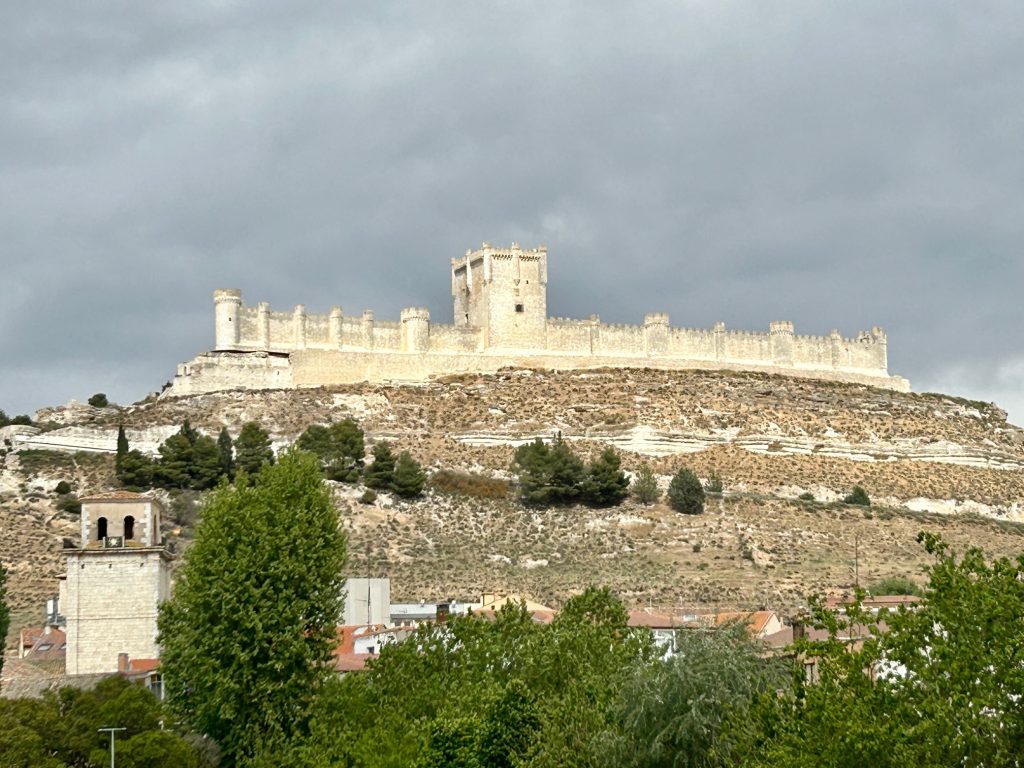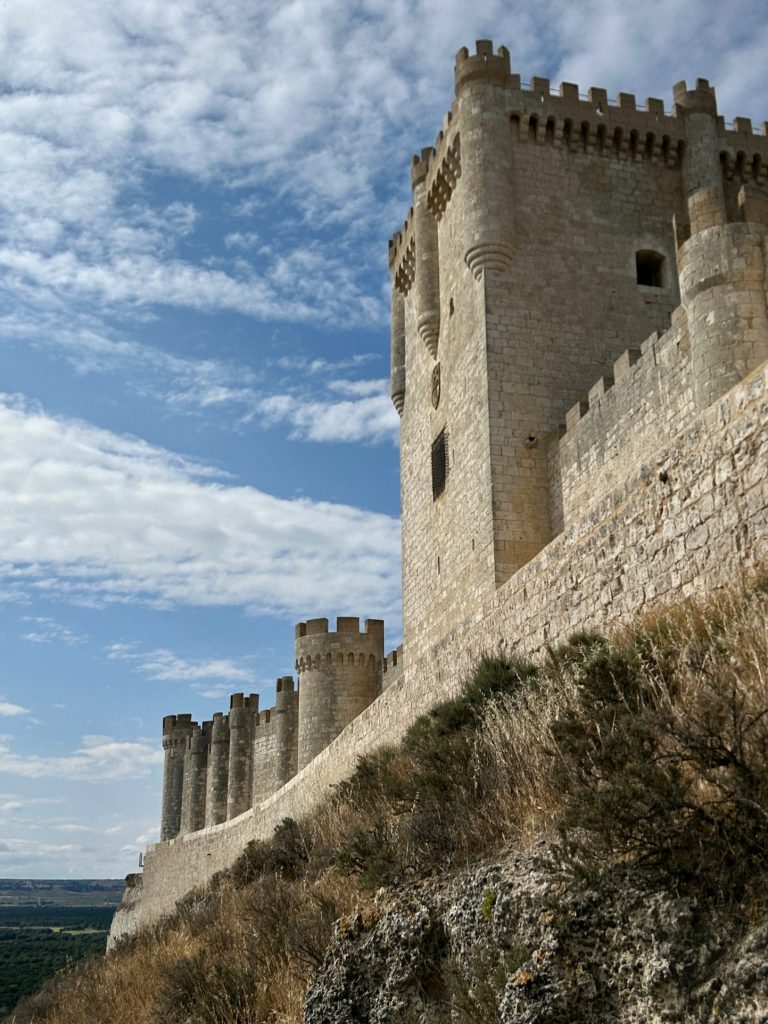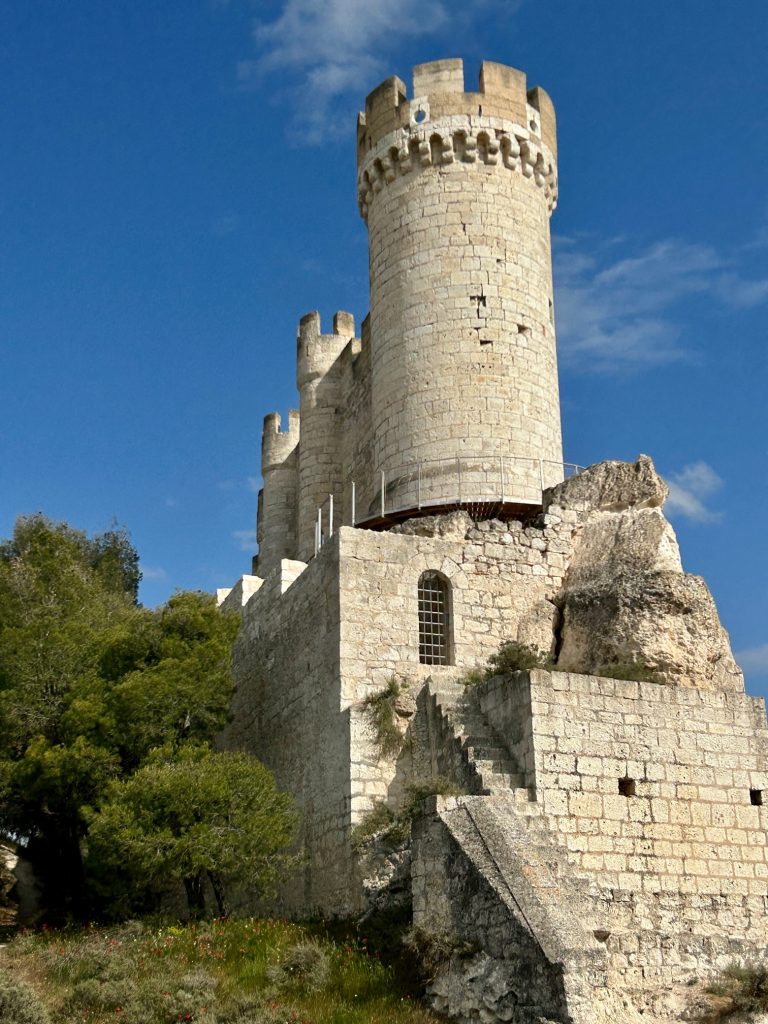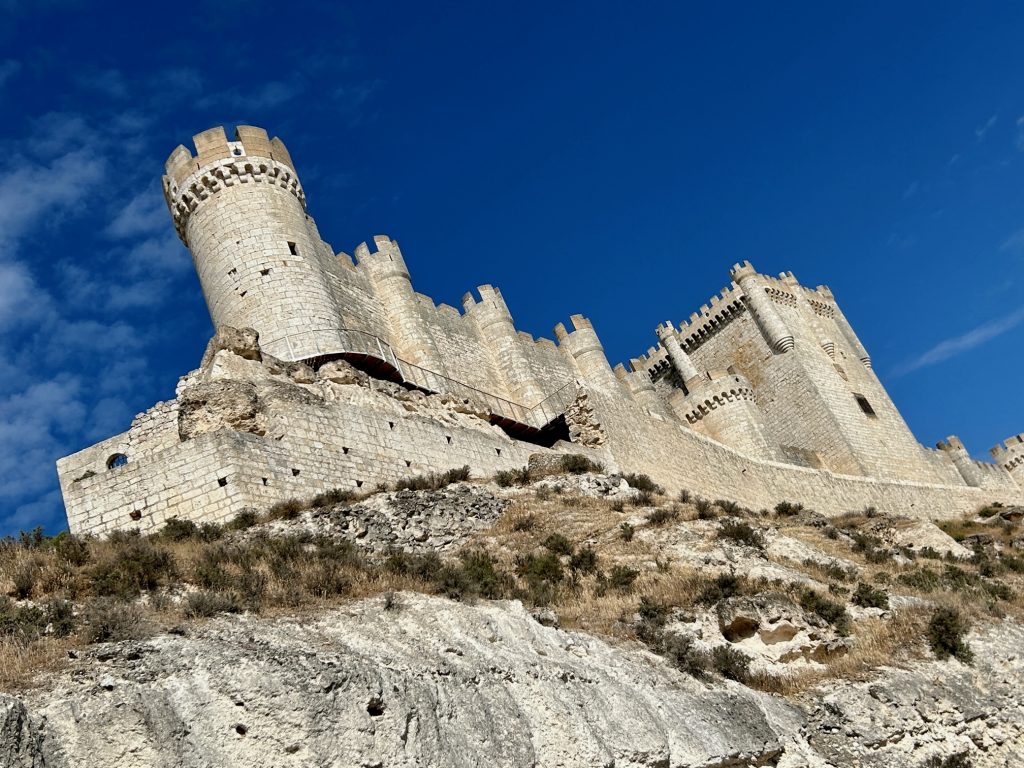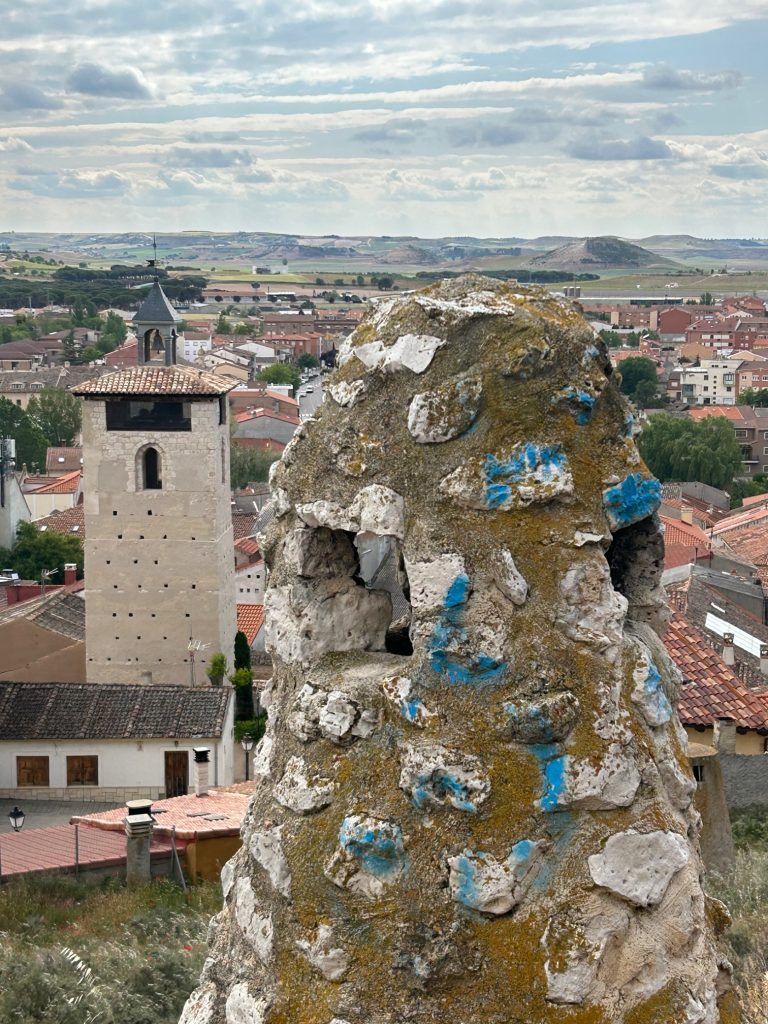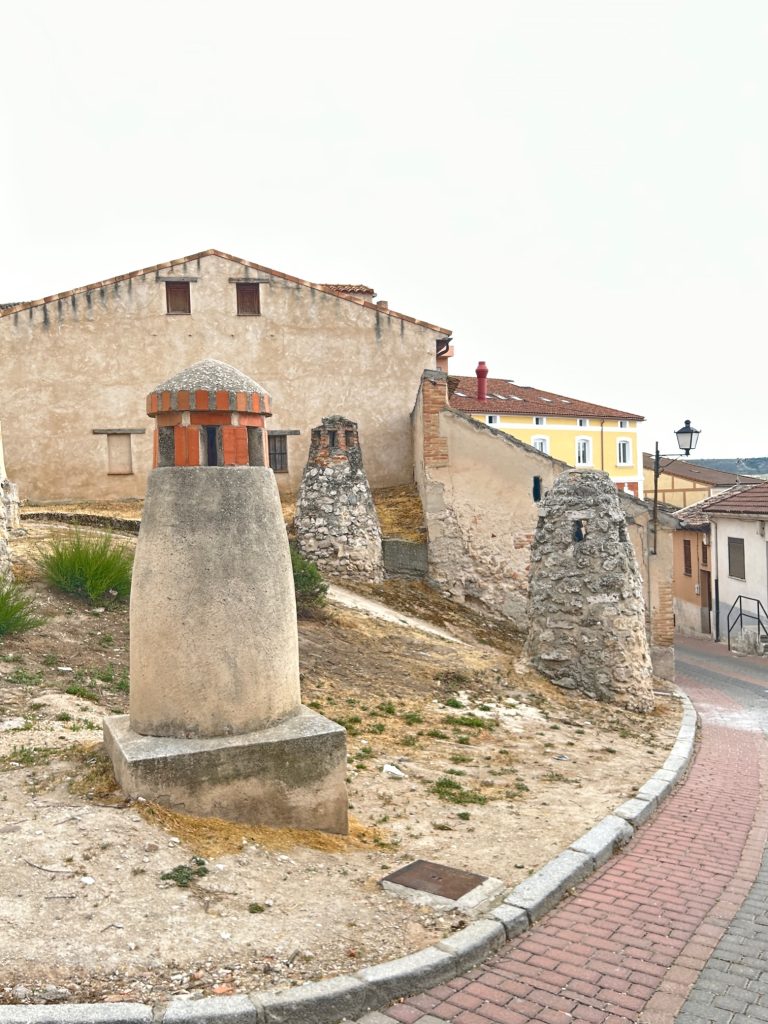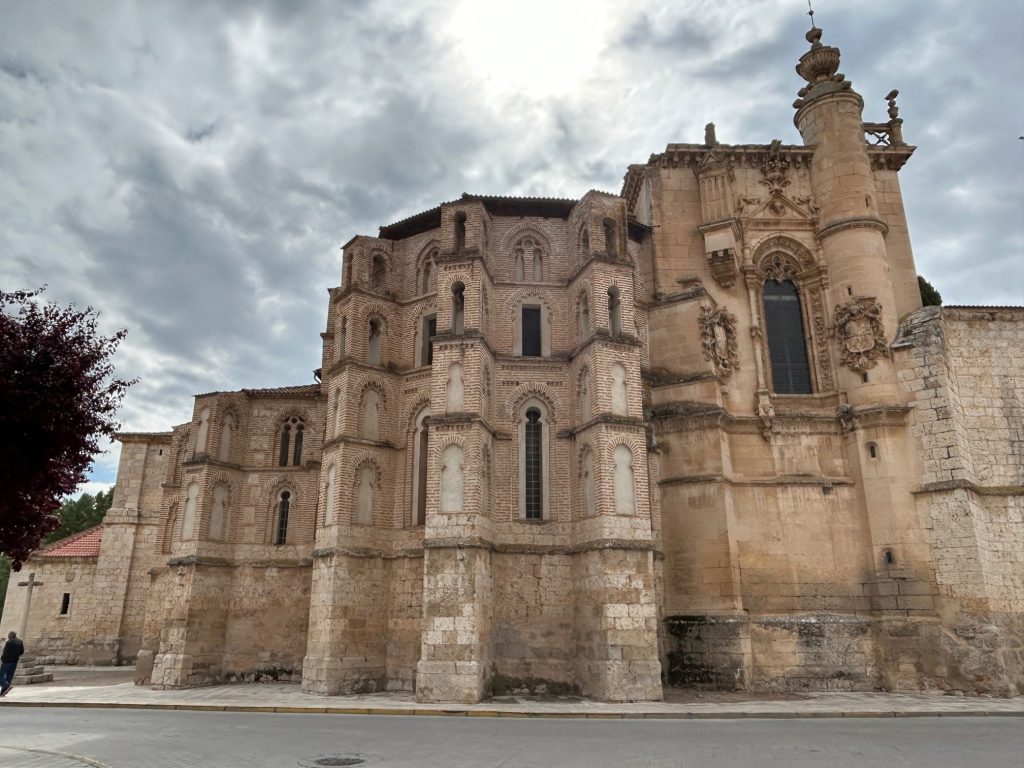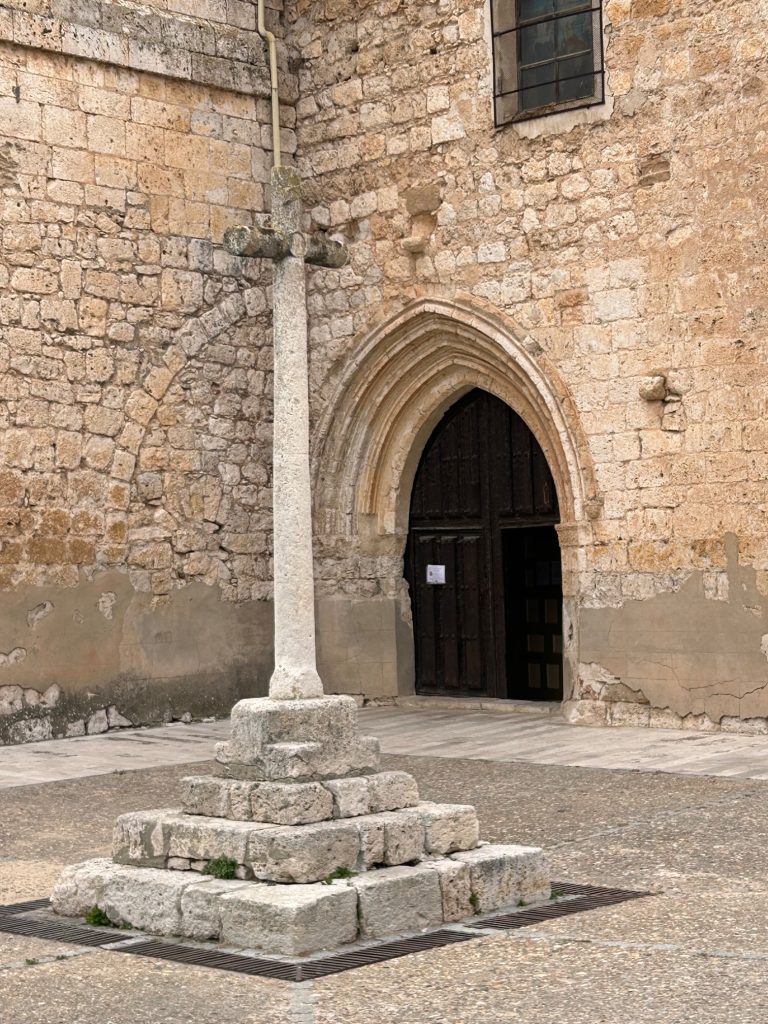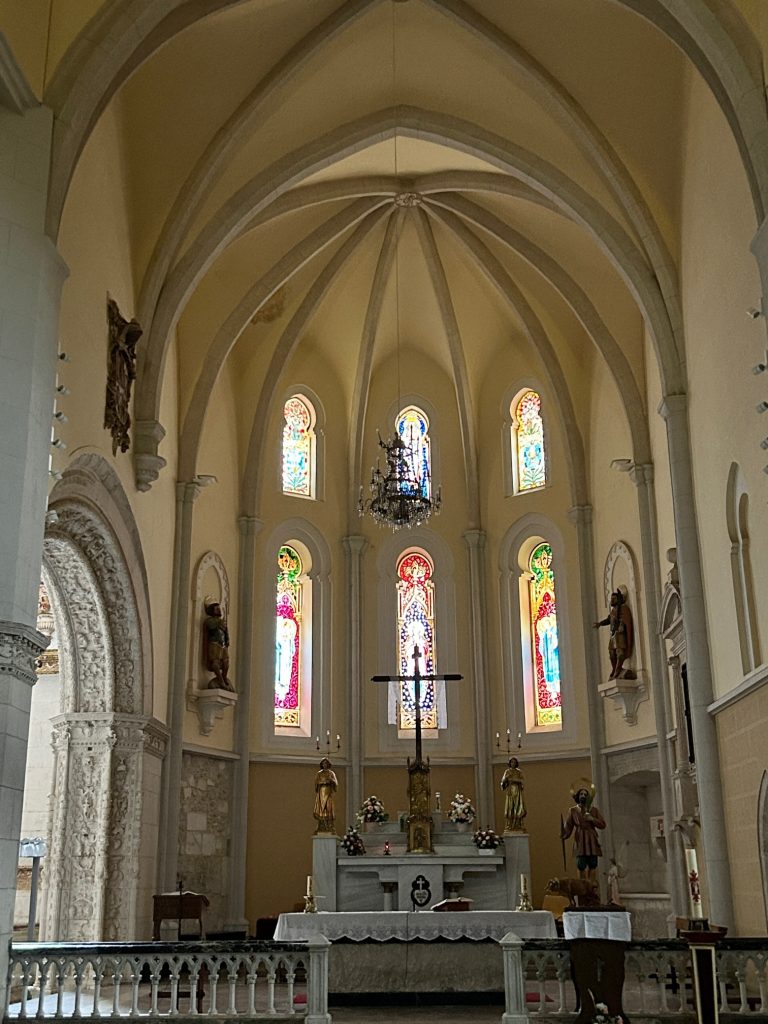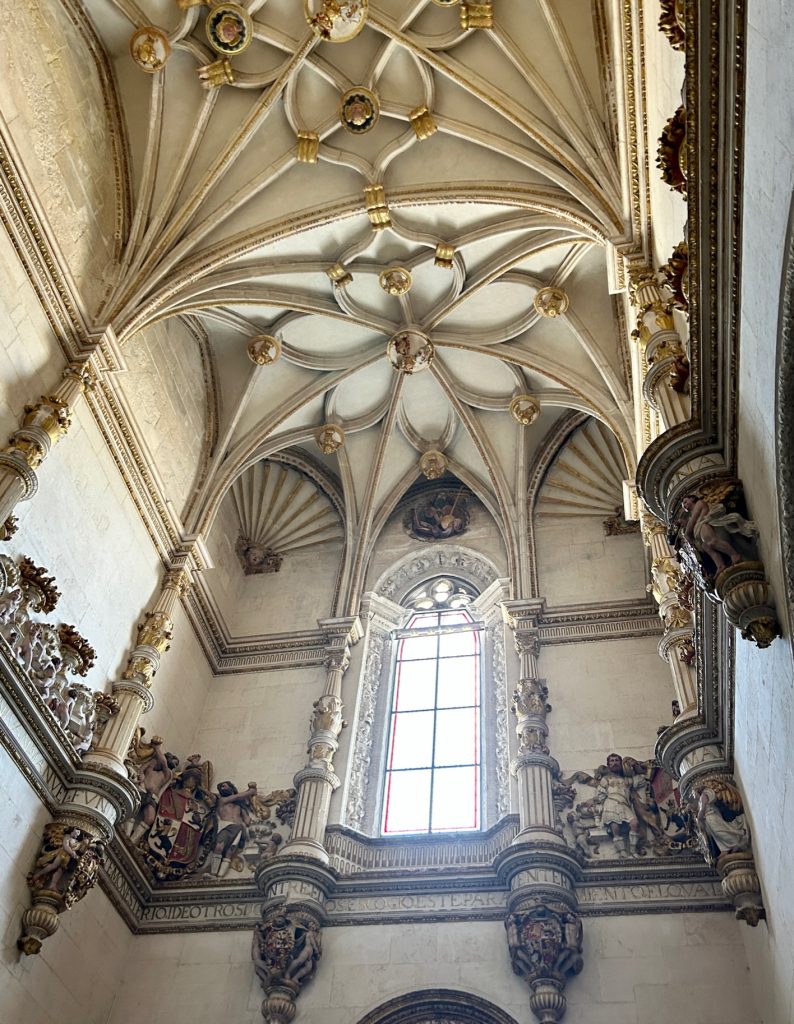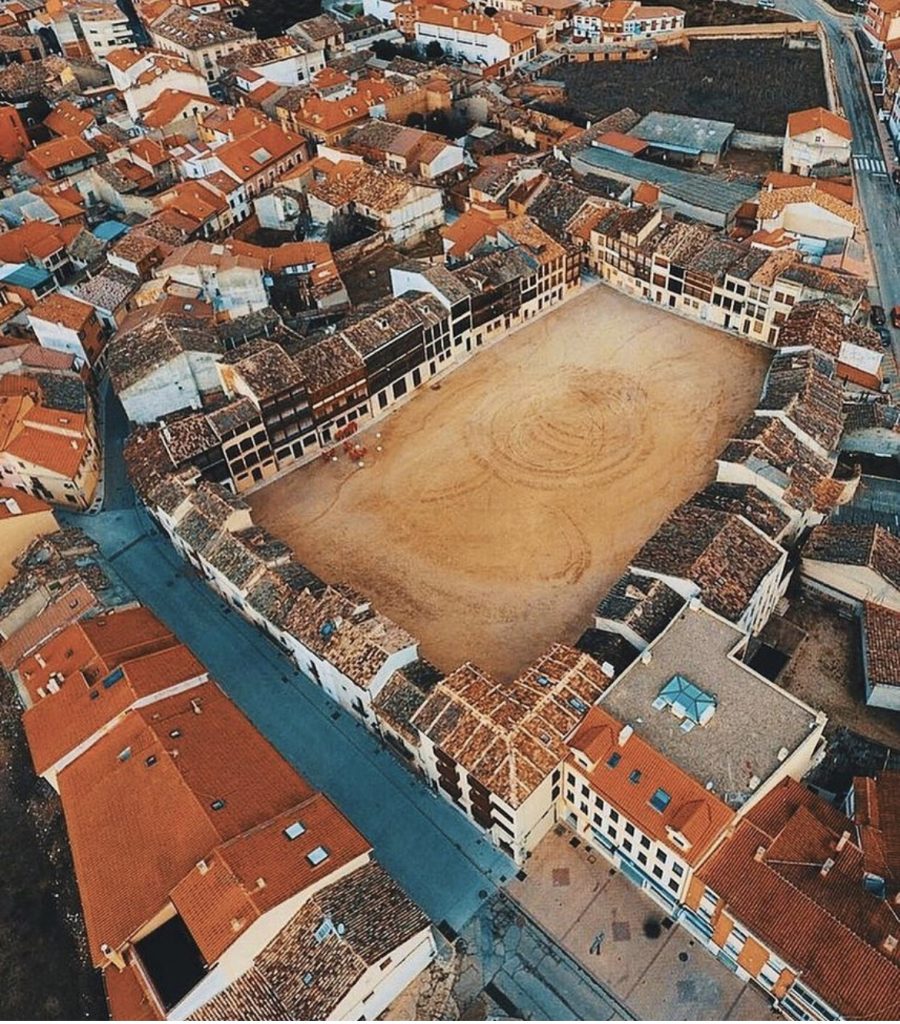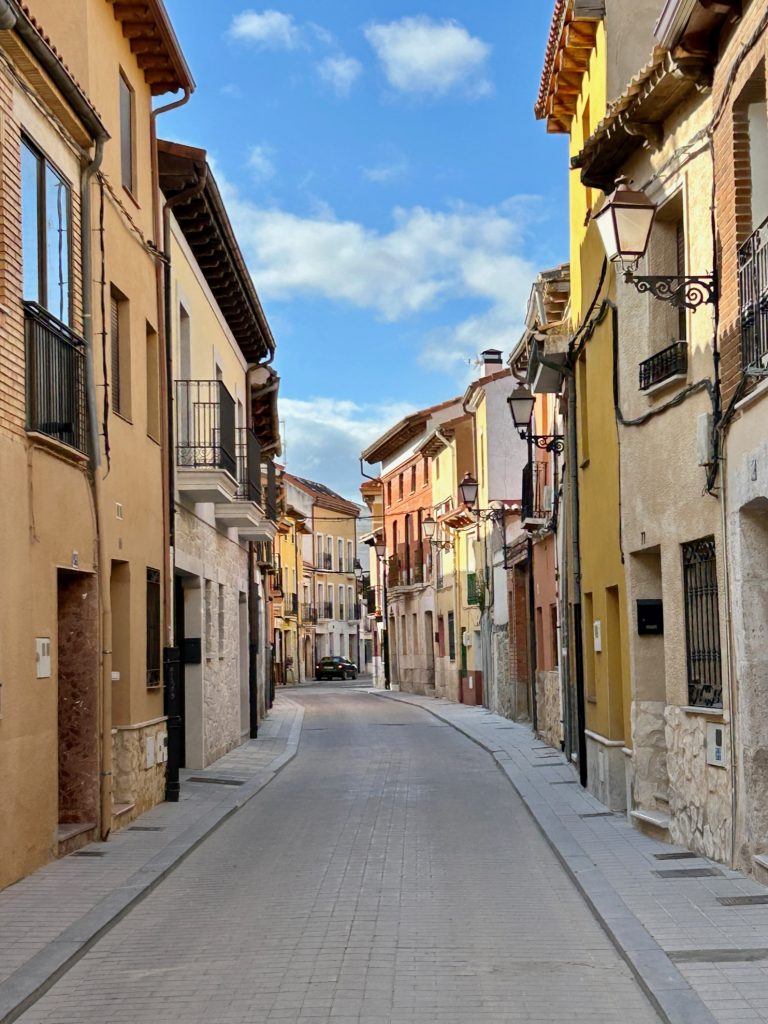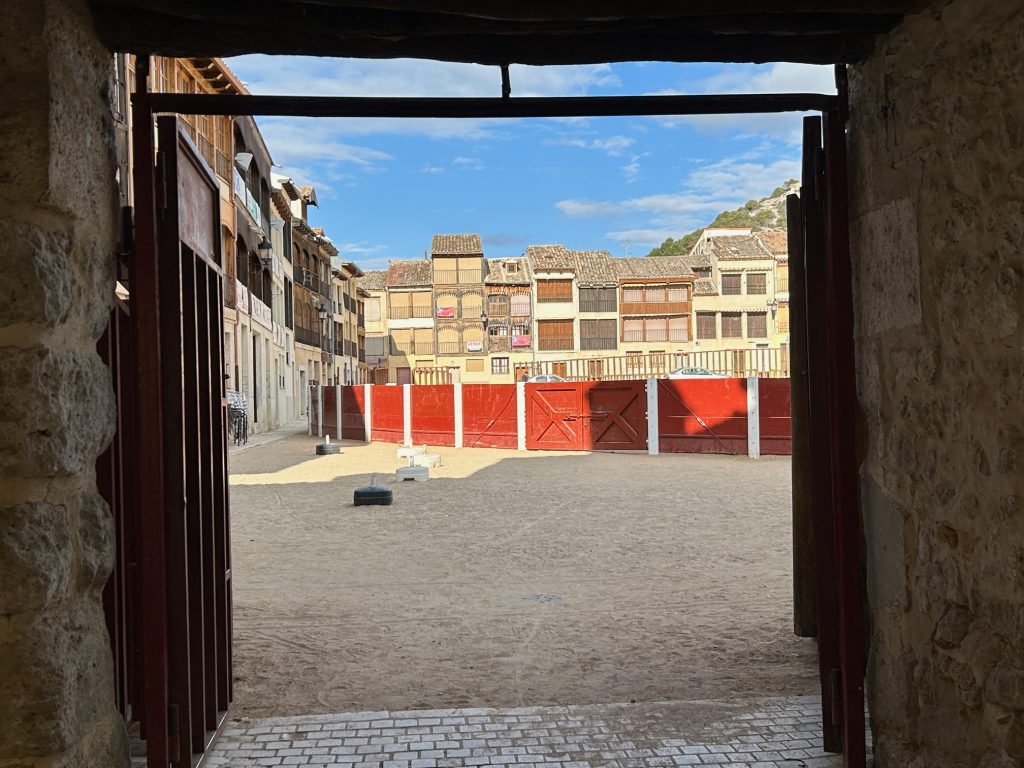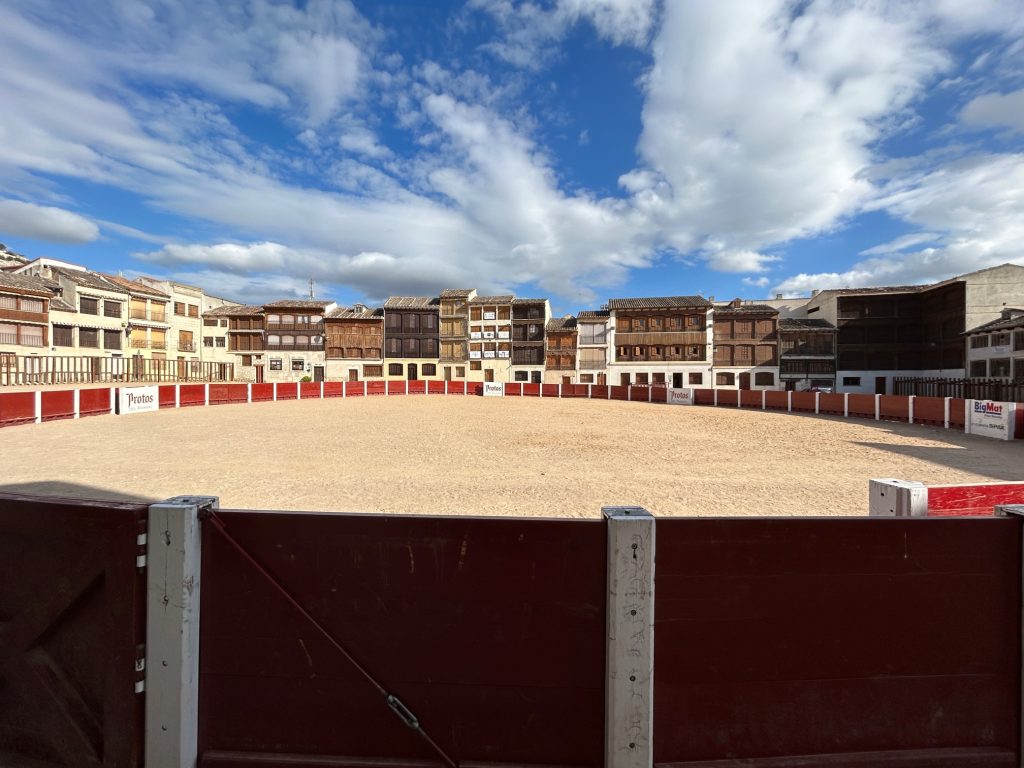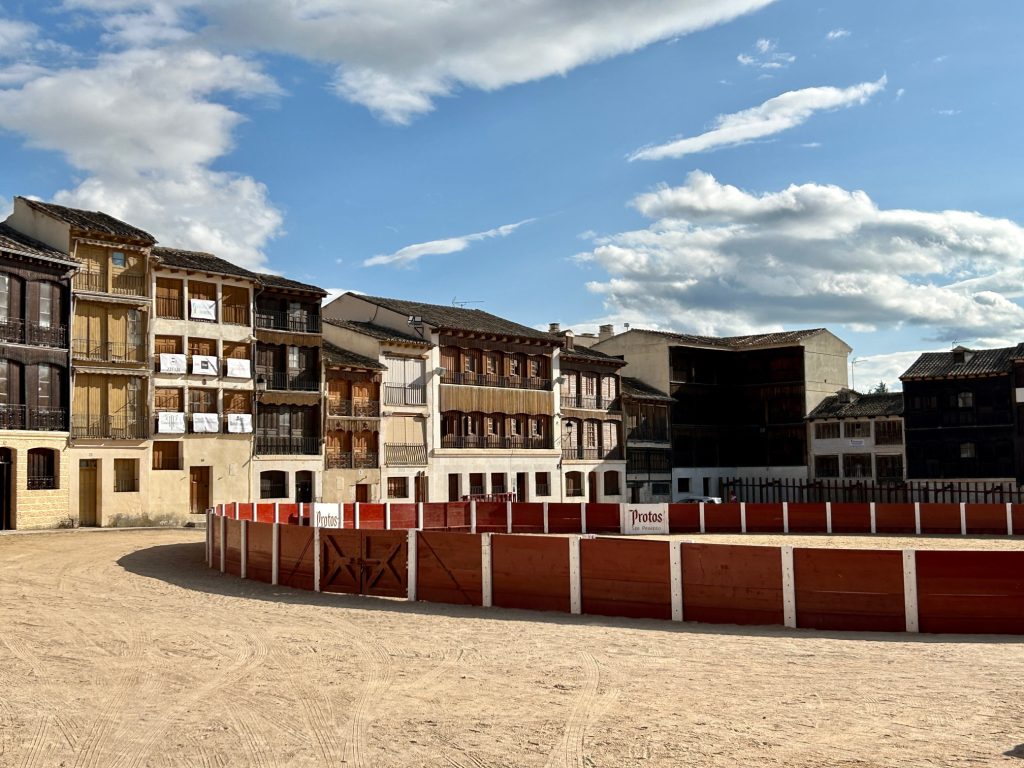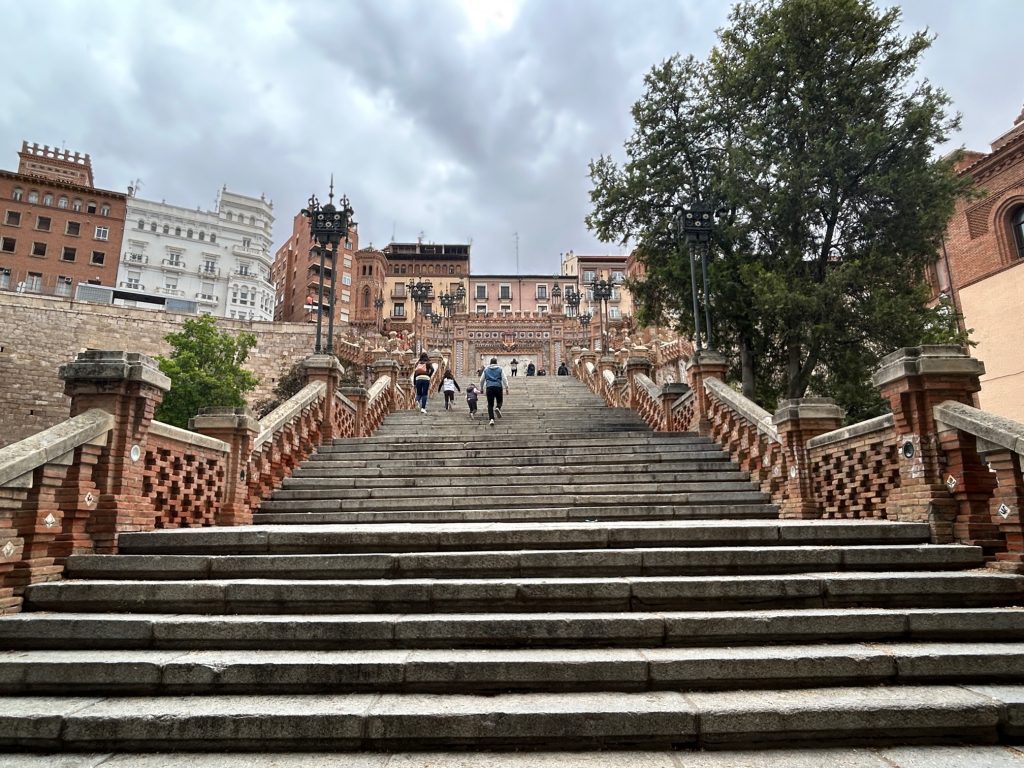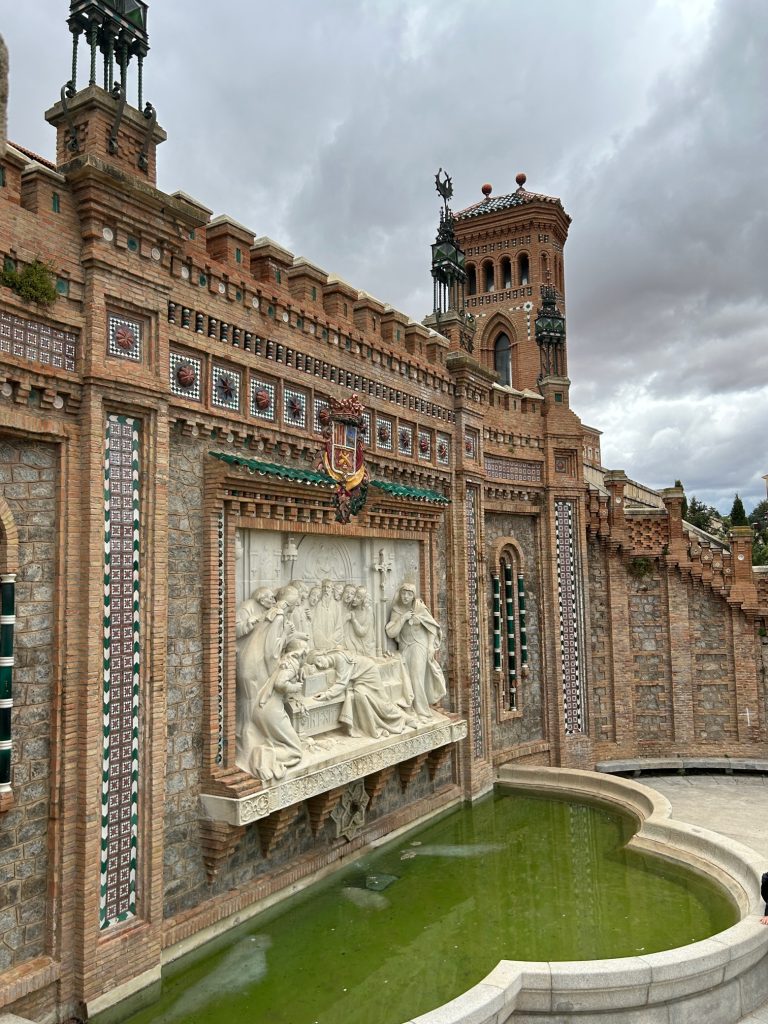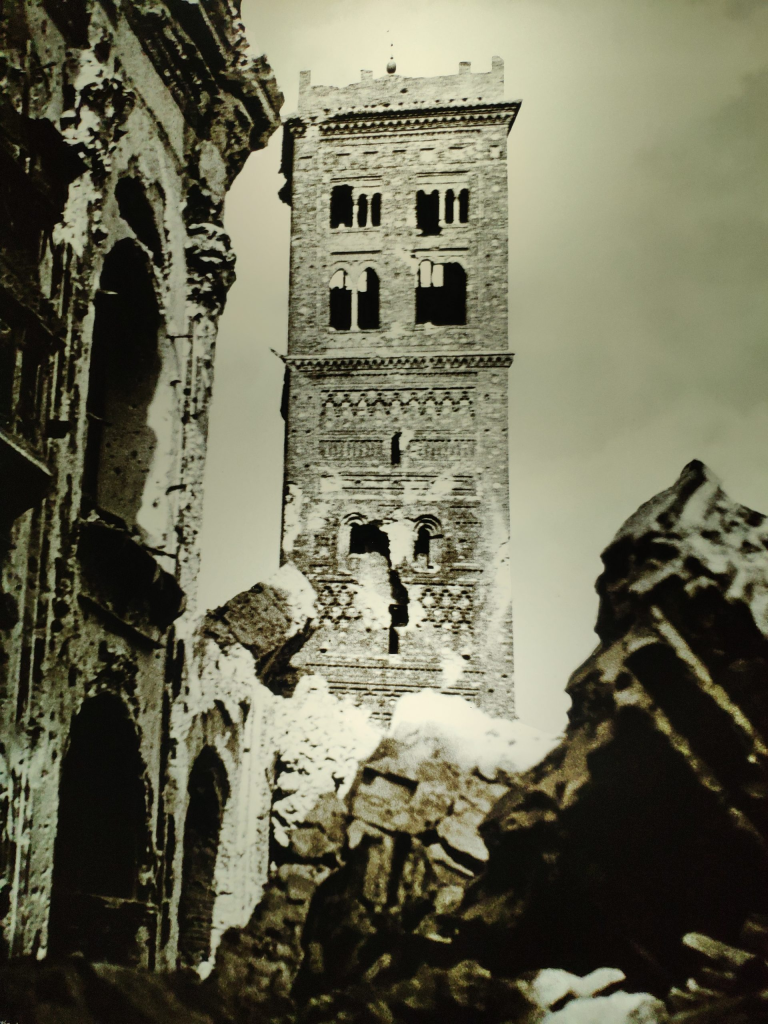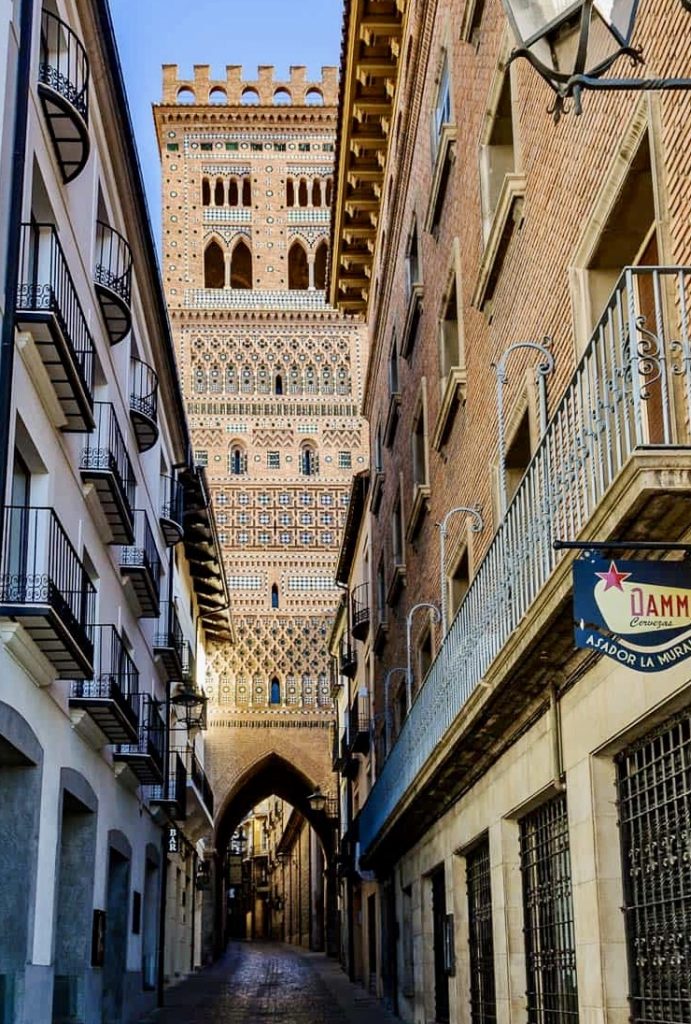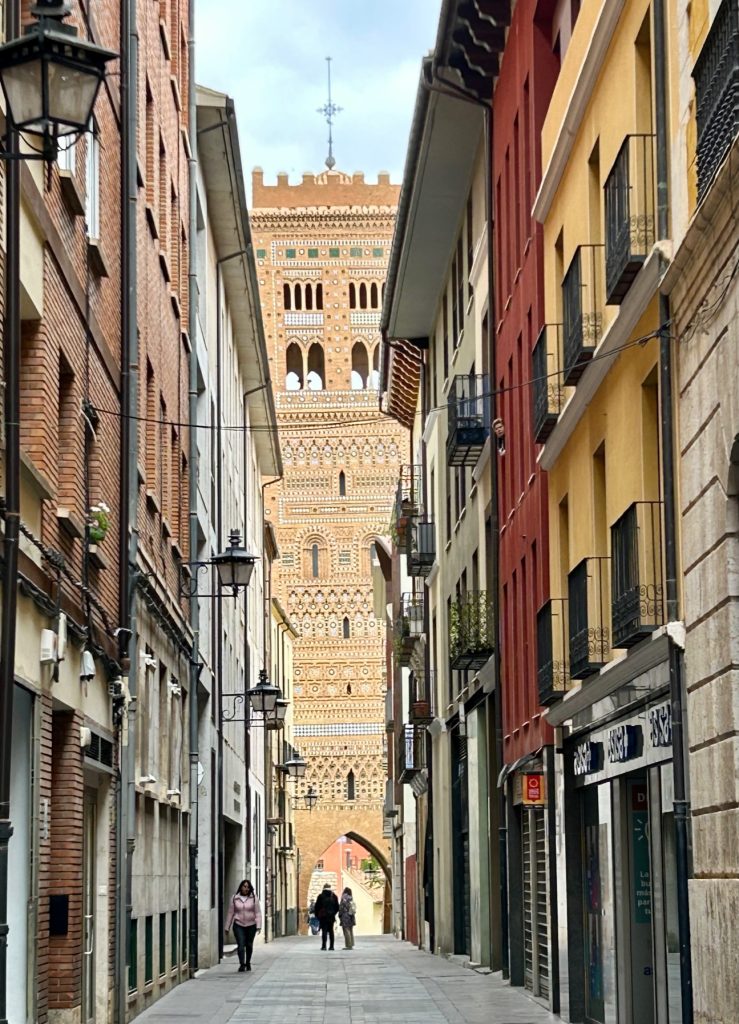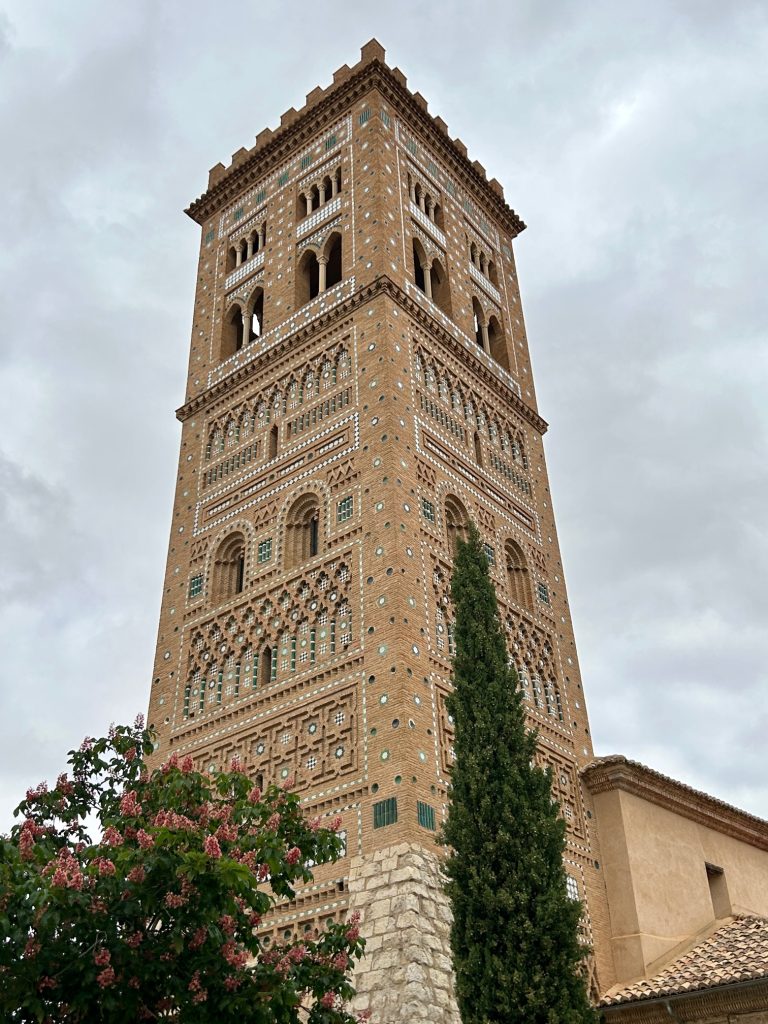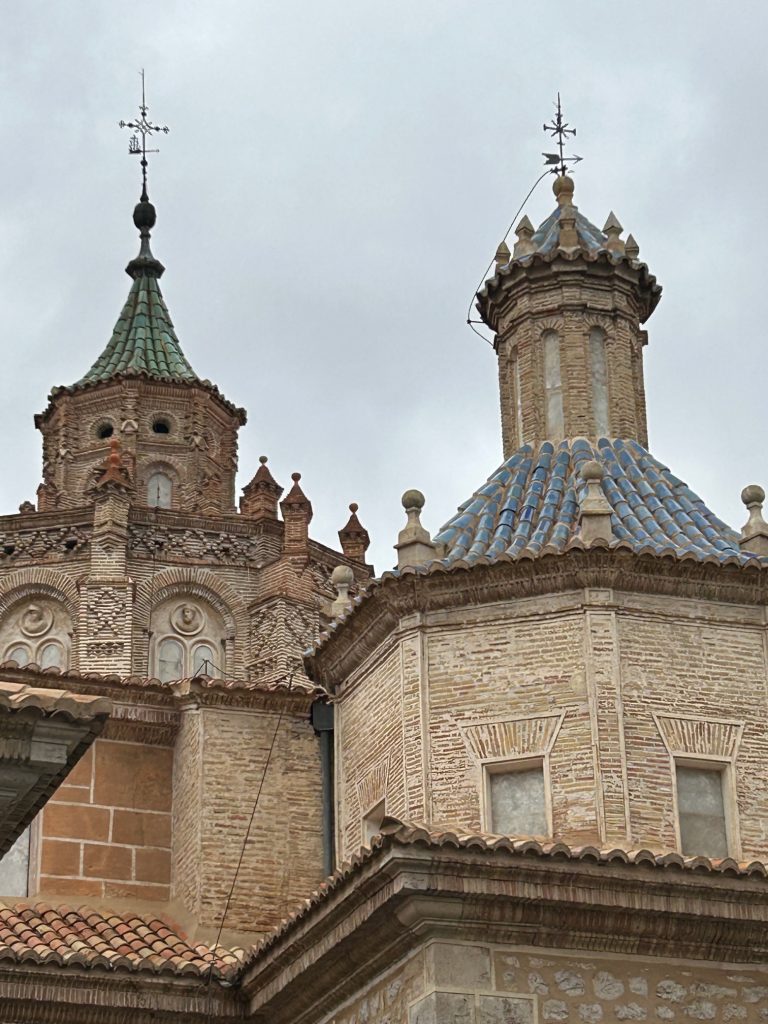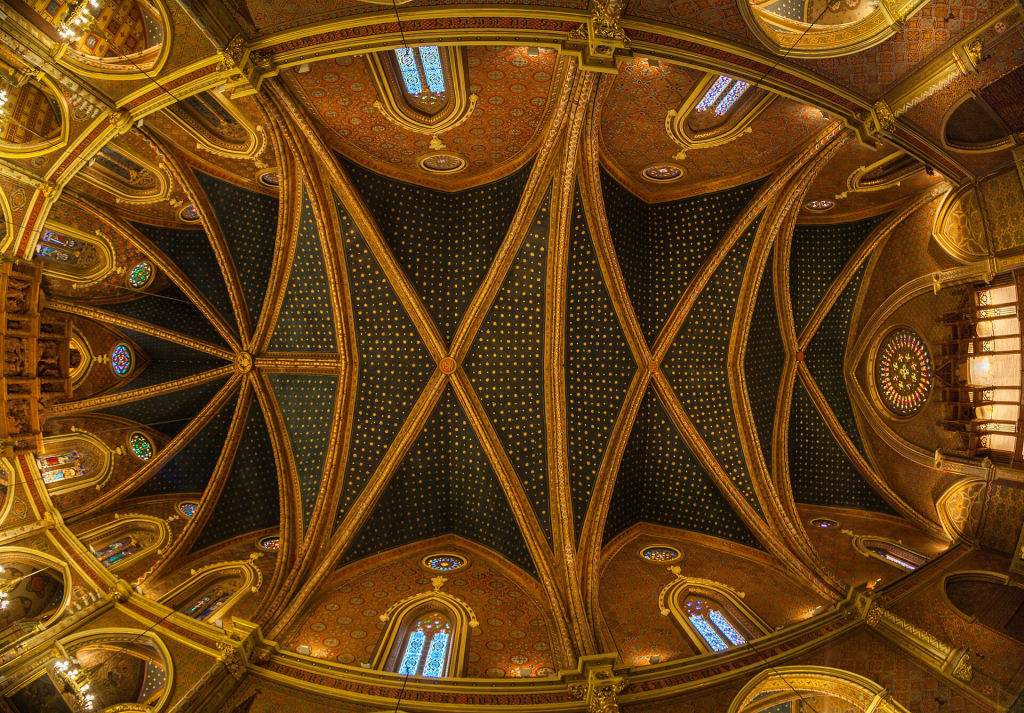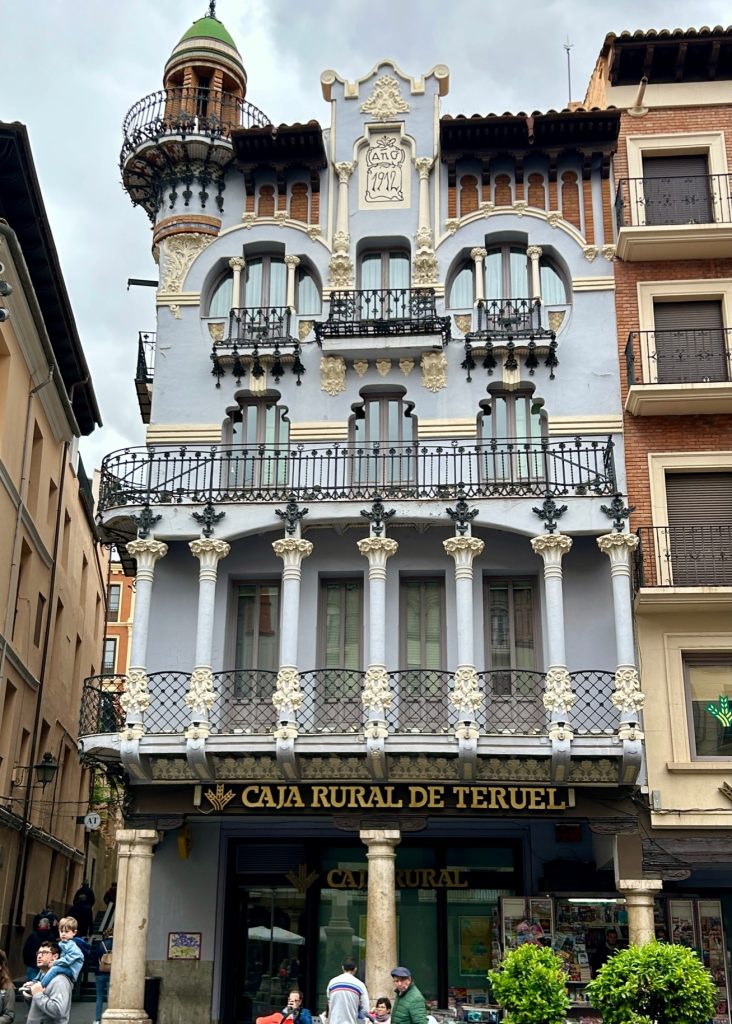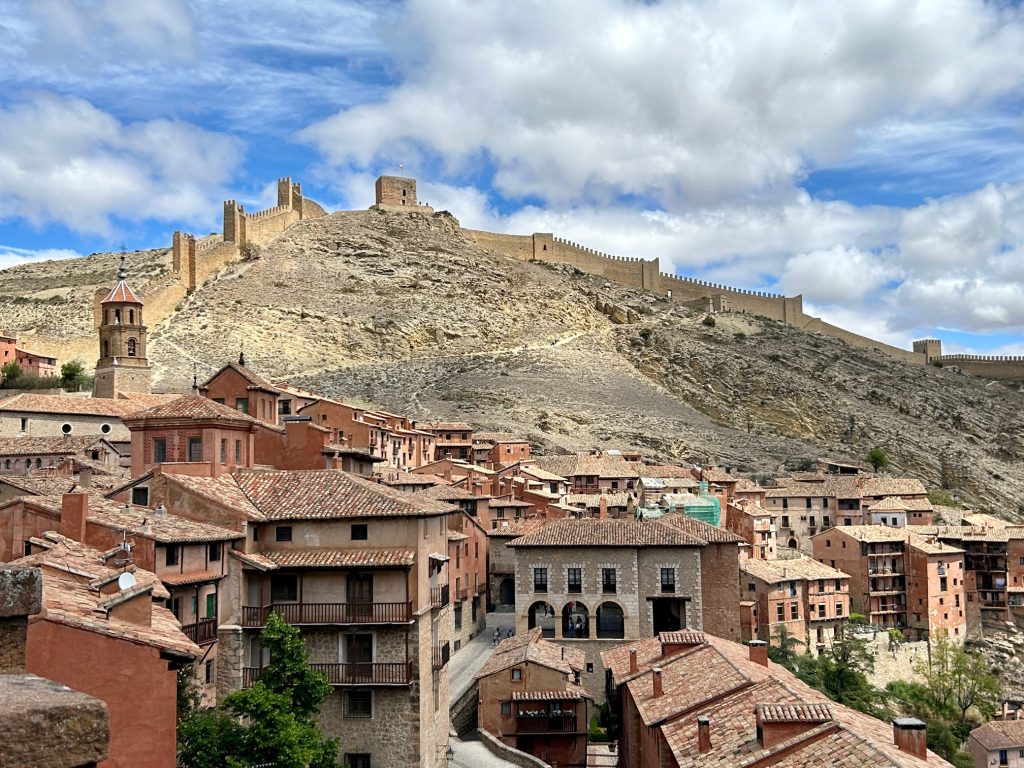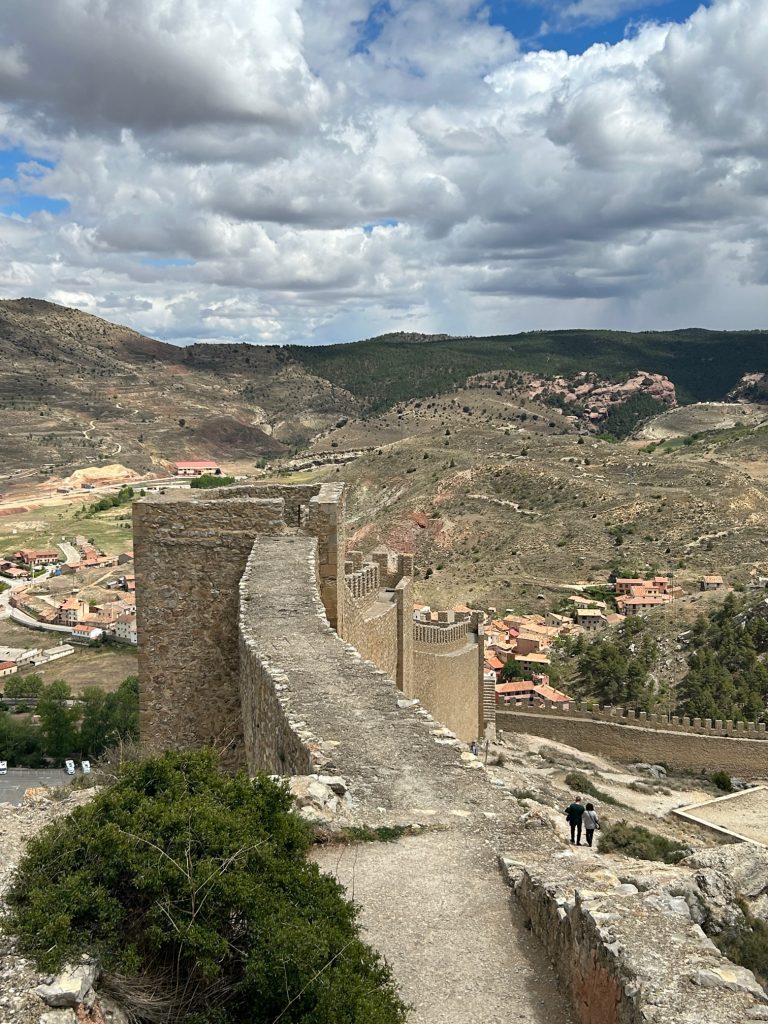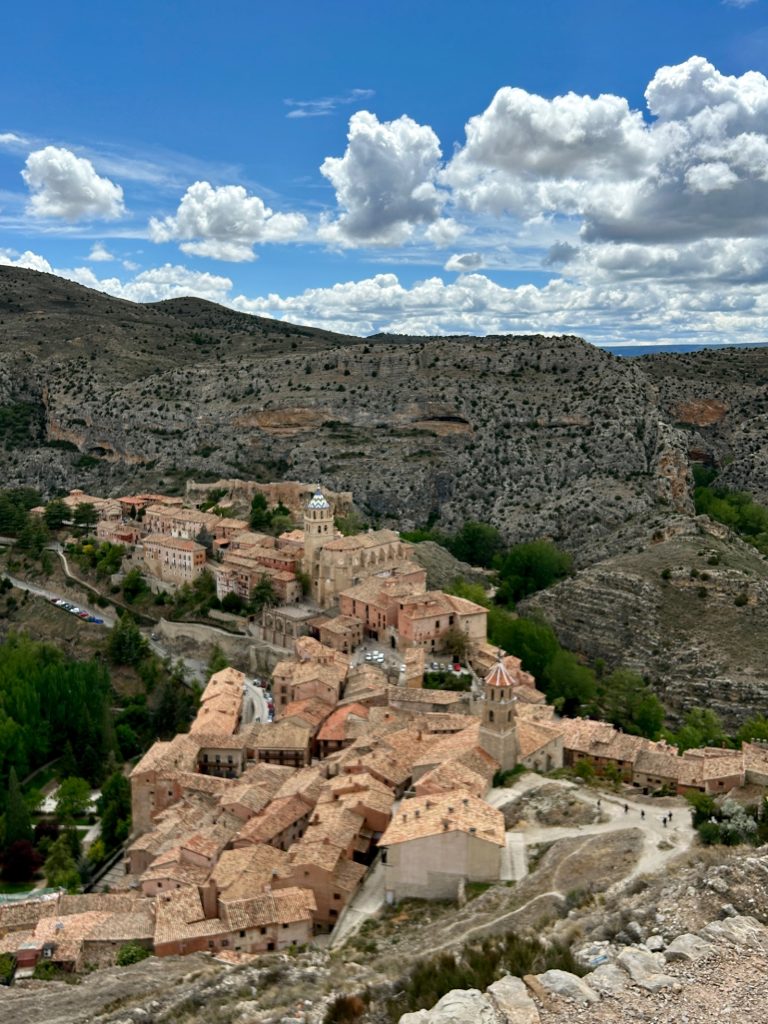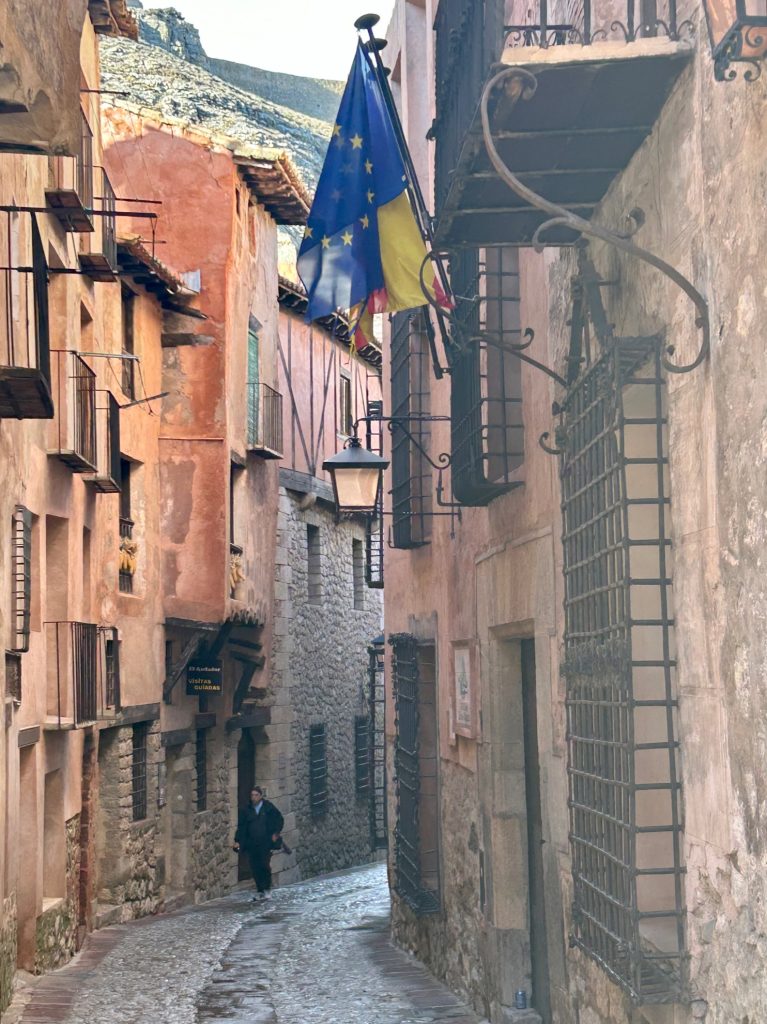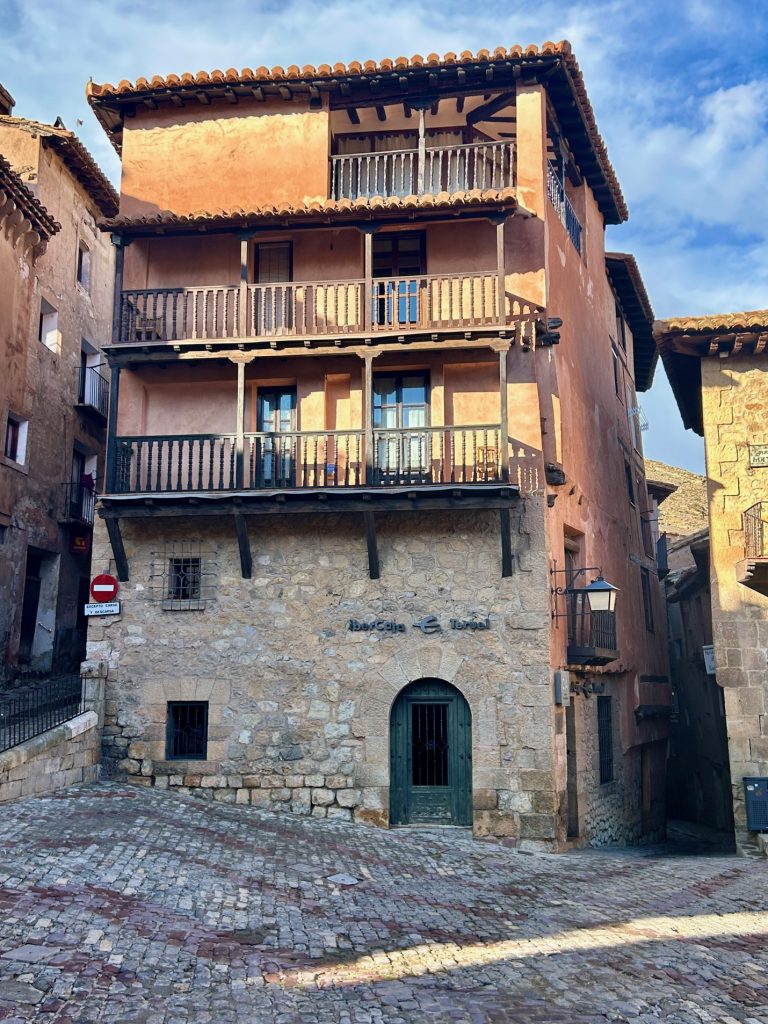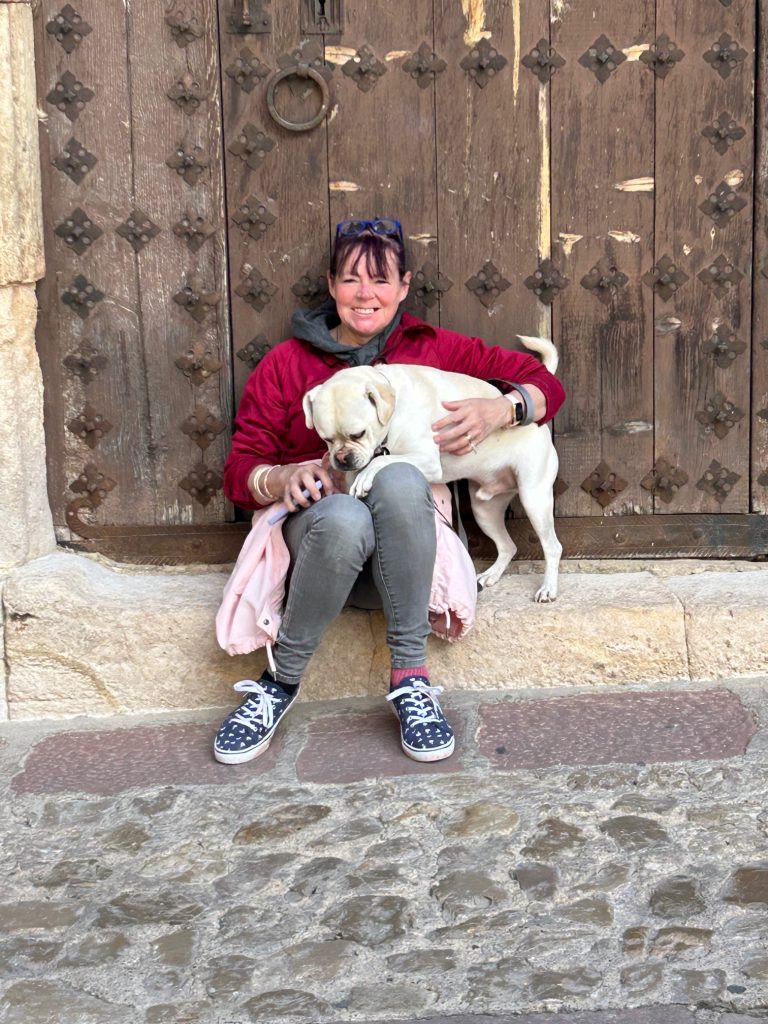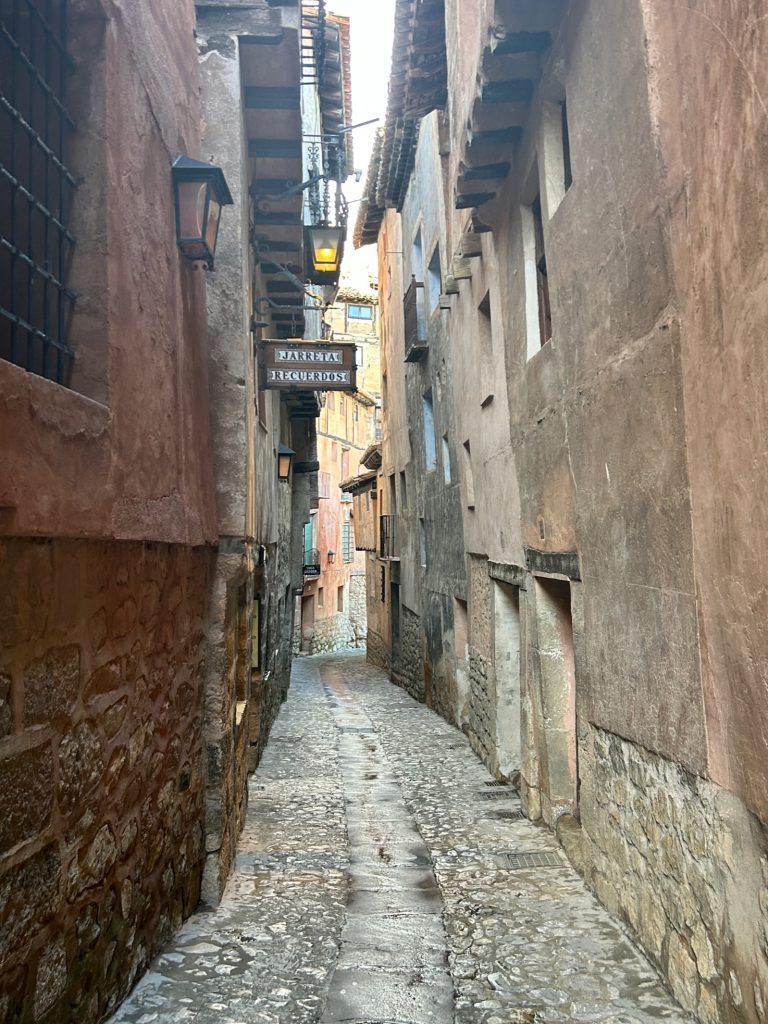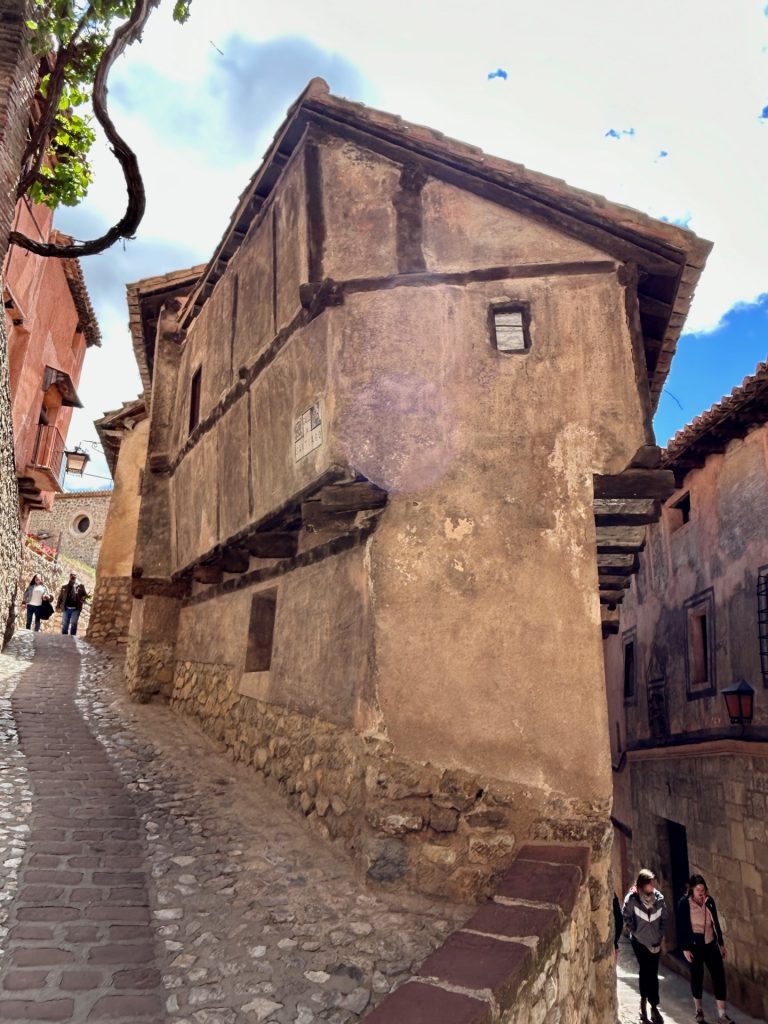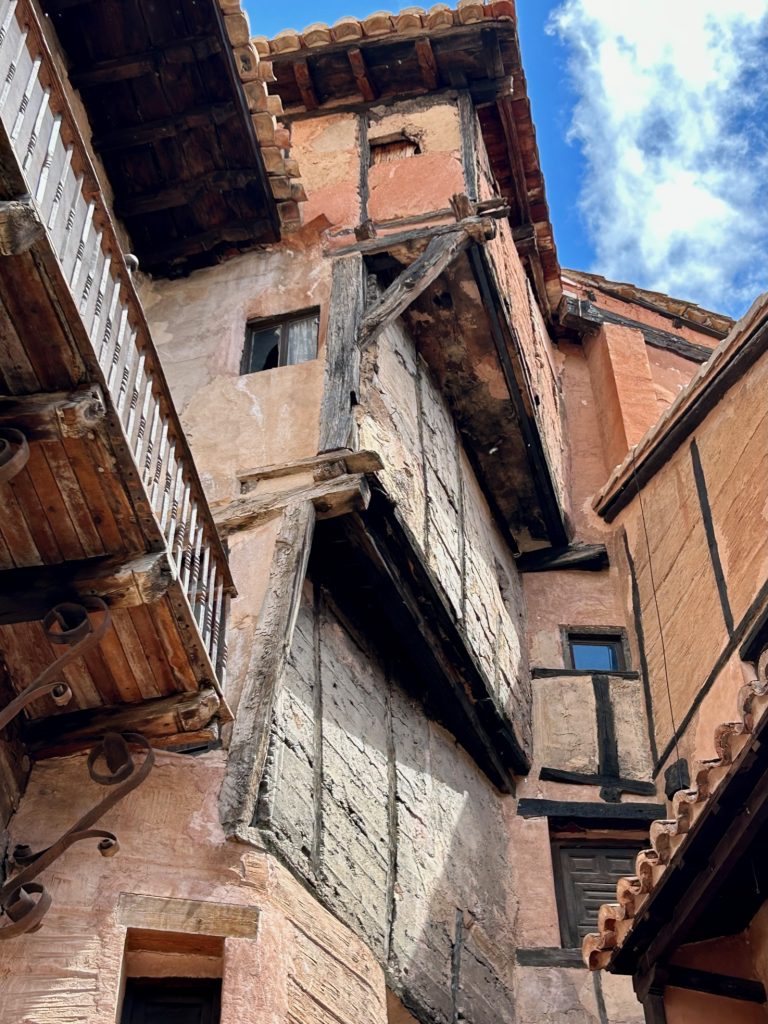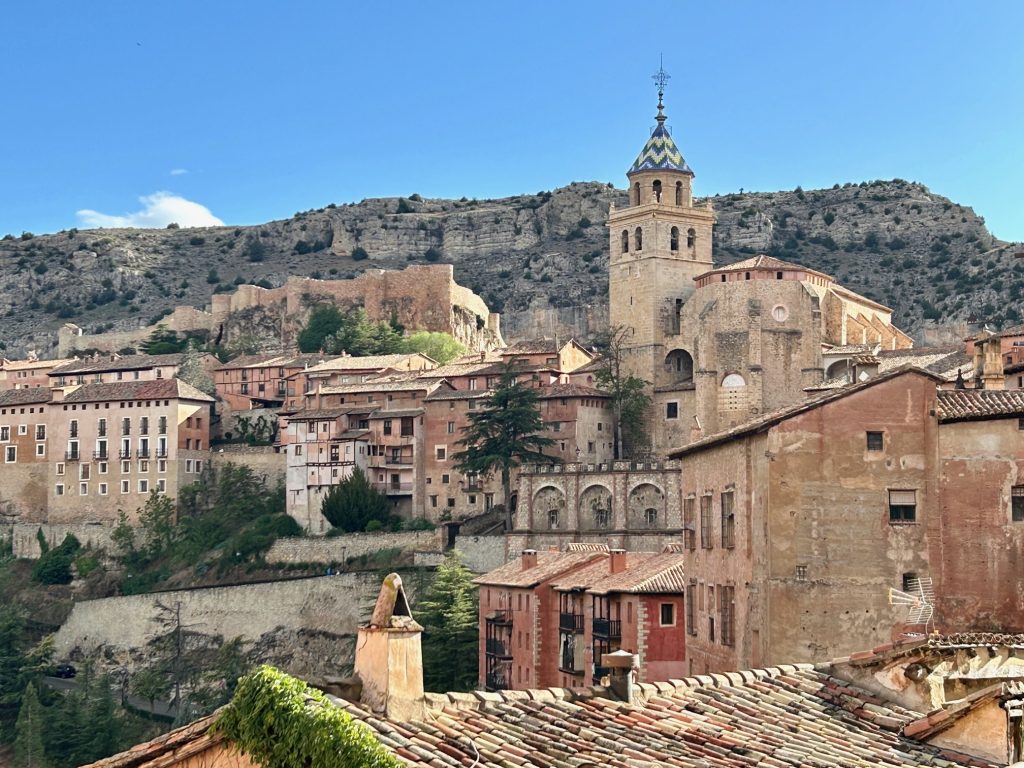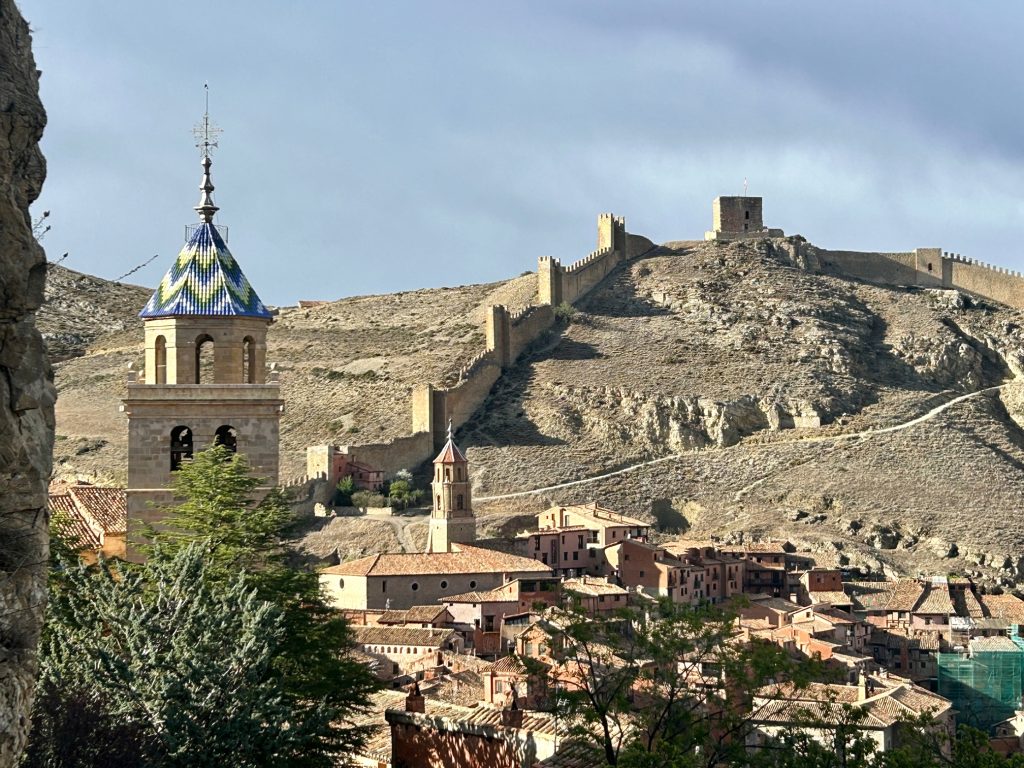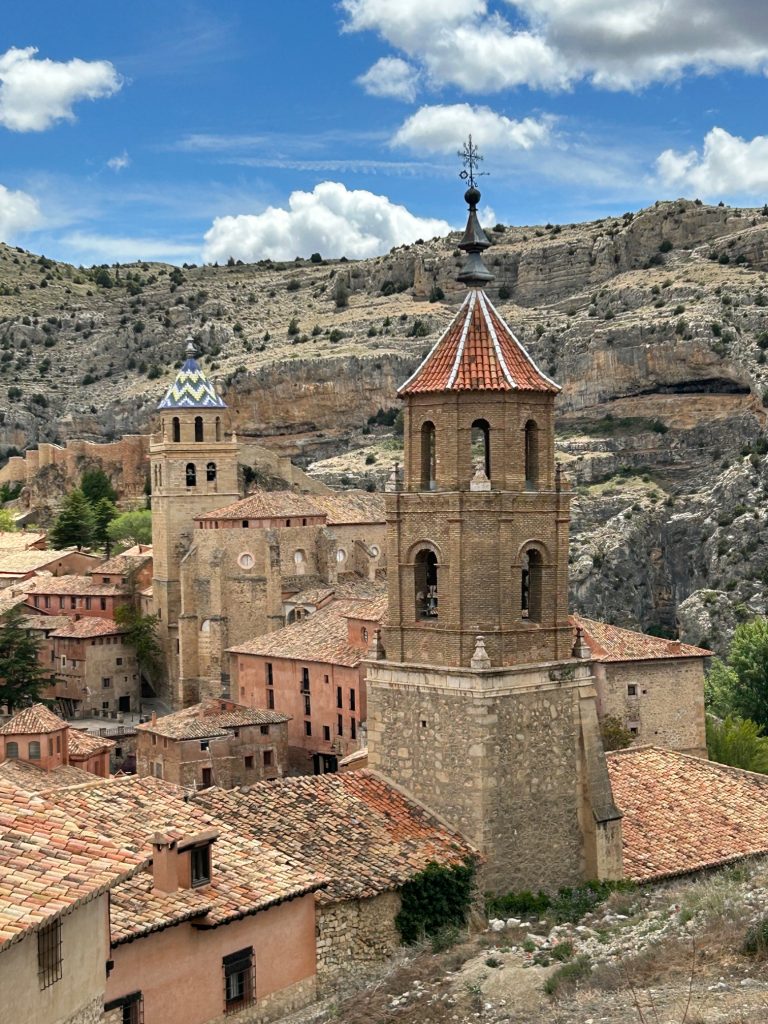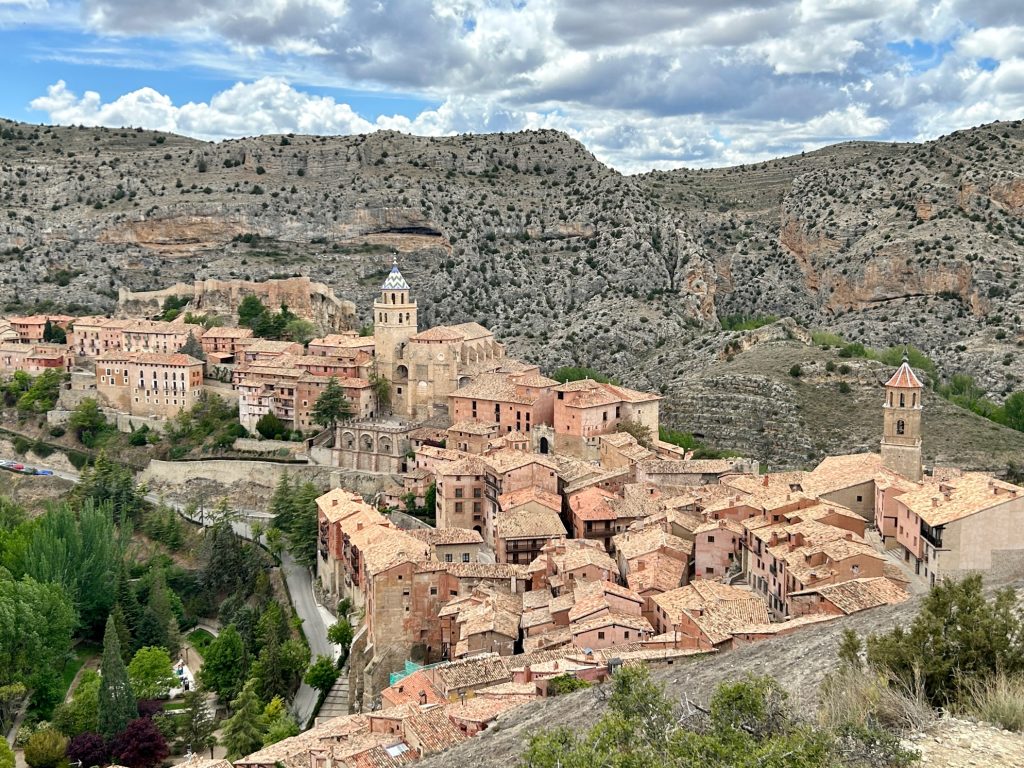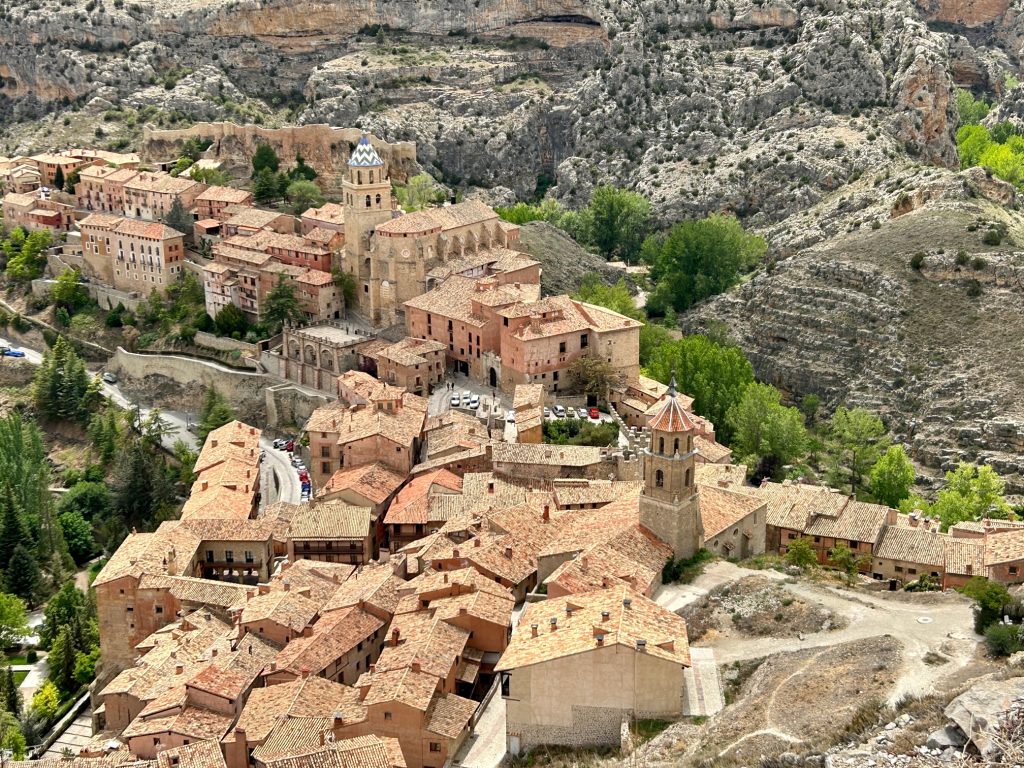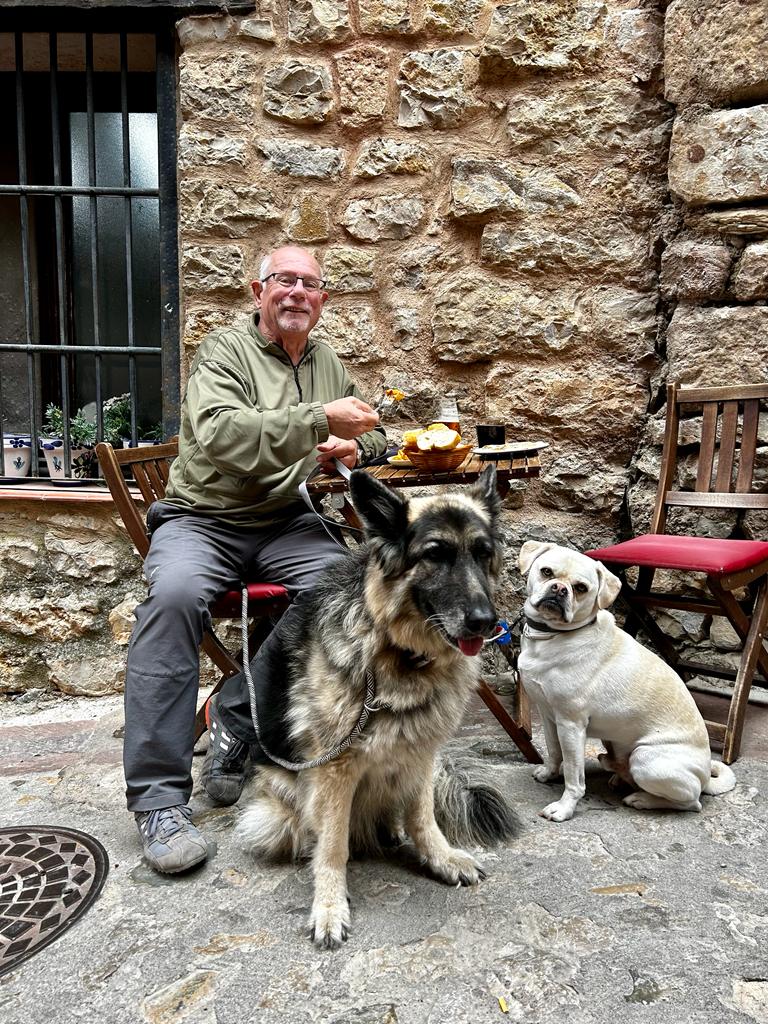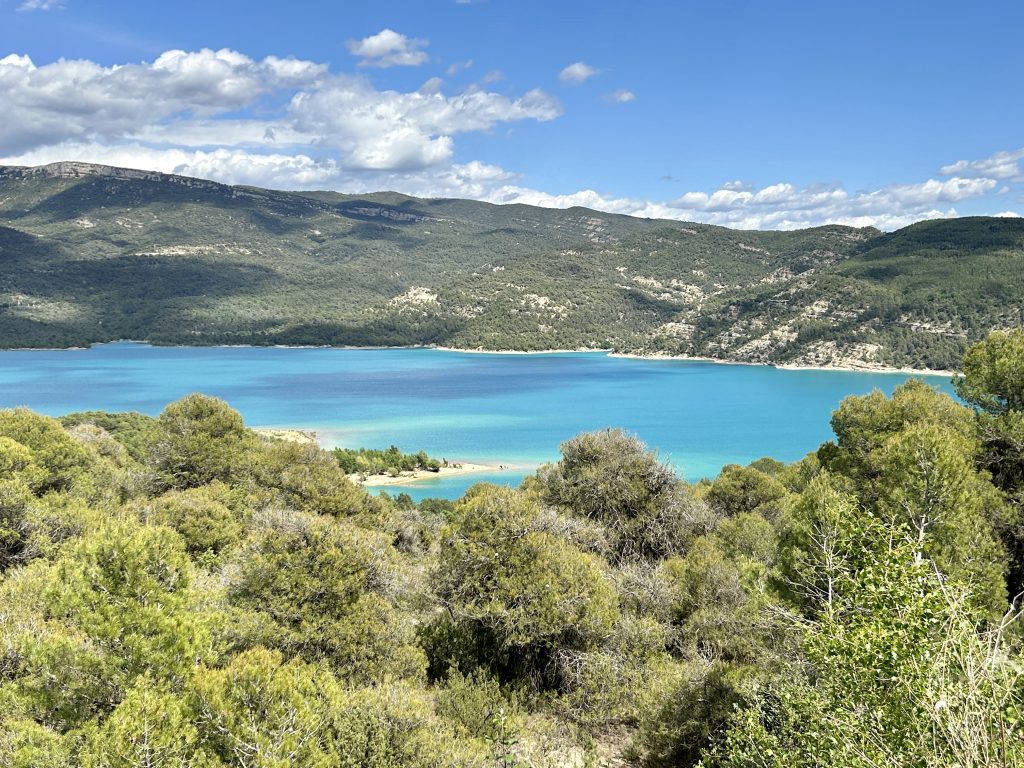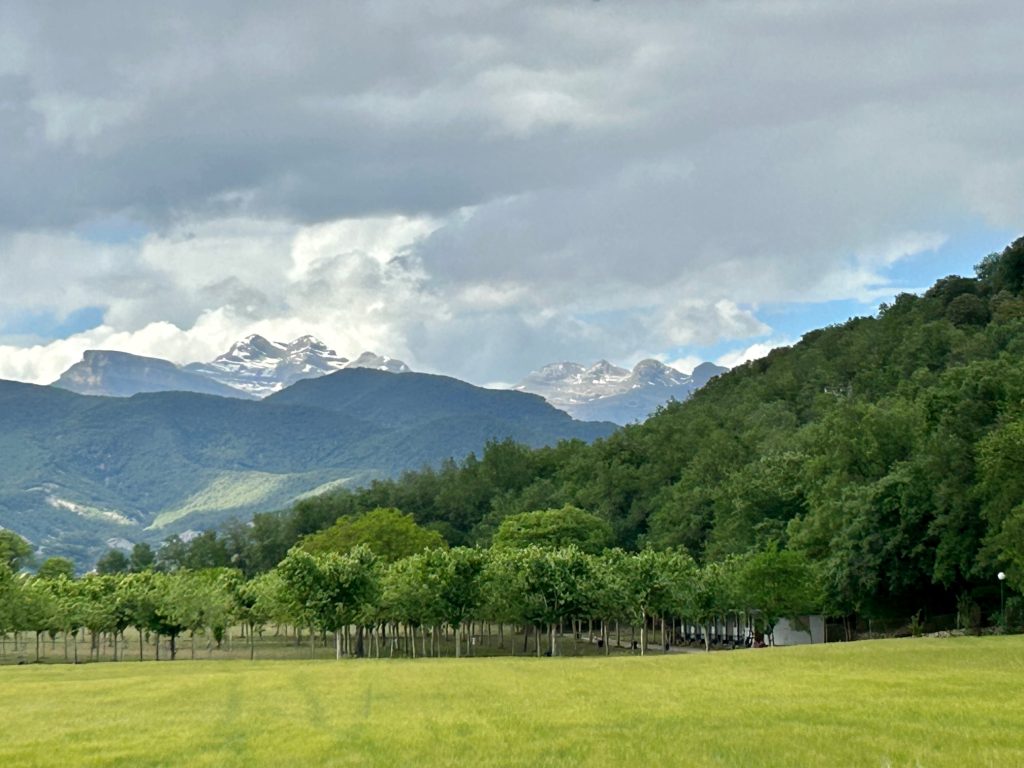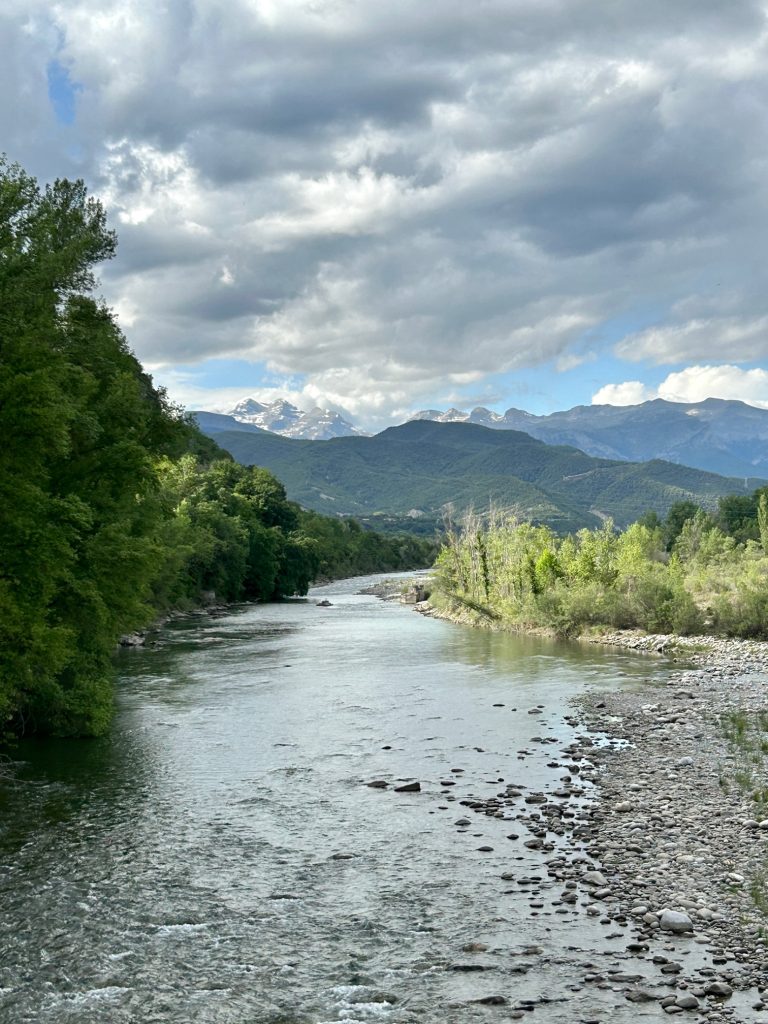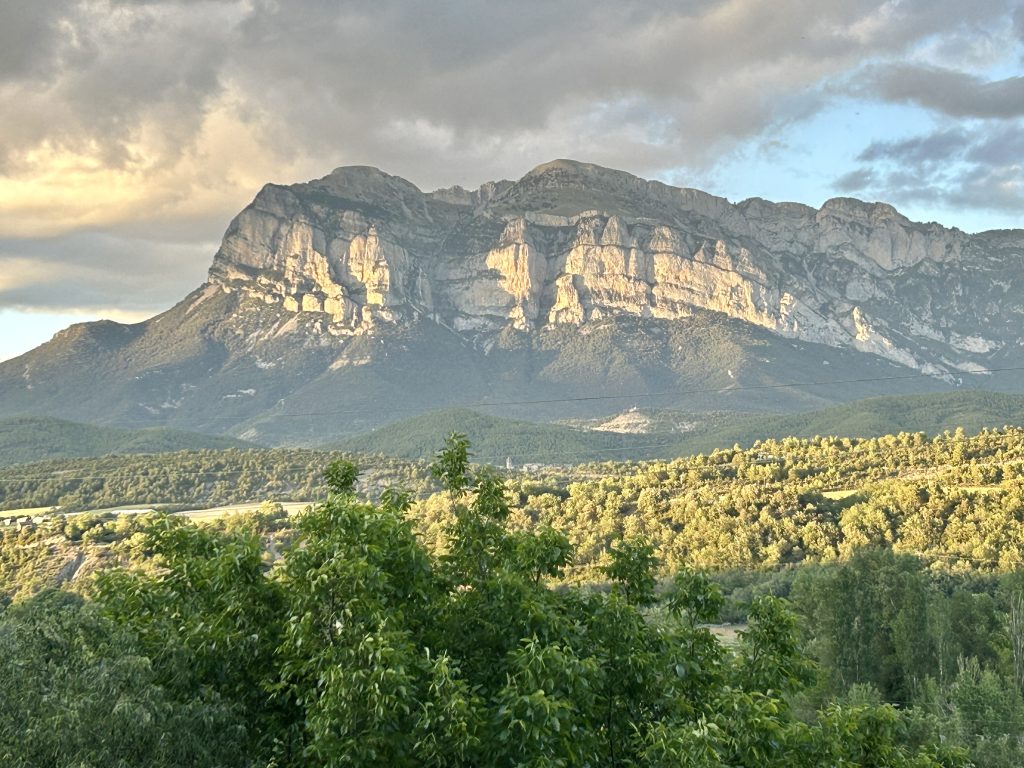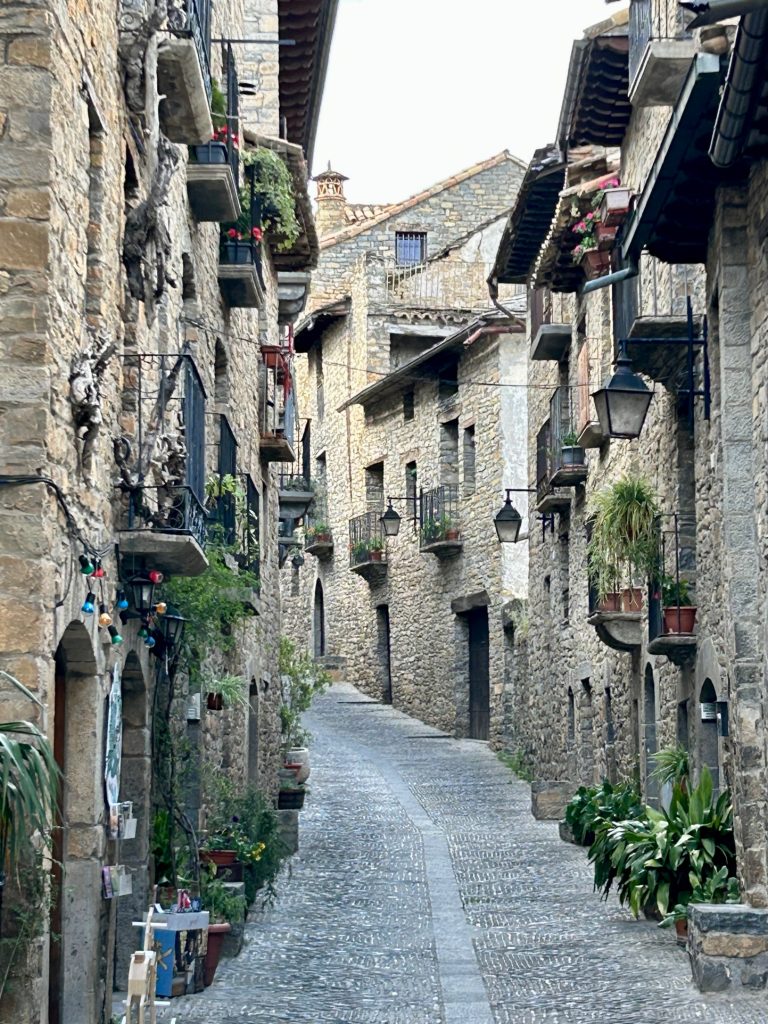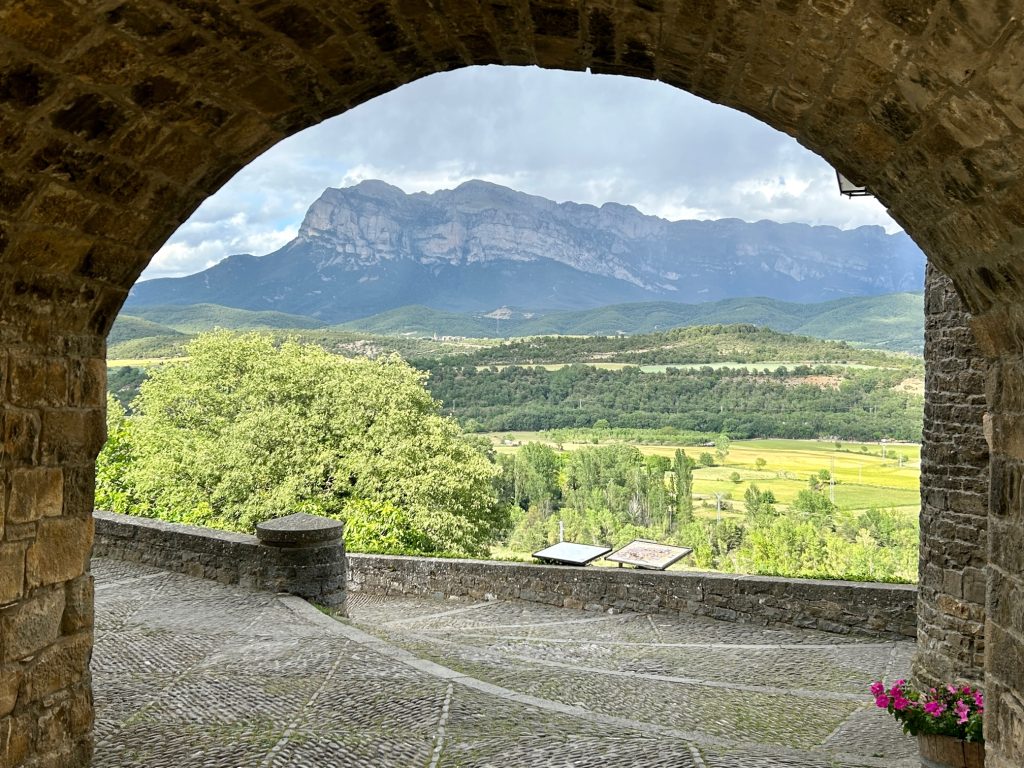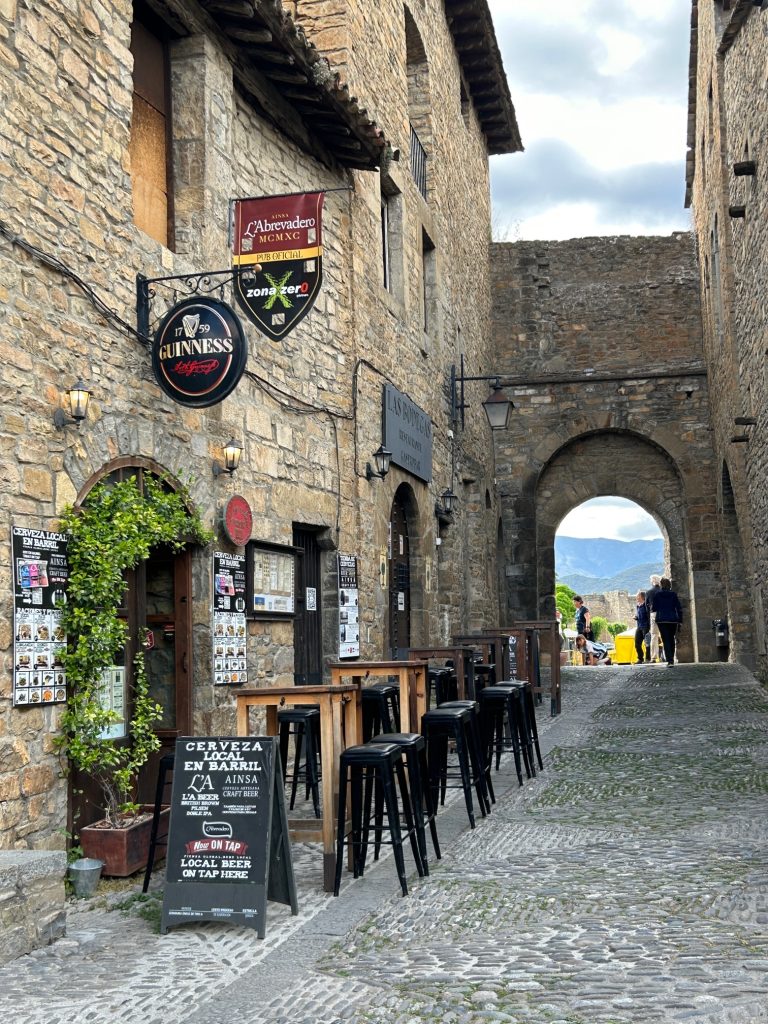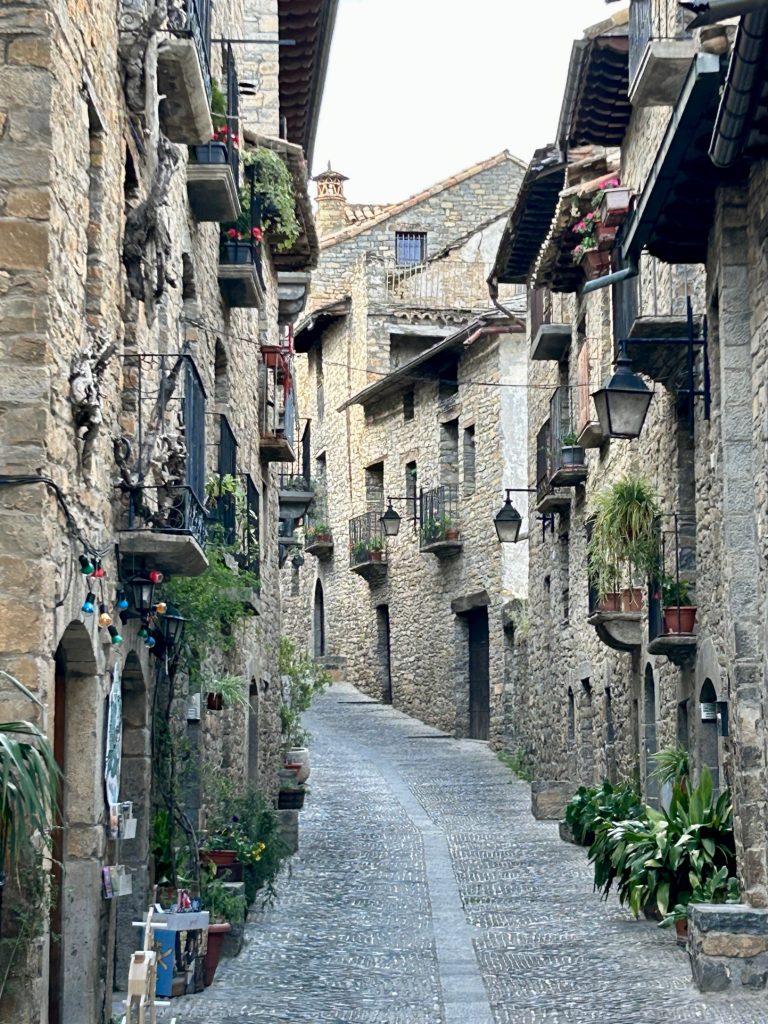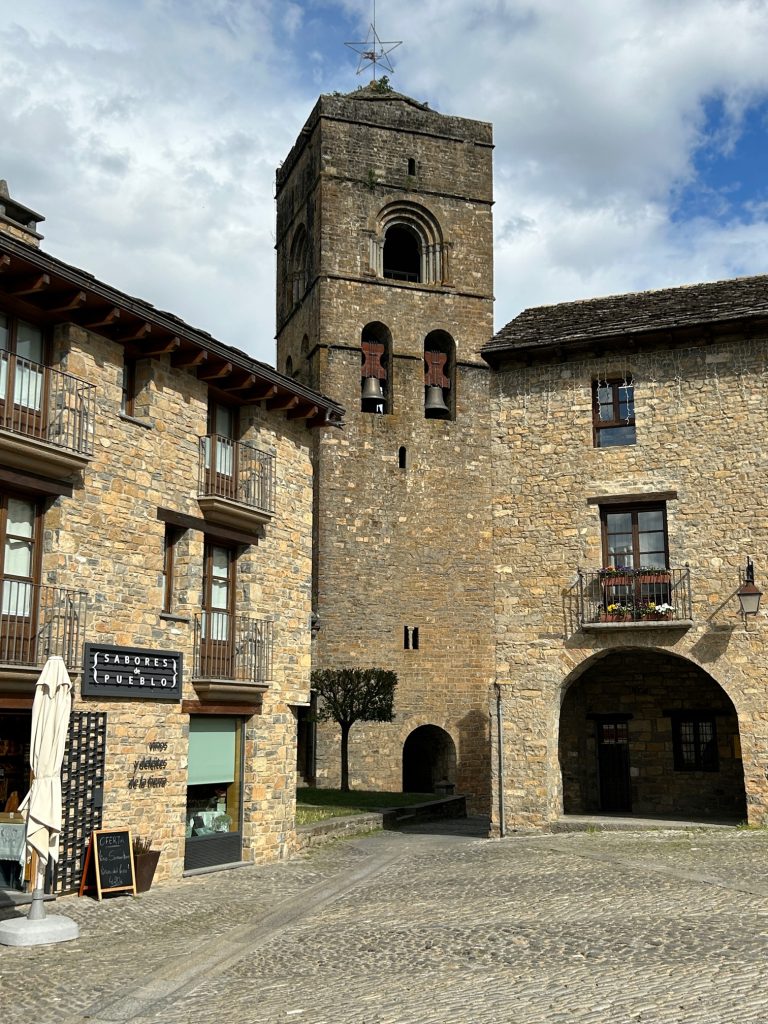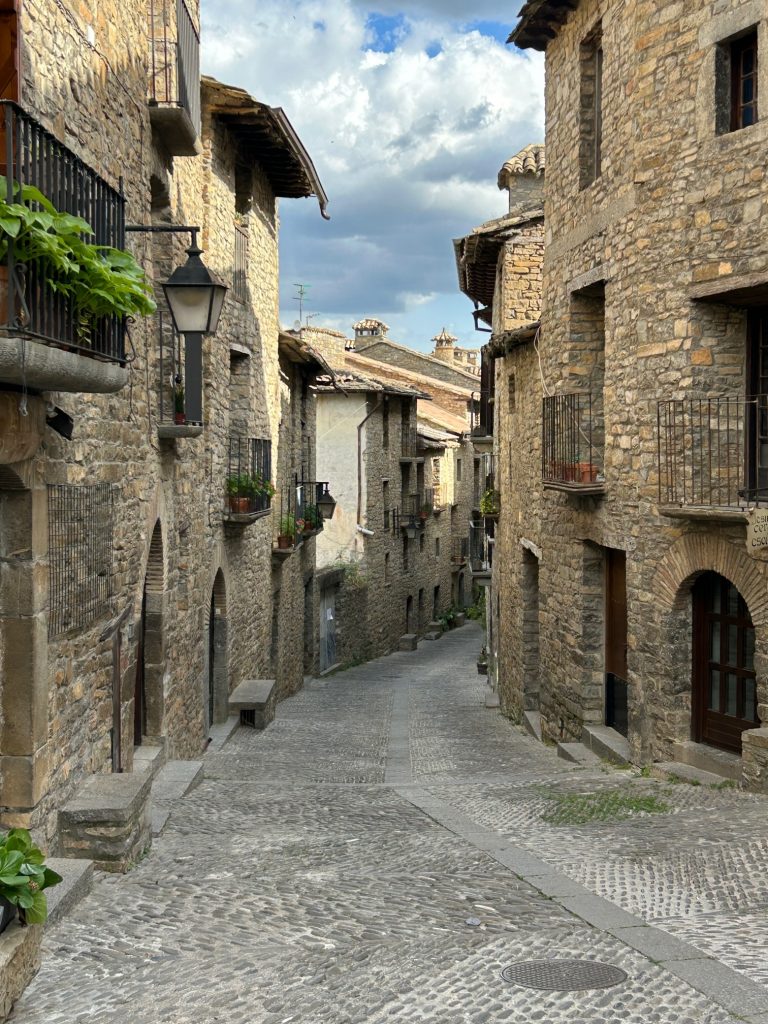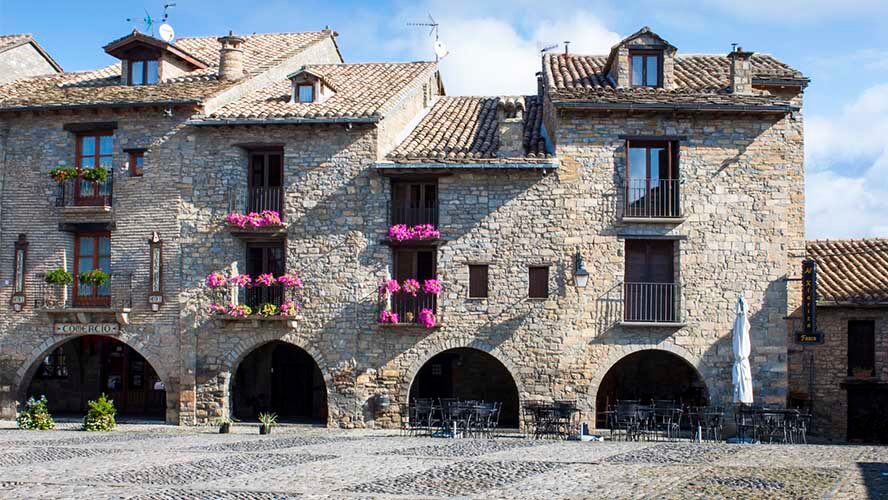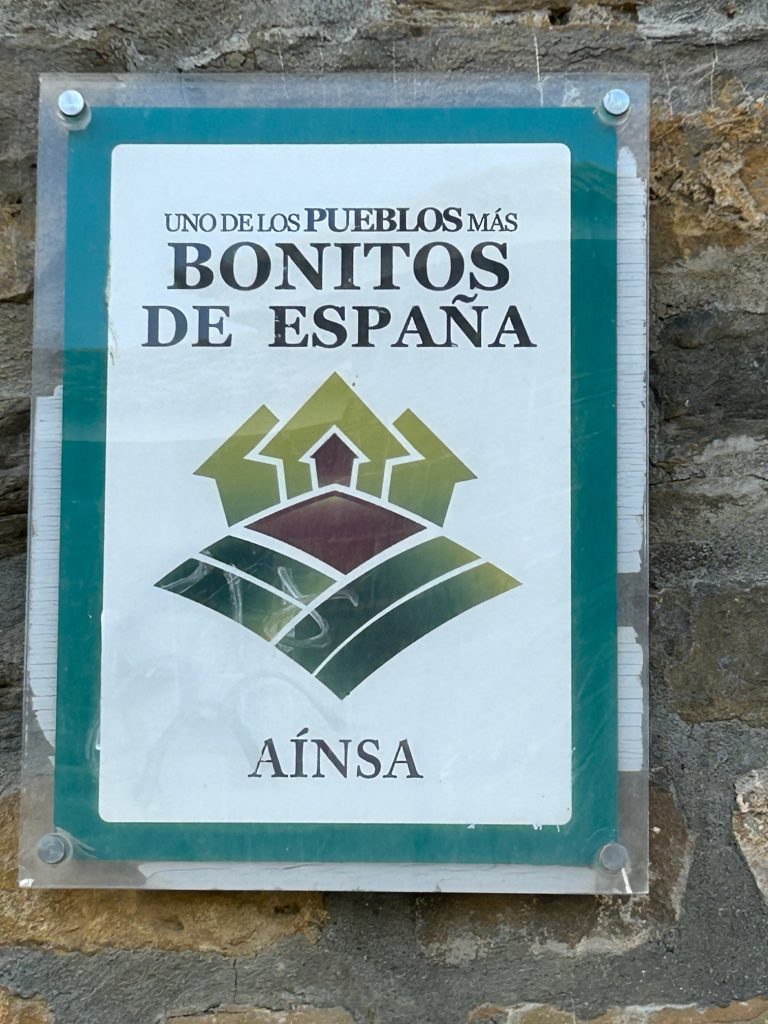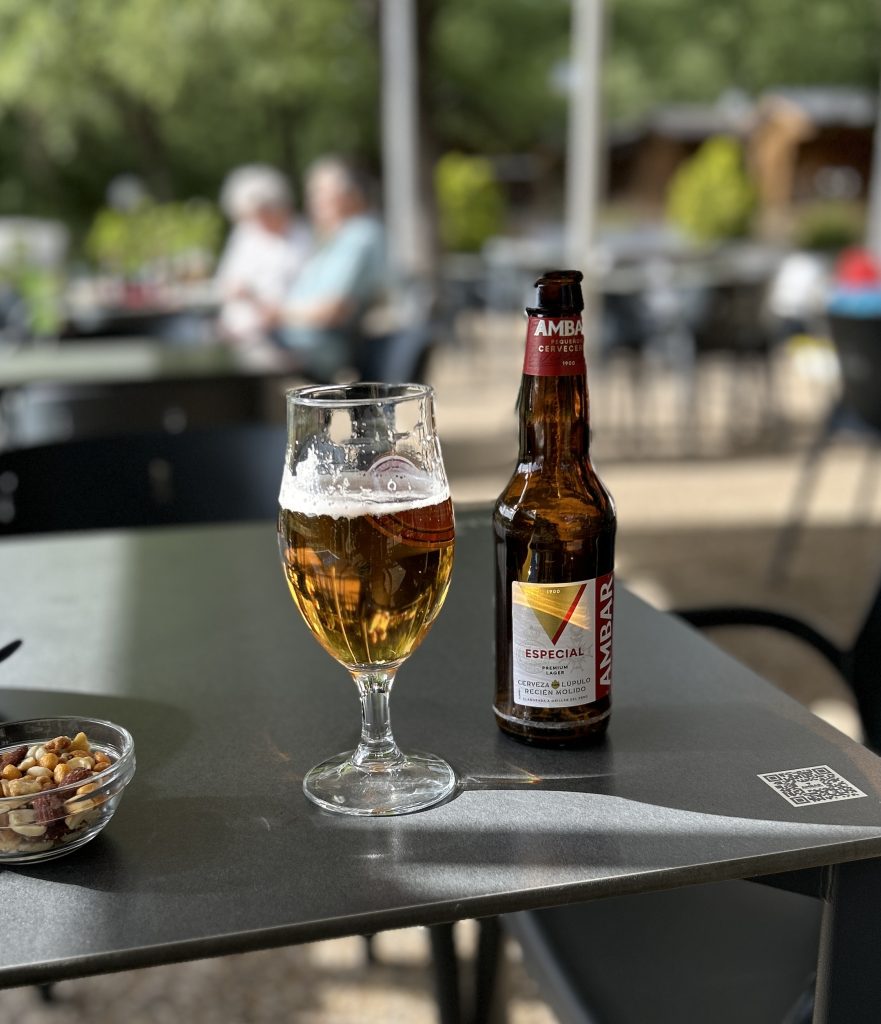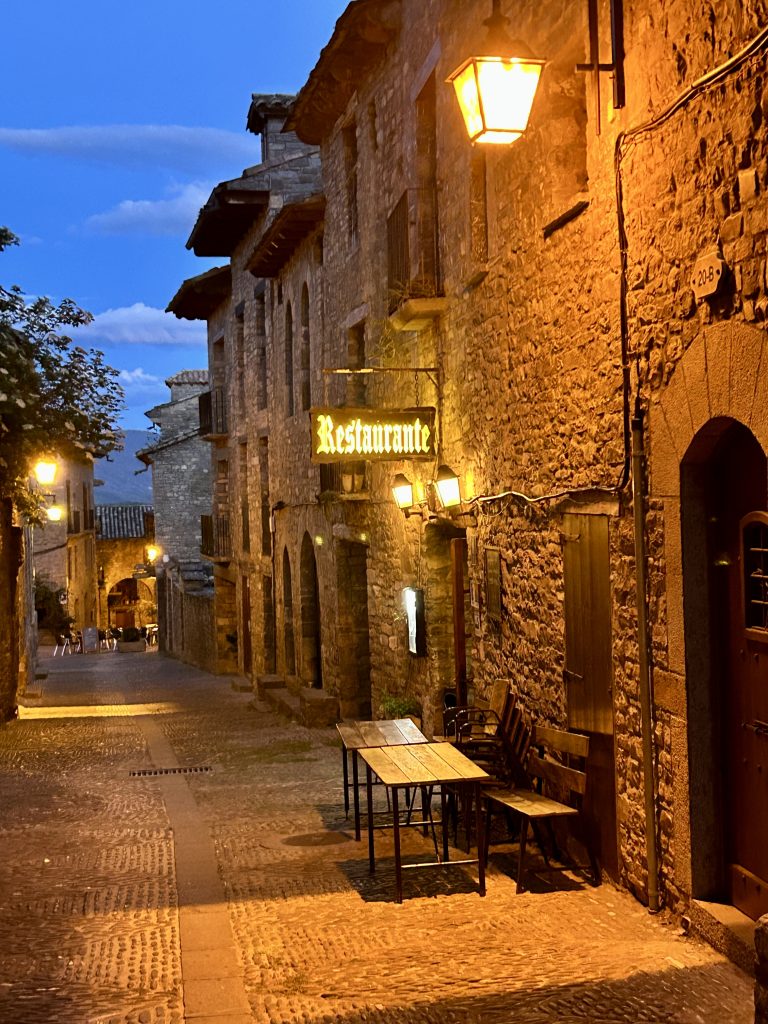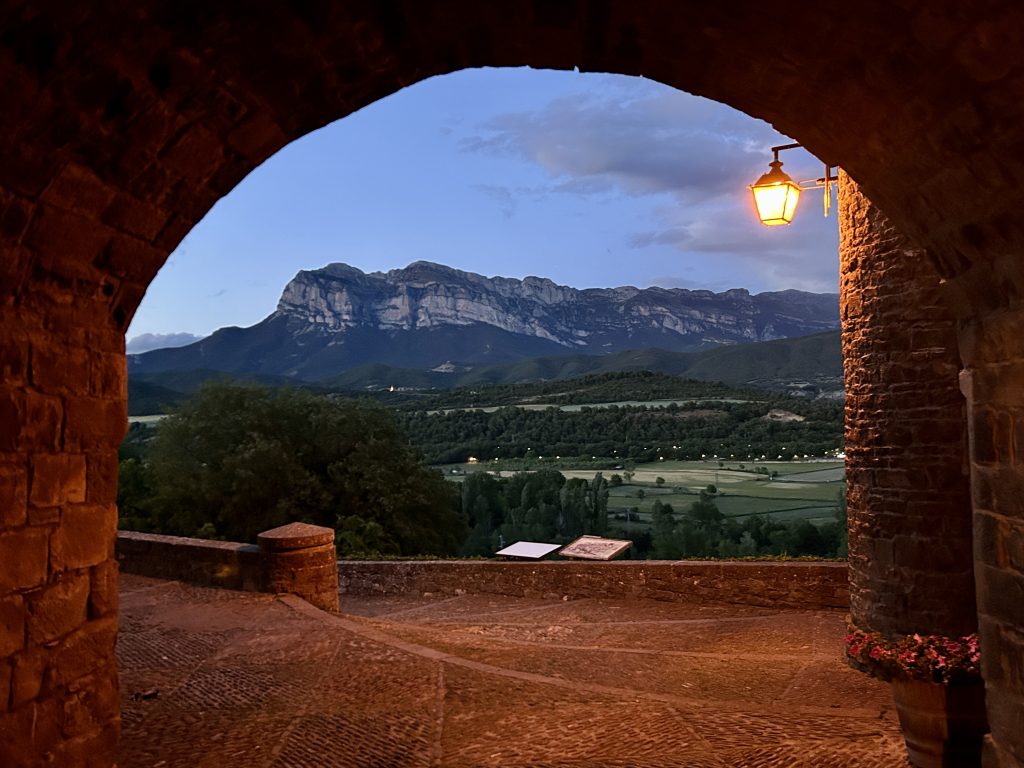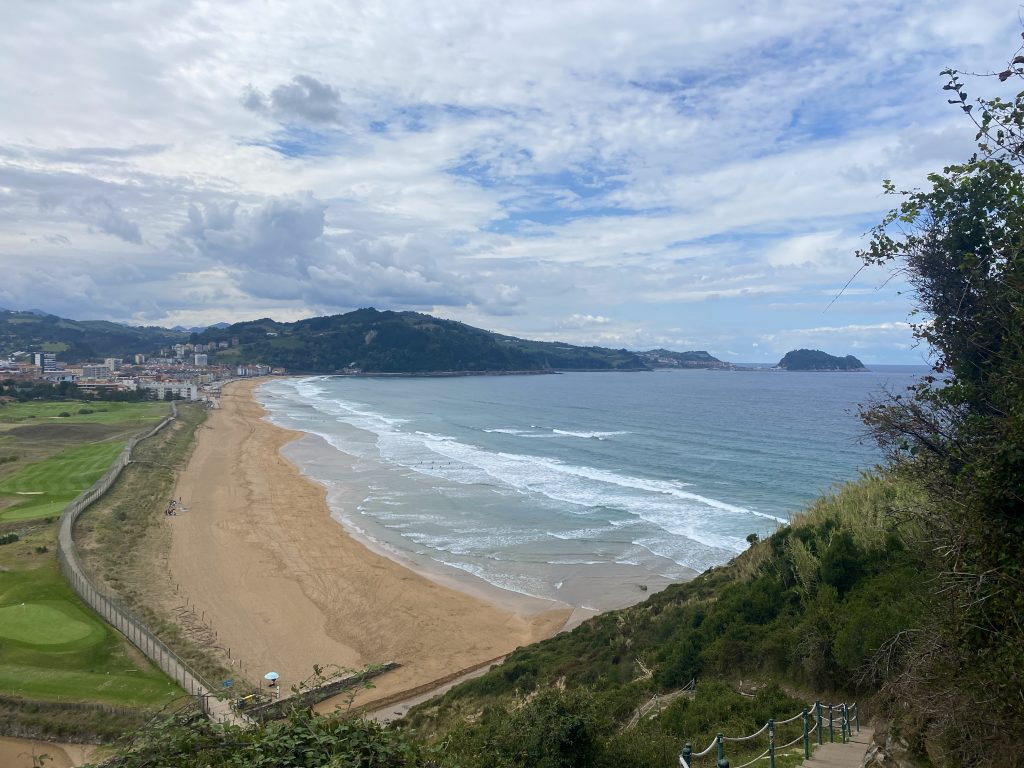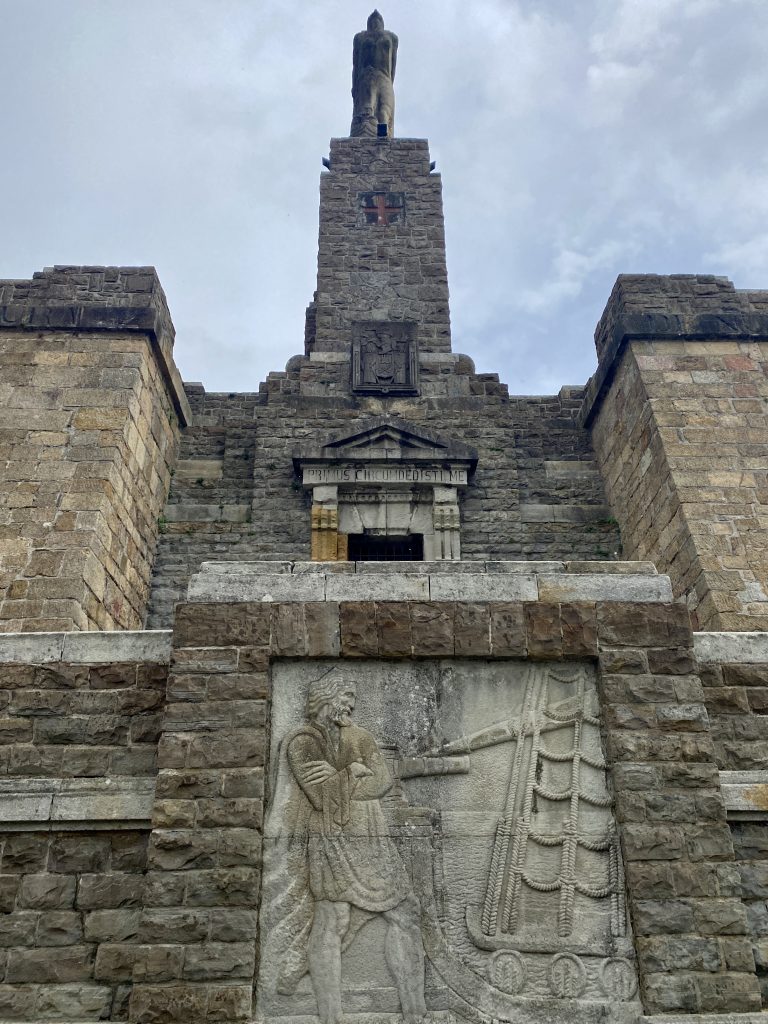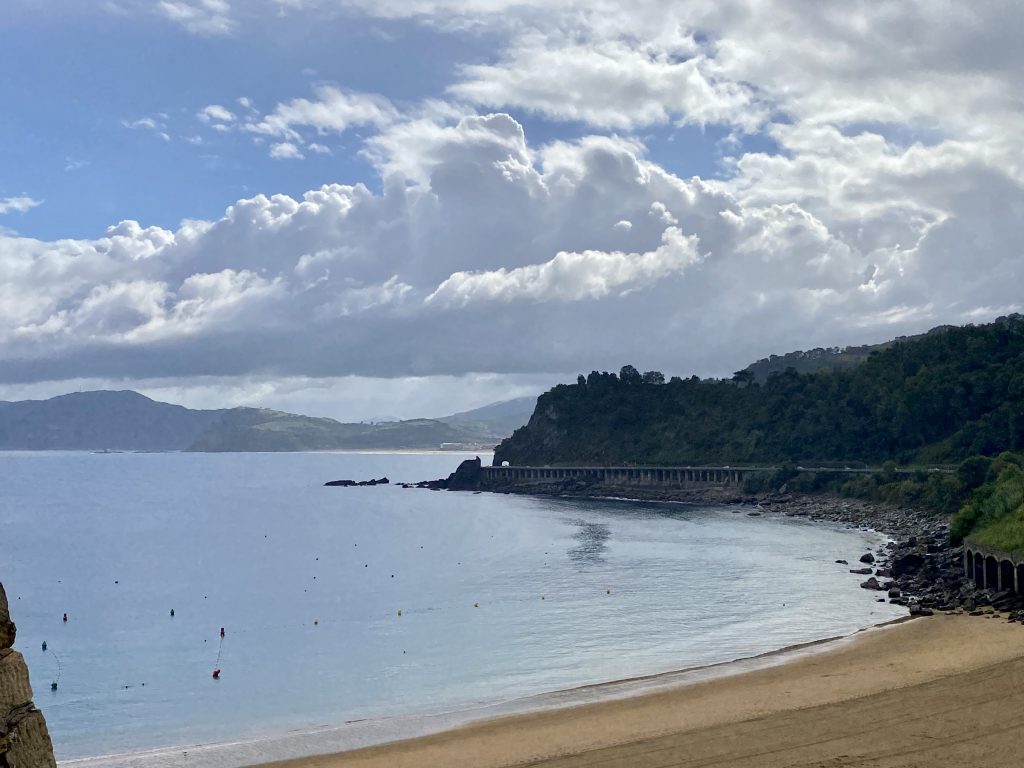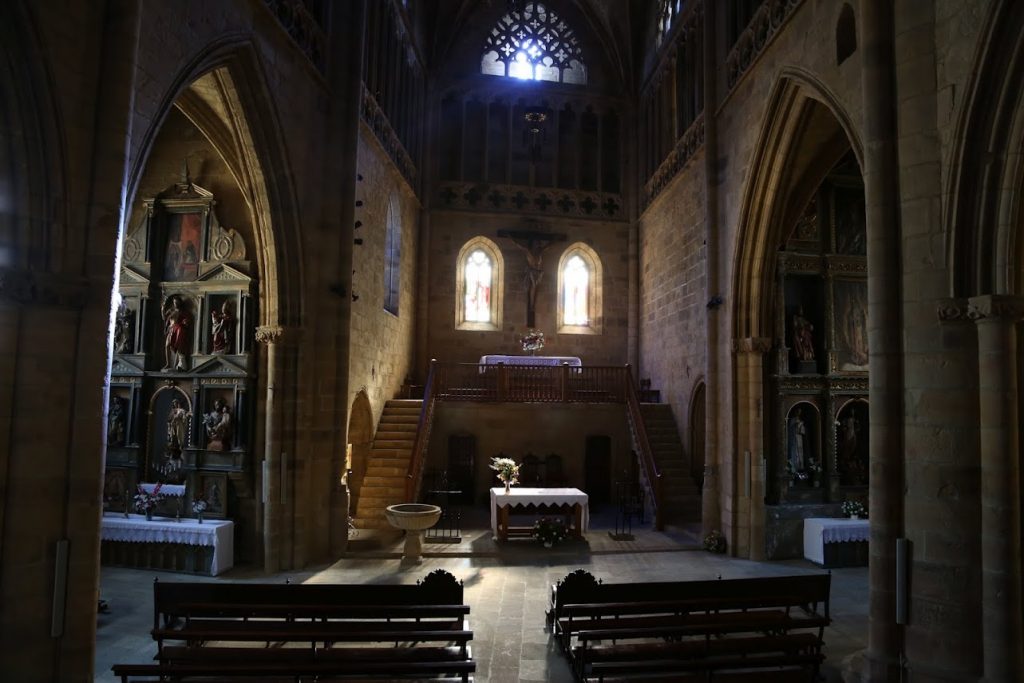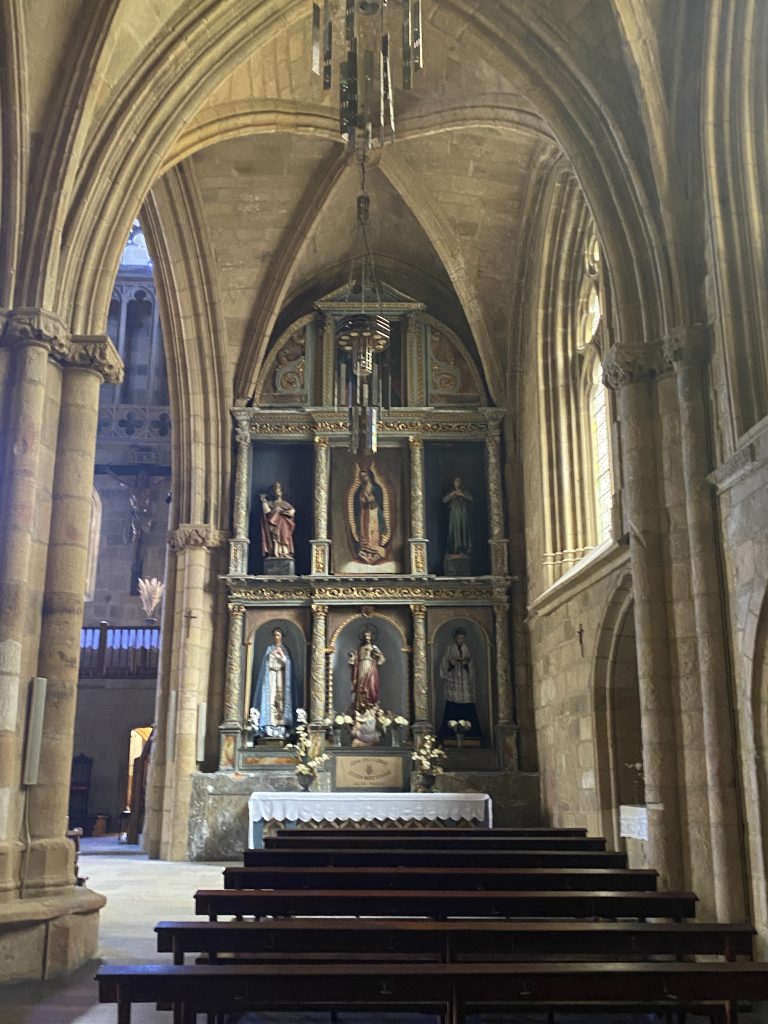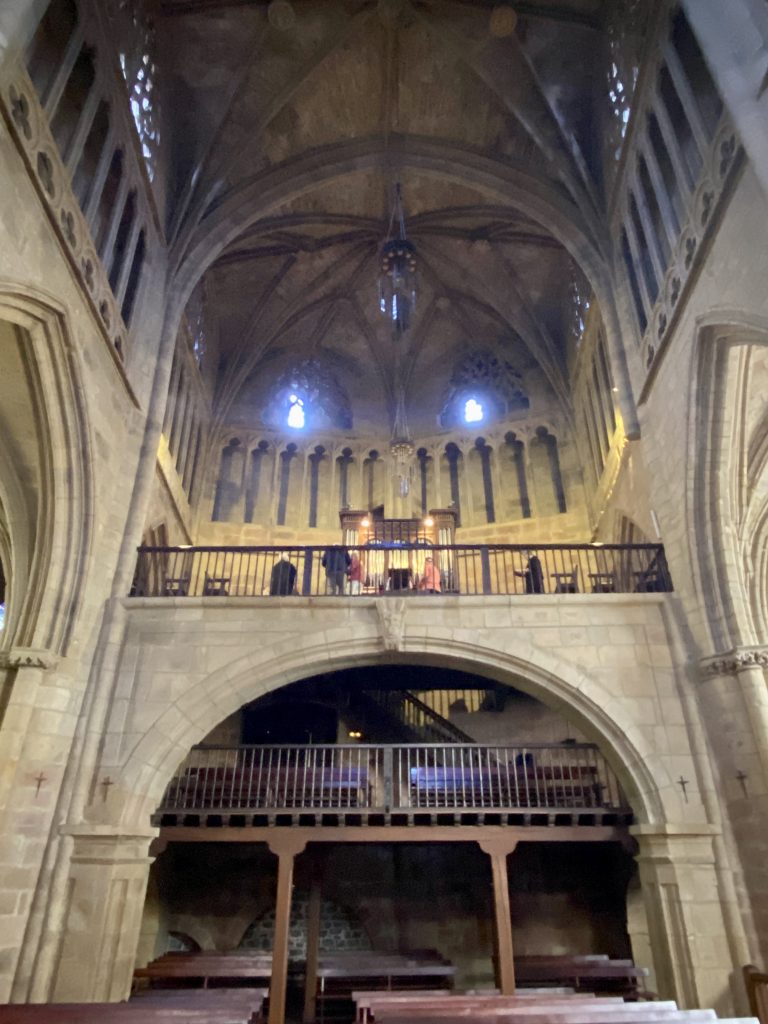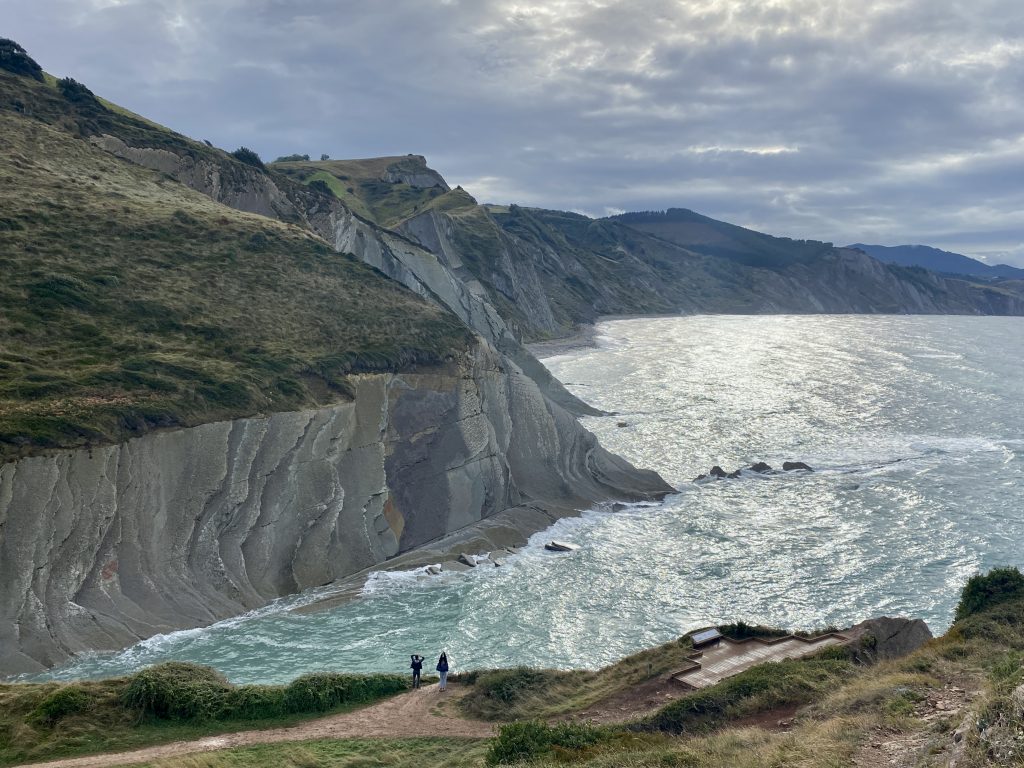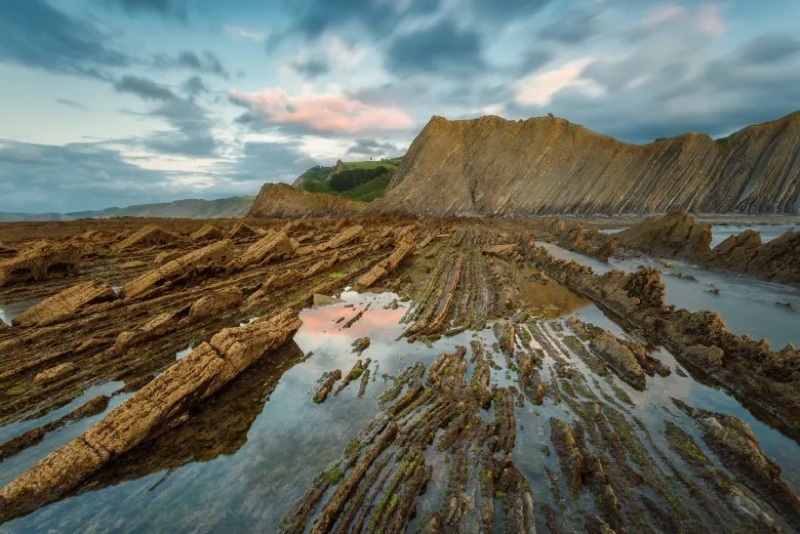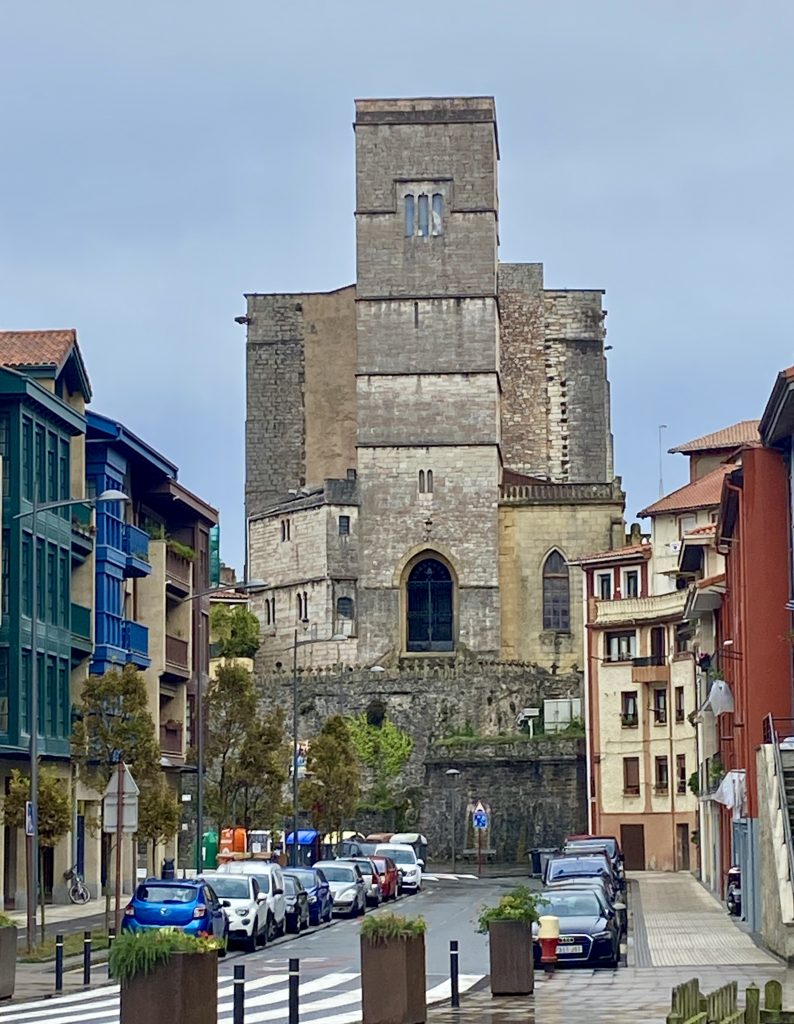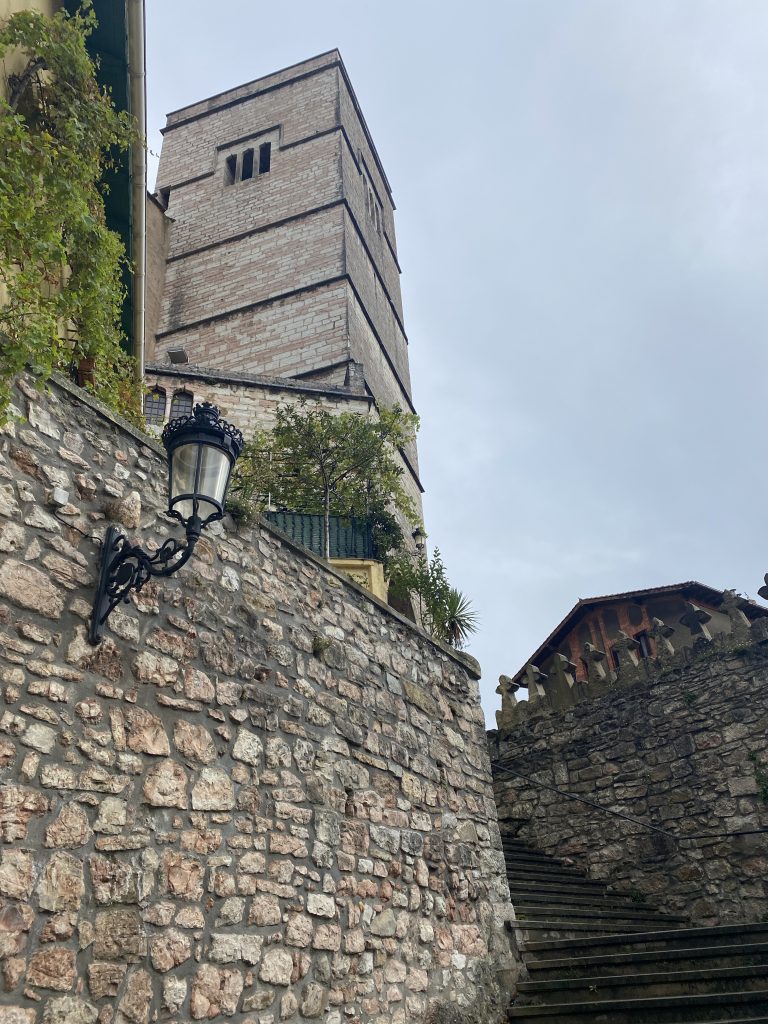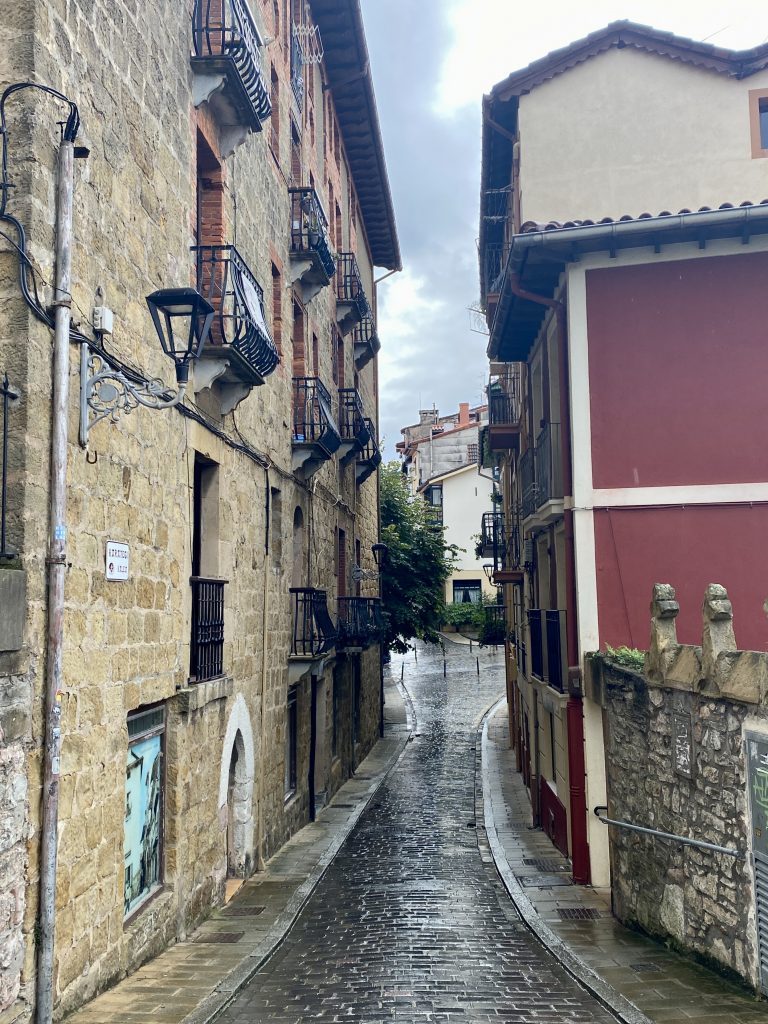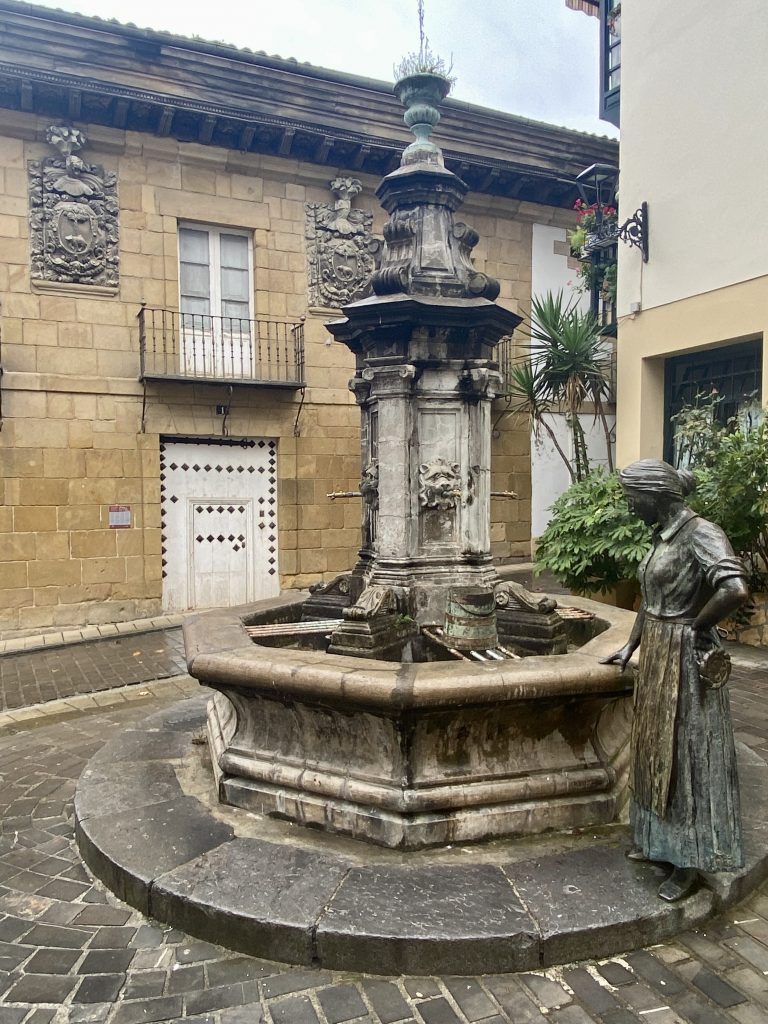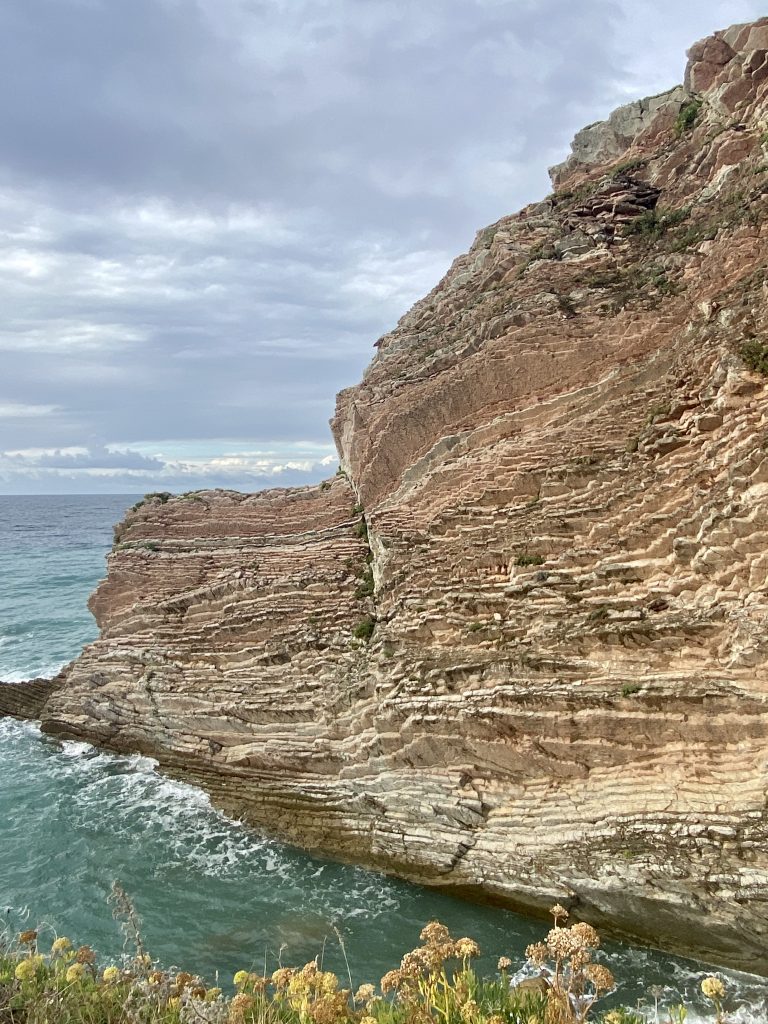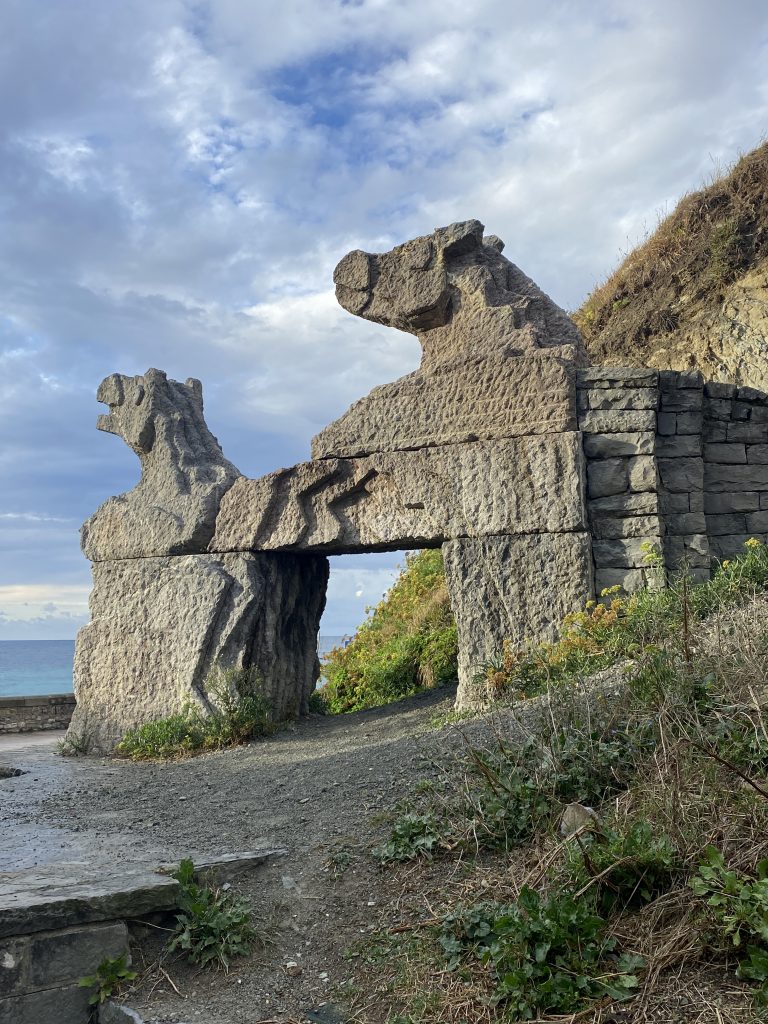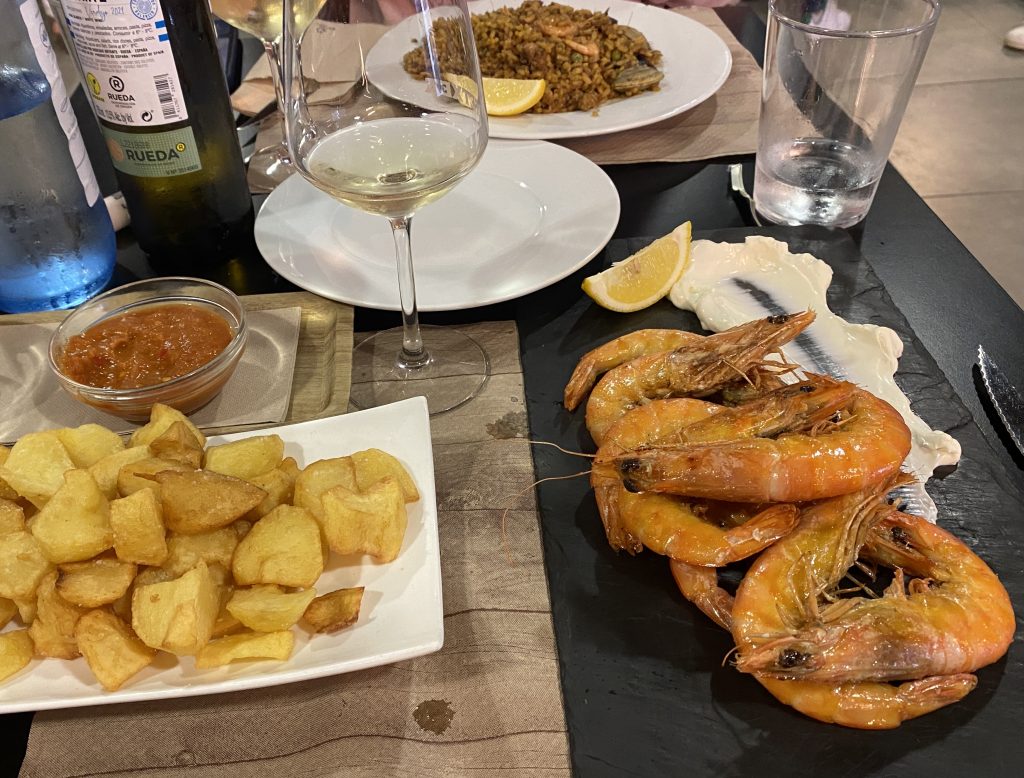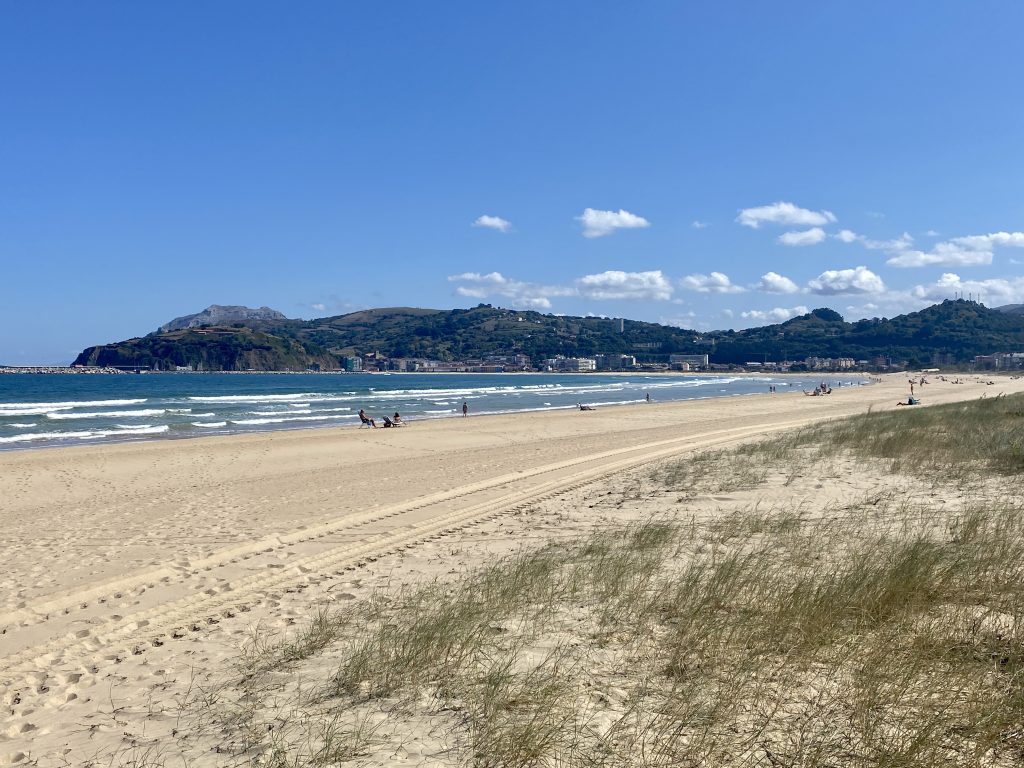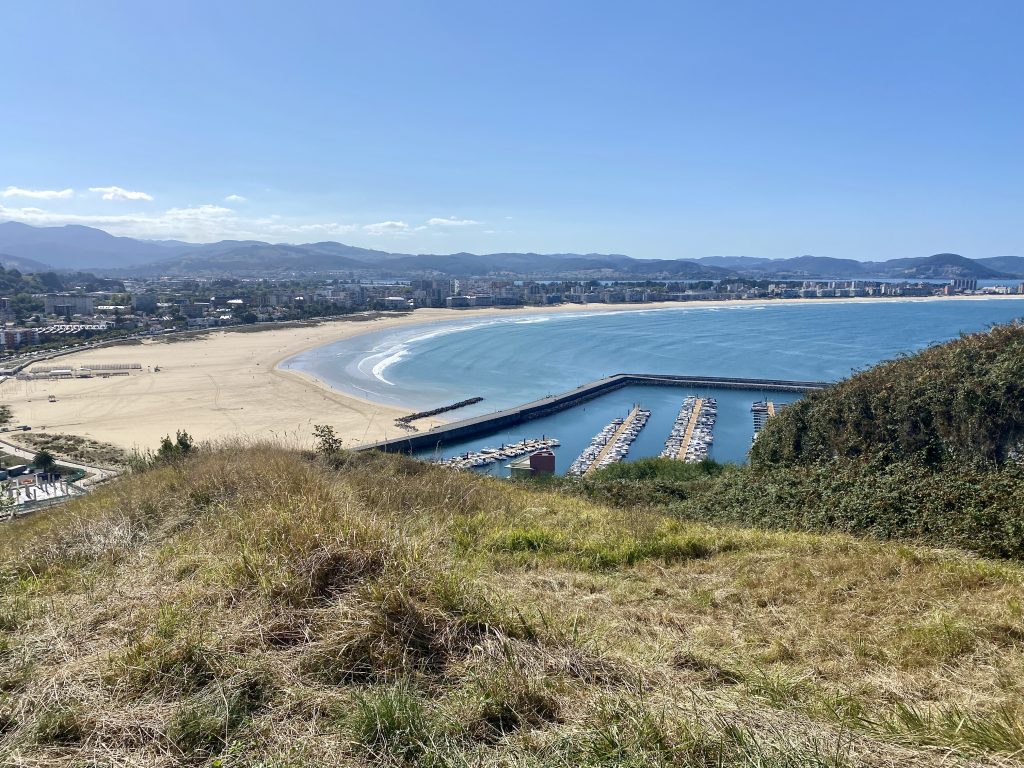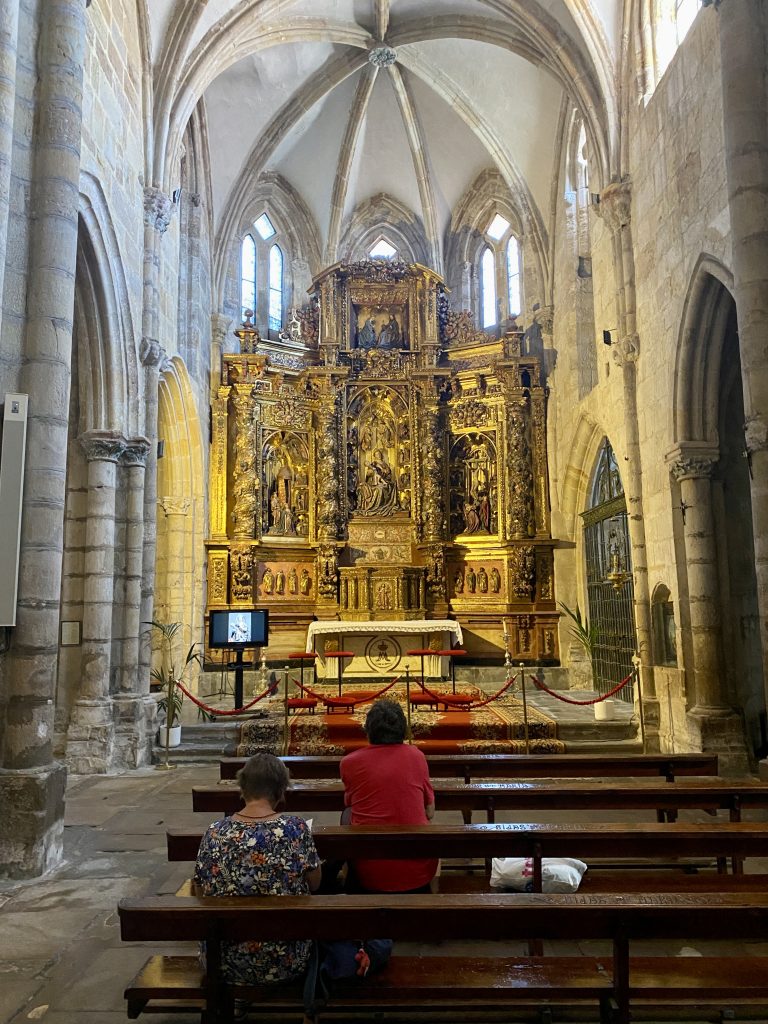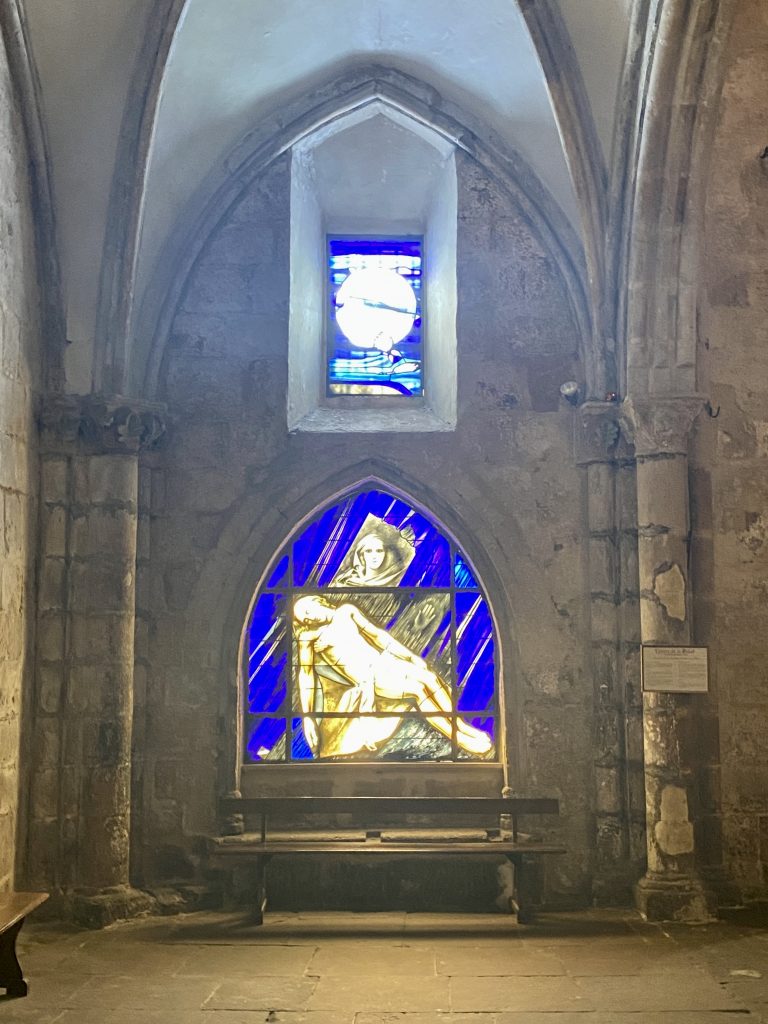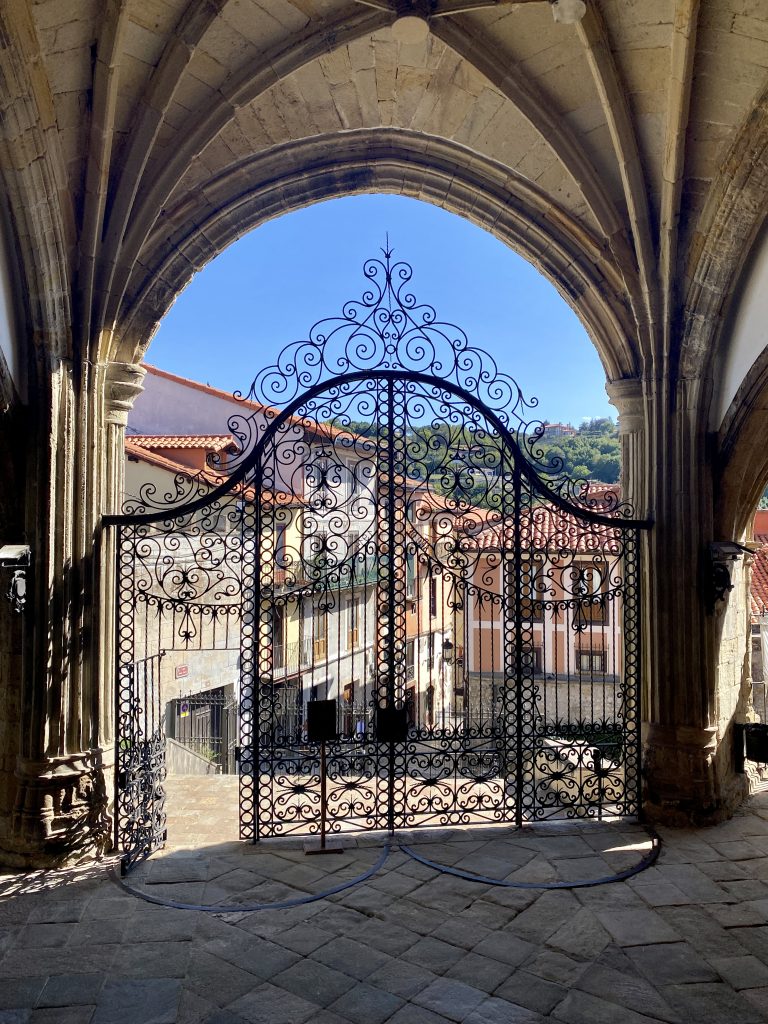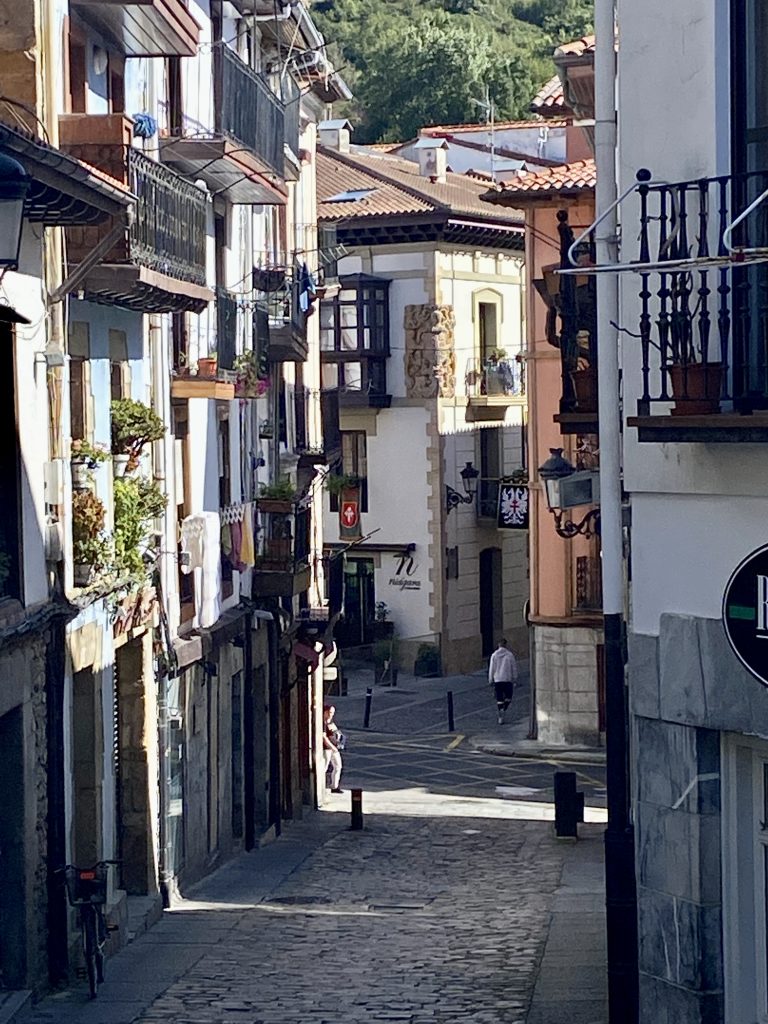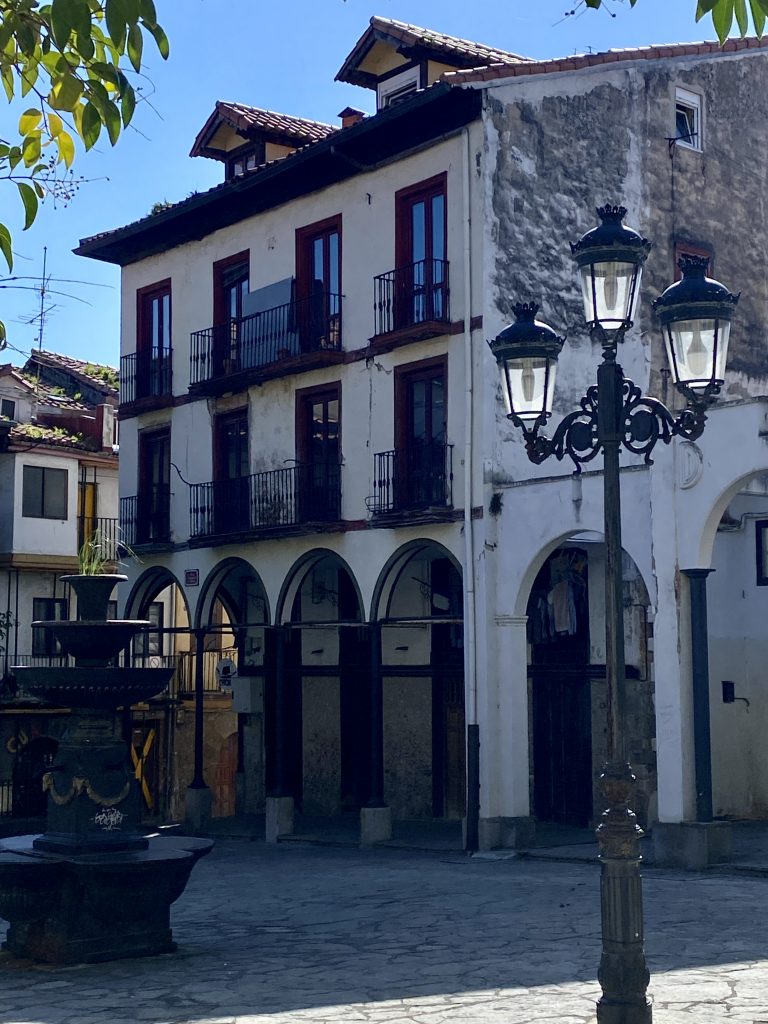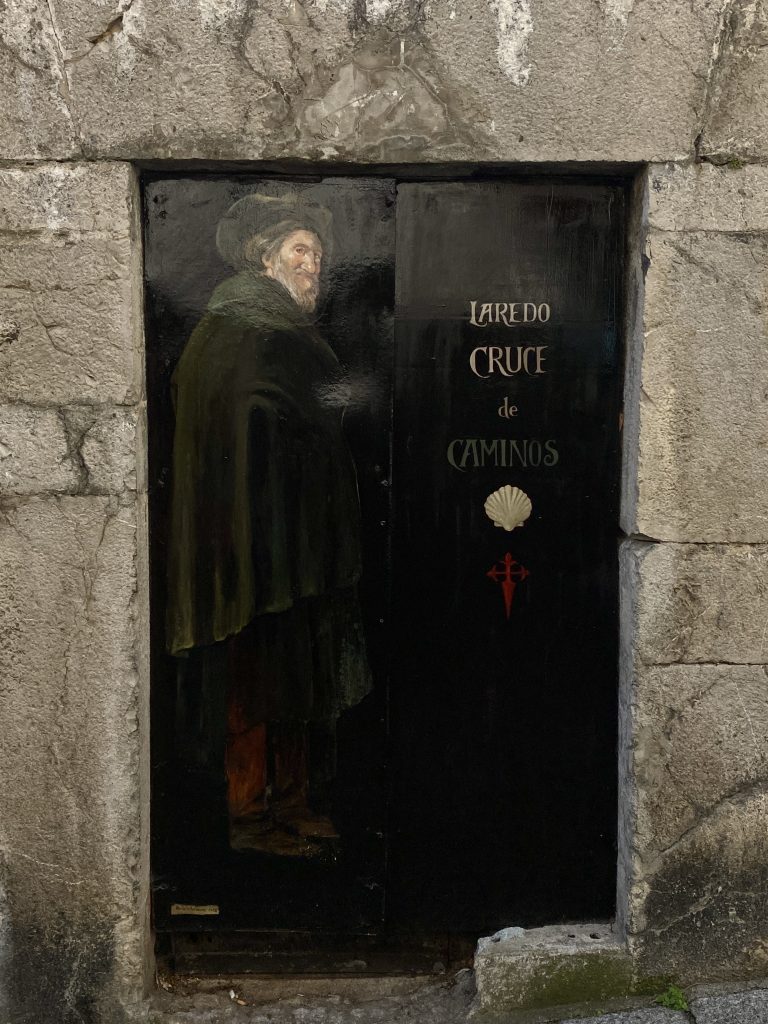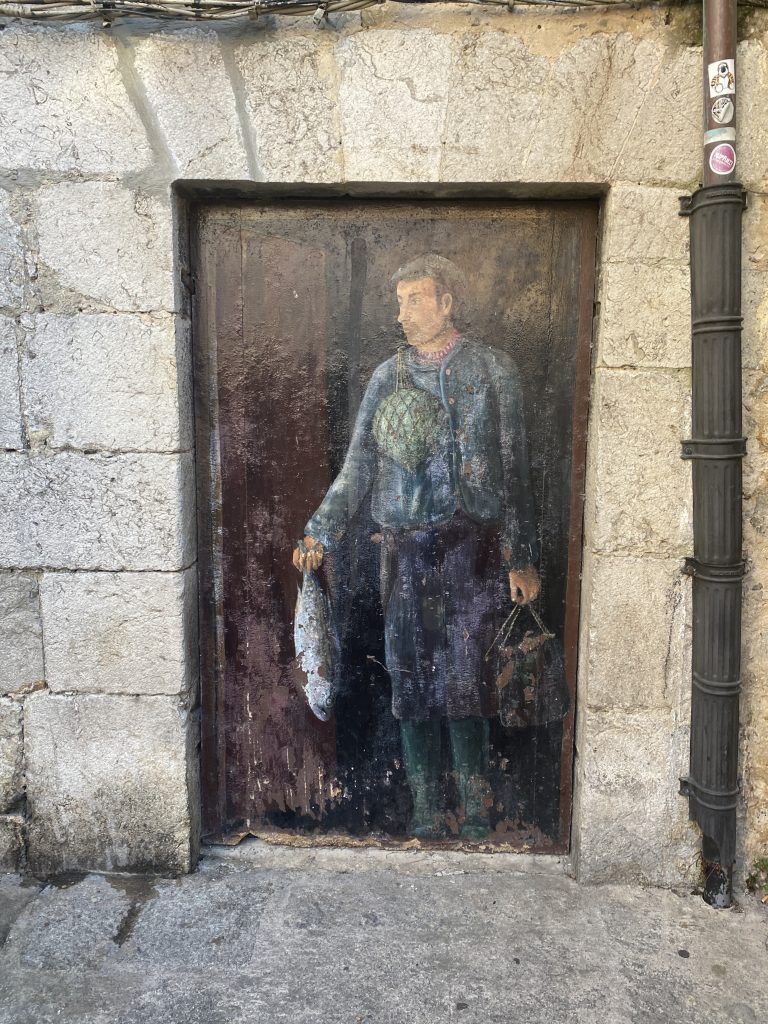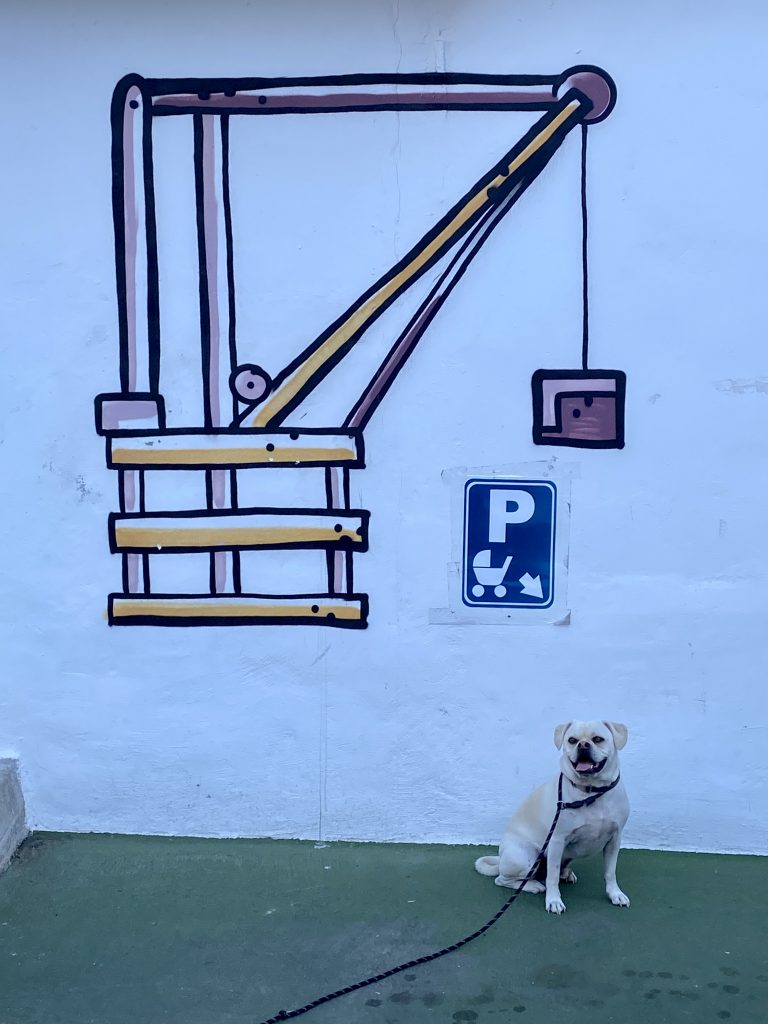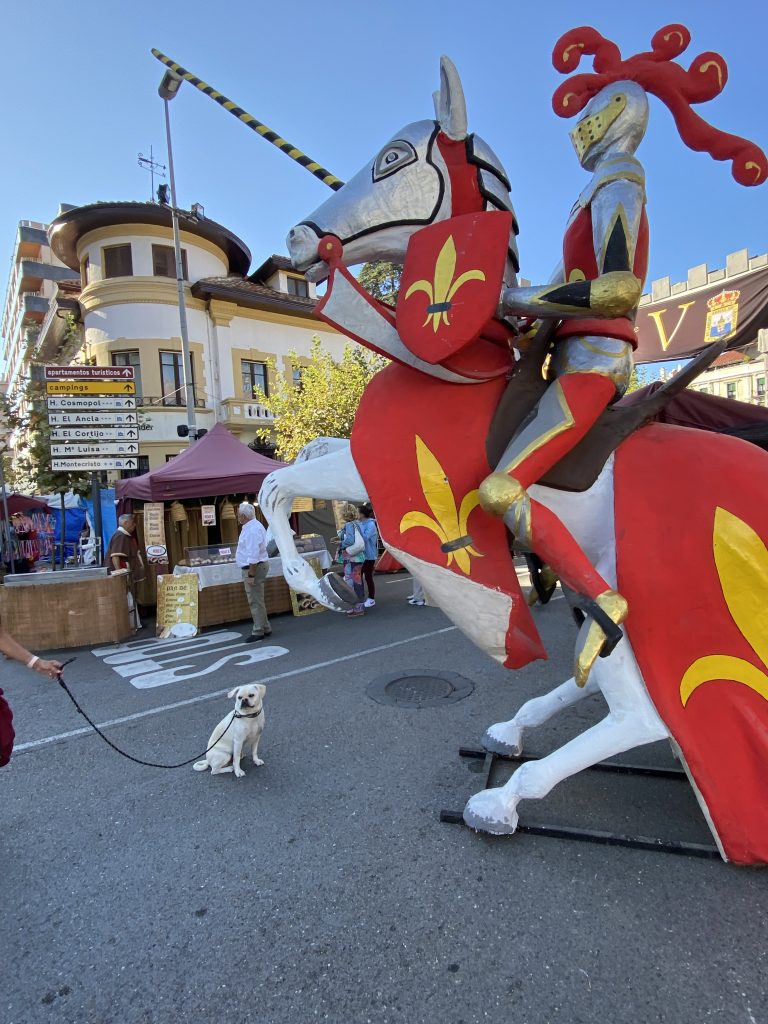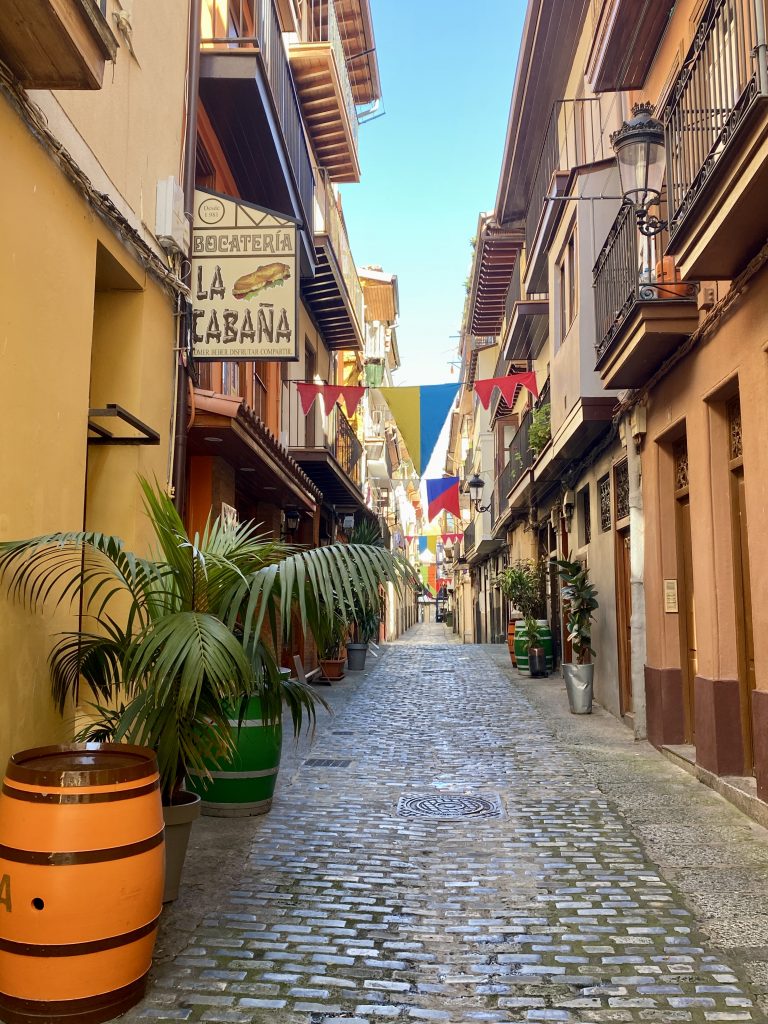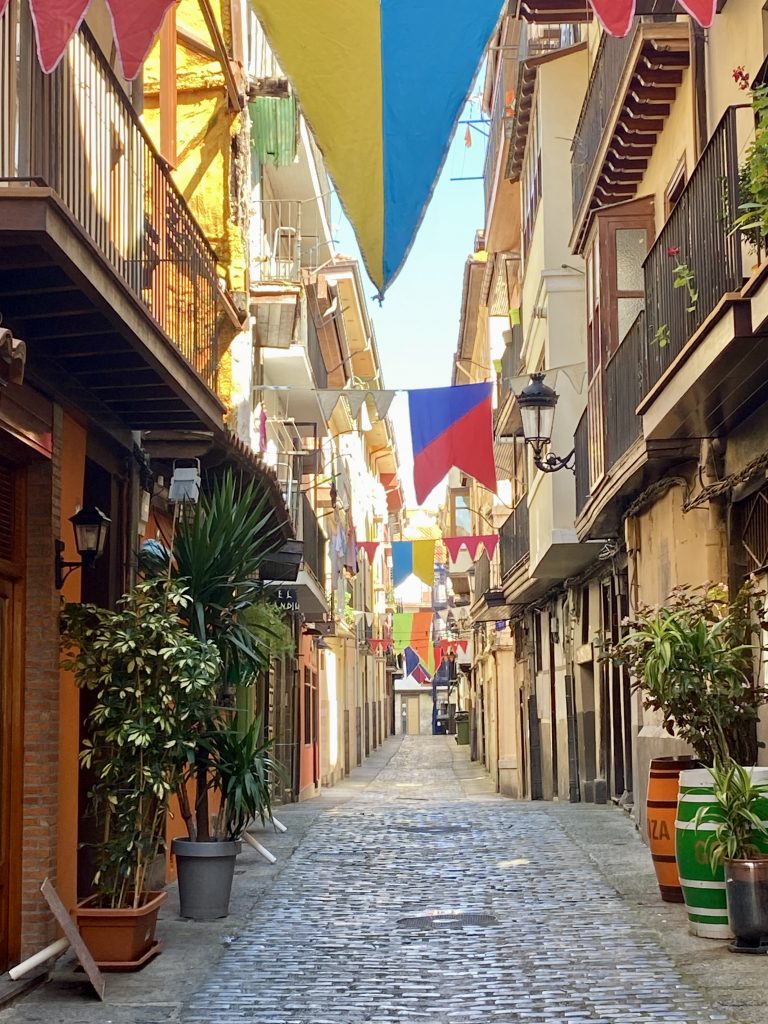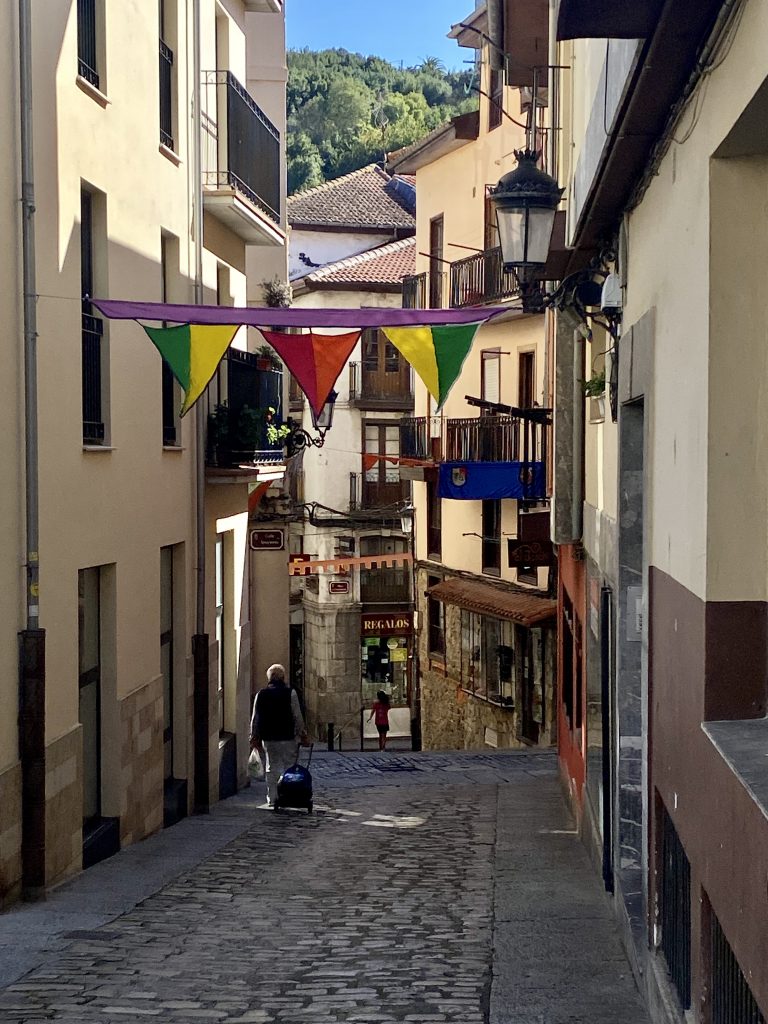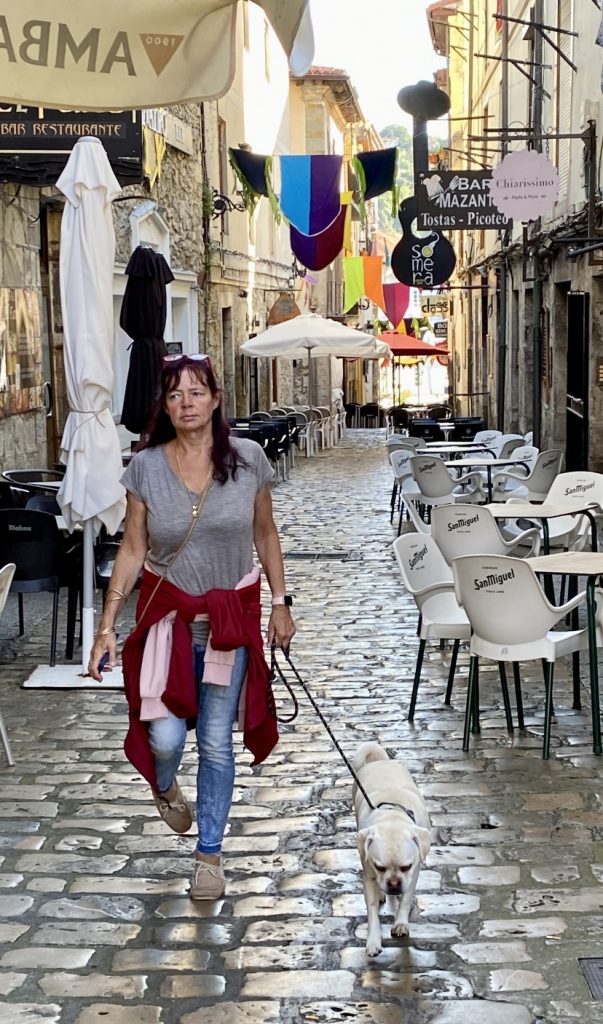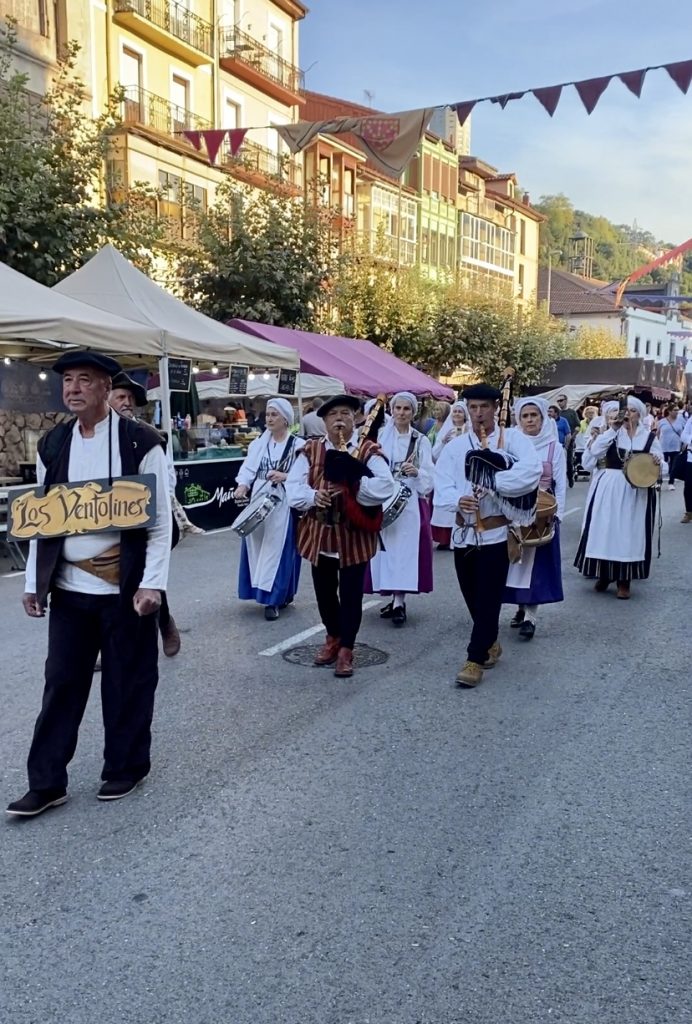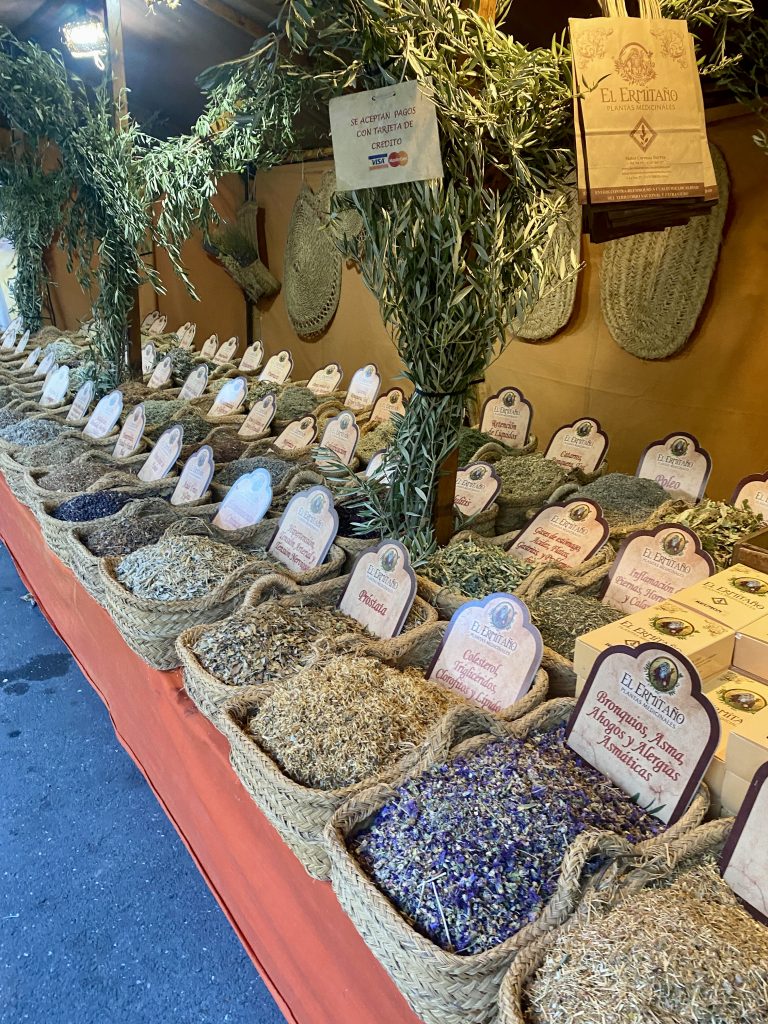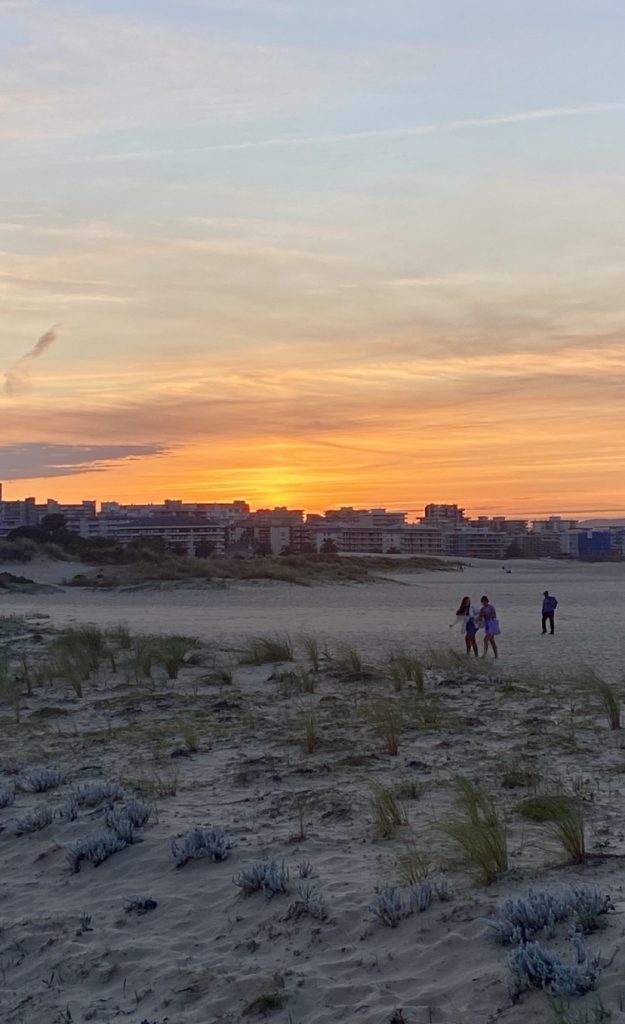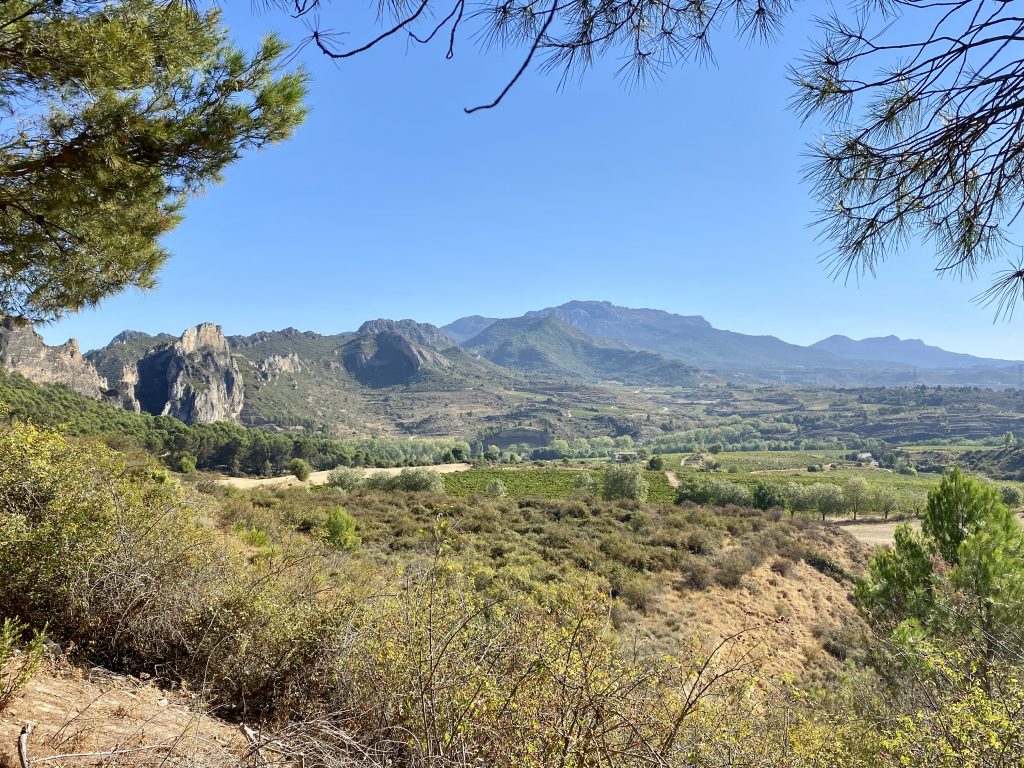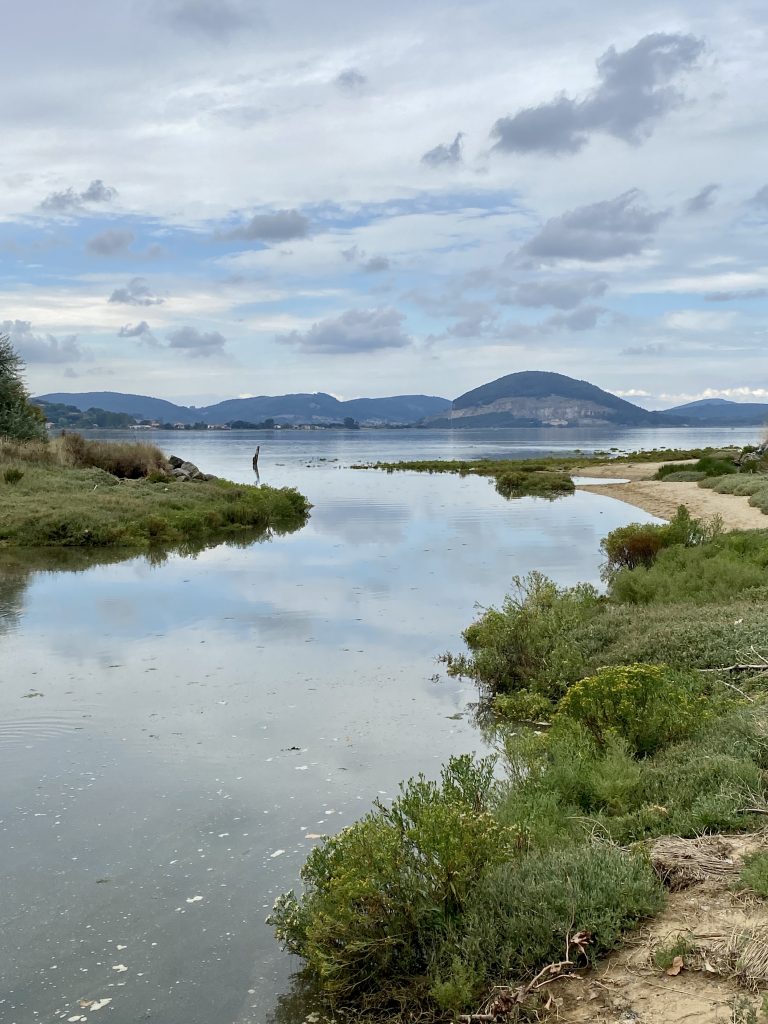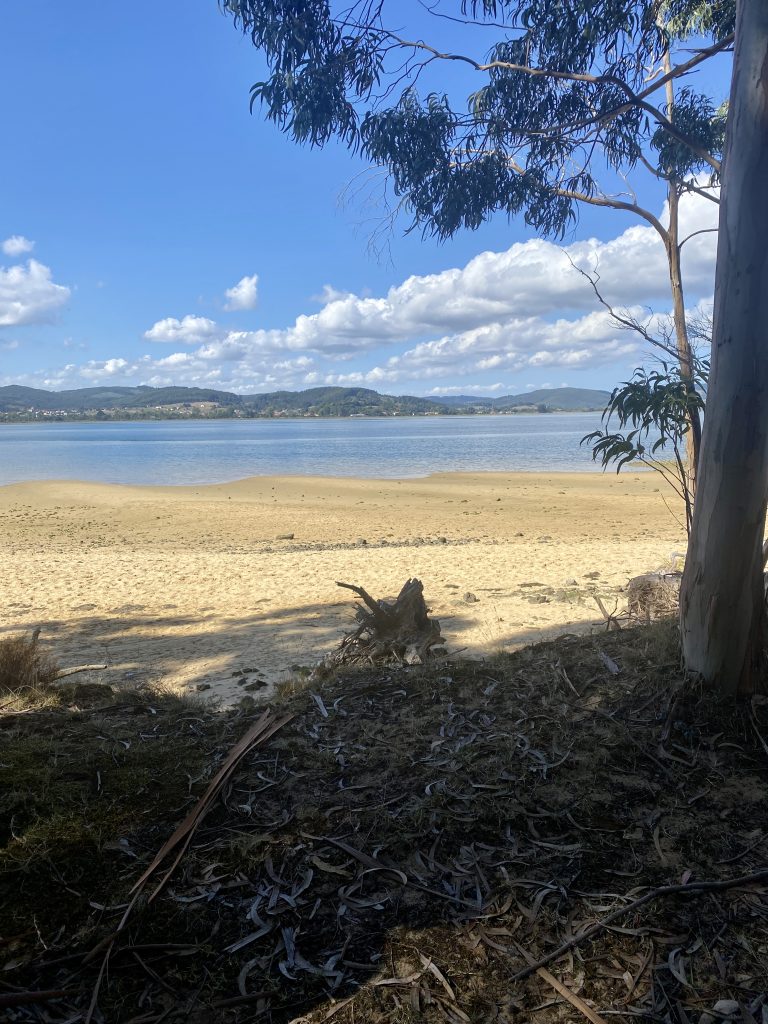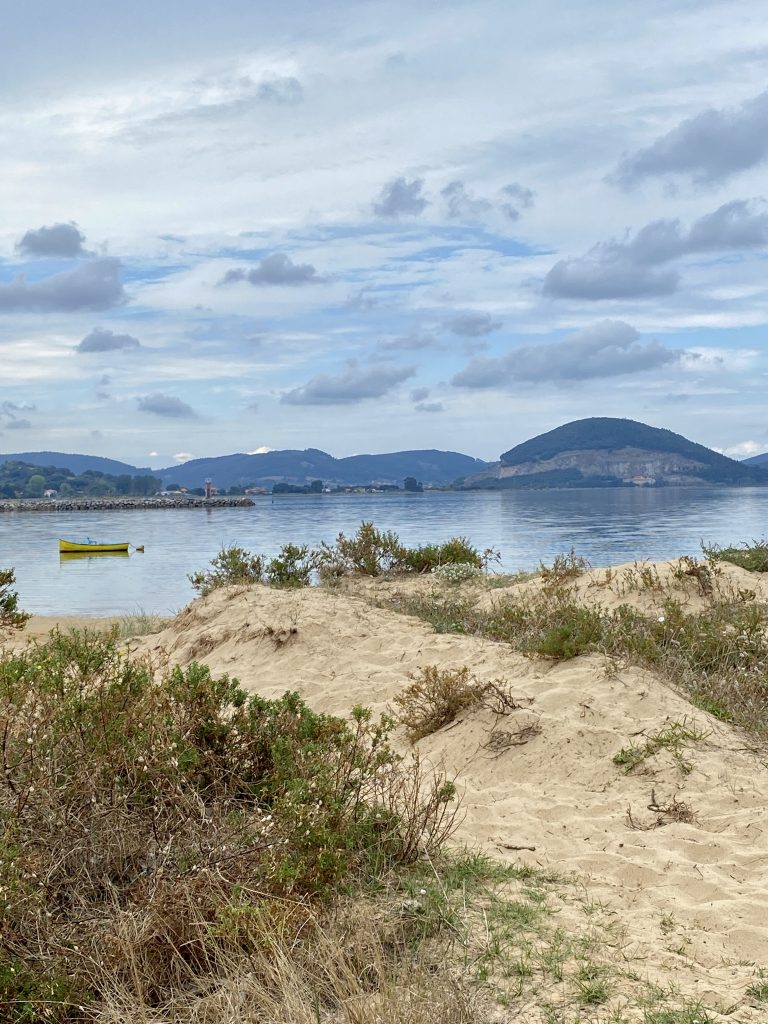Pedraza de la Sierra (to use the villages’s correct name) is to be found some 50 miles south of Penafiel in Segovia Province in the Region of Castile y Leon. It is one of Los Pueblos Mas Bonitos de Espana and it is one of the best kept secrets in Spain. The village was recommended to Vanya and I as a place to see by the owner of our campsite in Penafiel and we decided upon a day visit in the Van.
It’s a small fortress village (less than 400 inhabitants) with just one narrow entrance. All of it’s buildings date back many hundreds of years (there is not a single modern building in Pedraza) and it is considered to be the best preserved medieval village in the whole of Spain. You’ll get no pushback from me on that point.
It took us a little over an hour to get to Pedraza. We parked close to the village entrance at the Casa de Aguila Imperial (a learning centre, housed in the old Romanesque Church of San Miguel, which serves to promote and protect Imperial Eagles) and after a quick look around we made the short walk up to the village entrance (Puerta de la Villa).
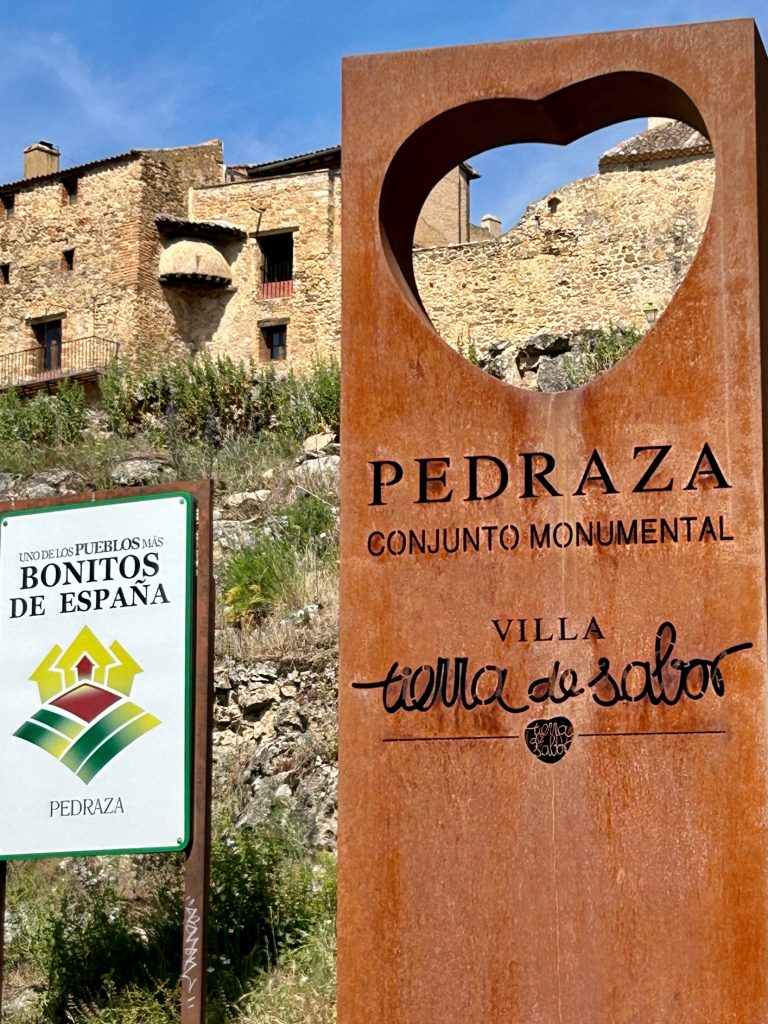
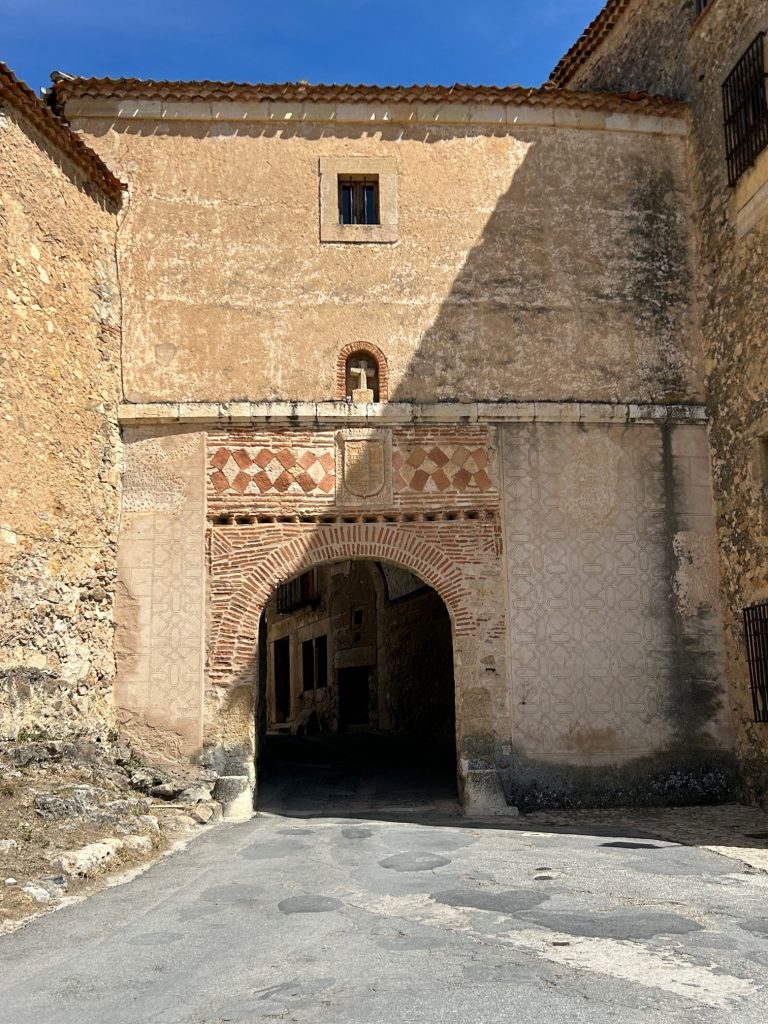
The Puerta de la Villa is small and can admit only very small commercial vans.
Just inside the entrance to the village is La Carcel, a 13th century fortified tower which in the 16th century was converted into the local prison. It was used as a prison until near the end of the 19th century but is now a tourist attraction. For 4 Euros you can wander the gaol and get a sense as to what it must have been like to have been imprisoned there. To say it was cramped, primitive and inhuman is an understatement. In addition to the gaoler’s quarters and facilities (the only part of the building with any heating) there are two levels of dungeons; one for the most common criminals (male and female) and another (little more than a pitch black hole in the ground) for the ‘more problematic’ prisoners. There’s no doubt that the prisoners were subjected to all kinds of abuse given the stocks and shackles which can still be seen in the prison.
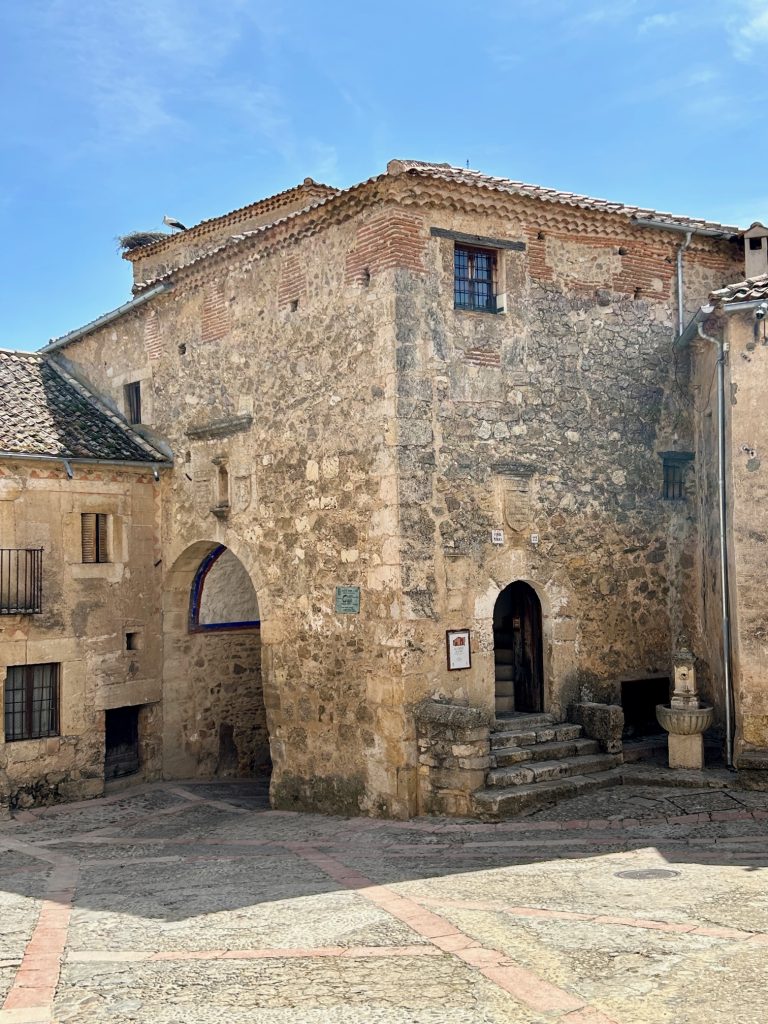

Left: La Carcel (to the right of the entrance to the town) Right: A prison visitor


Prison quarters (left for common criminals and right for problem prisoners)
After a good nosey around the prison, it took no time to walk Calle Real to the village’s main square (Plaza Mayor). The square is simply perfect; like a film set. Talking of which, the square and various street scenes in Pedraza featured prominently in Orson Welles favourite film ‘Chimes At Midnight’ (aka Falstaff) where Orson Welles played Shakespeare’s Sir John Falstaff.
This square is not as enclosed as the Plaza del Cozo in Penafiel but every bit as authentic (moreso actually) and this square too is adapted when required to hold bullfighting events.
I’ll not try to describe the square. Just take a look at the photos.

It looks hot on the Plaza Mayor but in May at 1,068 metres above sea level (that’s higher than most Munros), it was actually perfect weather.
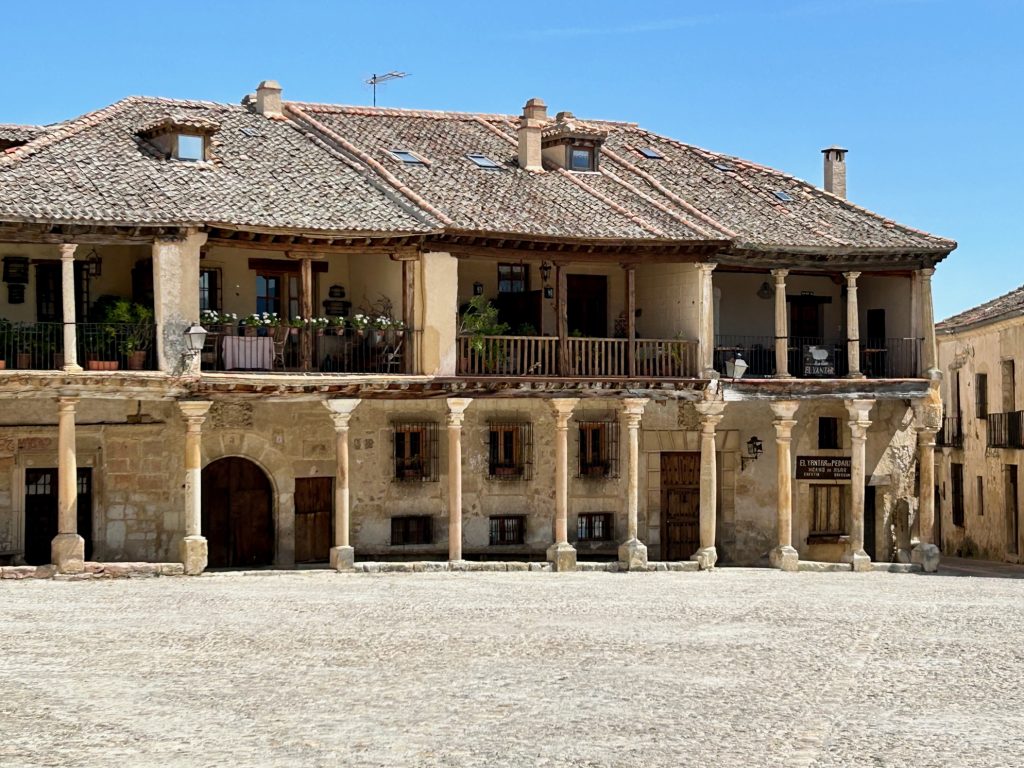
All of the buildings on the square date back to at least the 16th century.
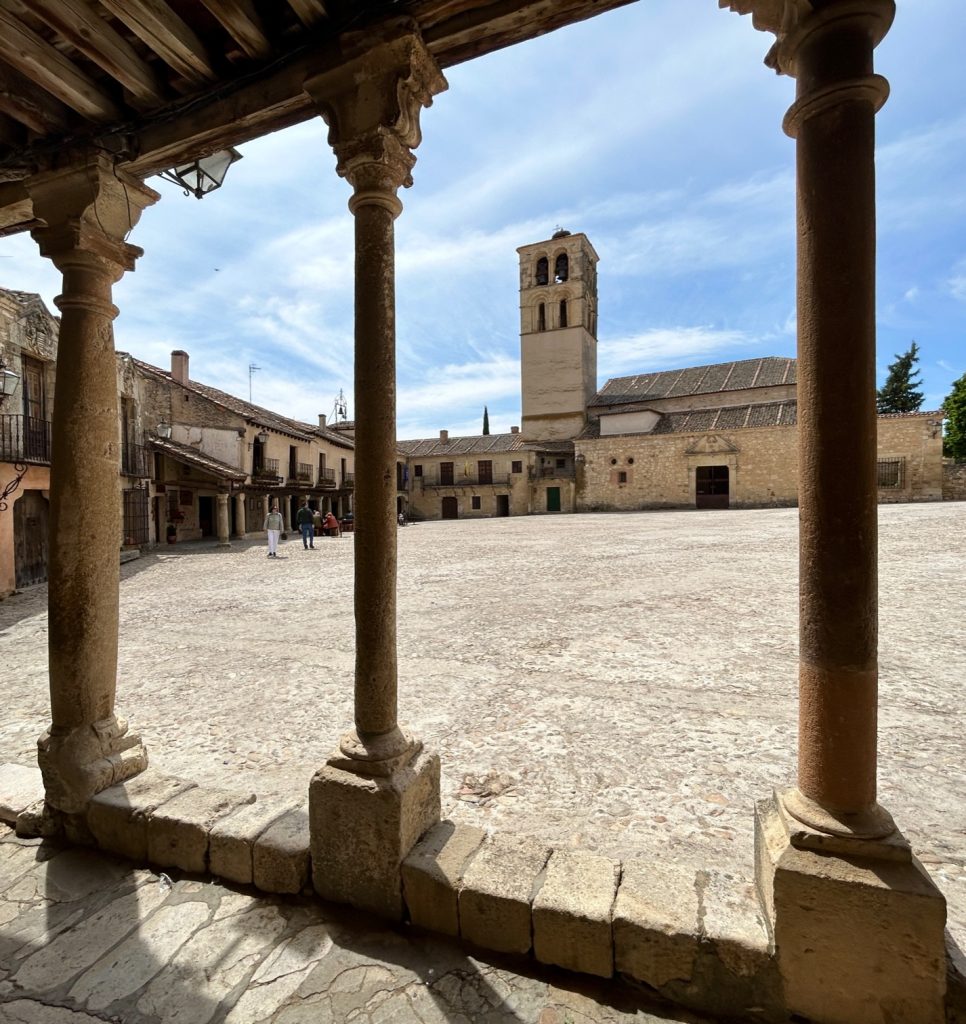
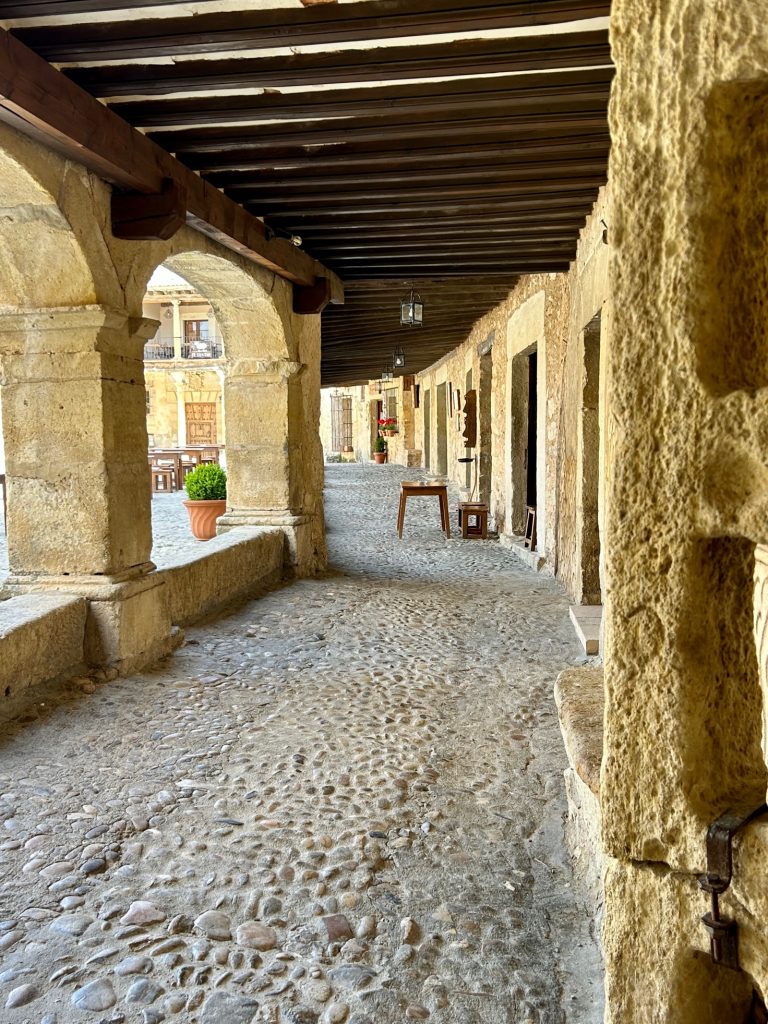
Originally a 12th century Romanesque church, much of the existing Church of St John the Baptist, on the south side of the Plaza Mayor, dates from the 16th century.
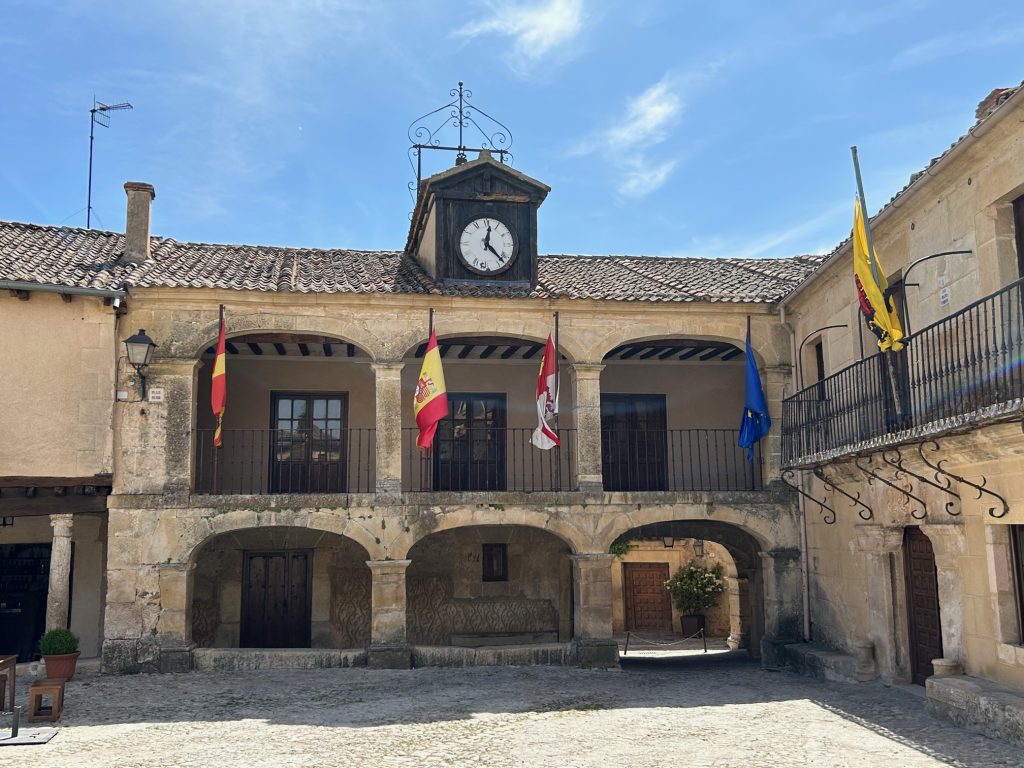
I think that must be the Ayuntamiento (the town hall).
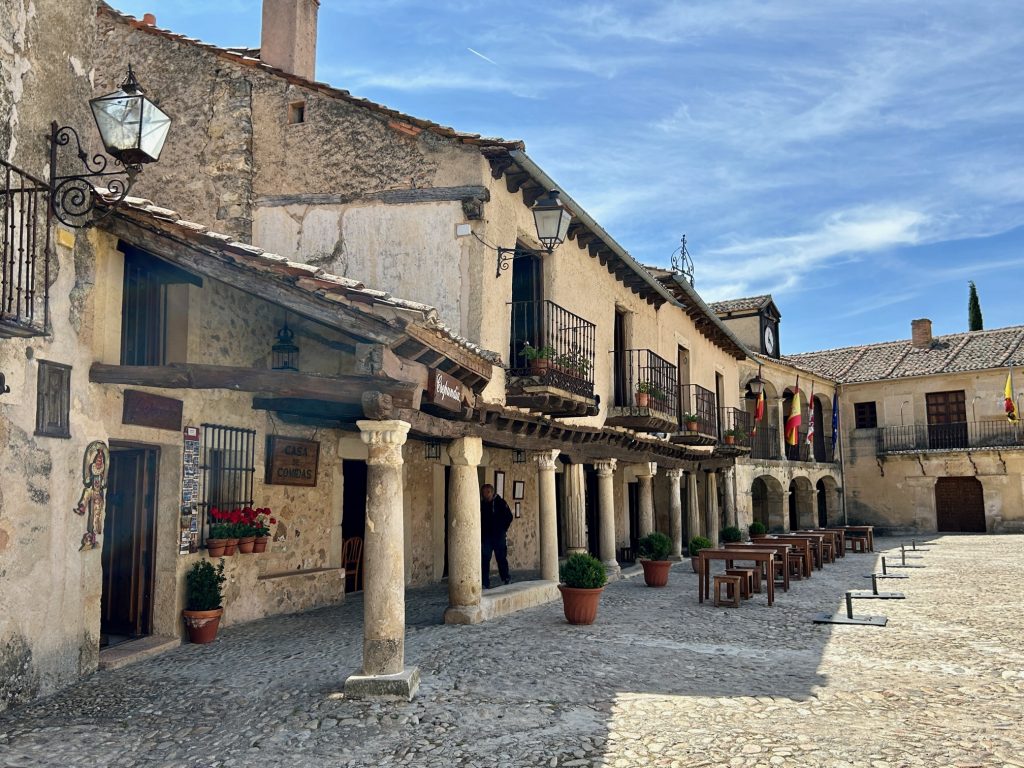
The east side of the square with it’s two bars...
The only thing I would add regarding the square is; it should be mandatory to sit and enjoy a beer and the free tapas from one of the two bars there. We were lucky; we visited on a week day and the landlord and other locals in the bar were keen to engage with us. I’m not sure how it would be at weekends when, we were told, the place gets packed with tourists from Madrid.
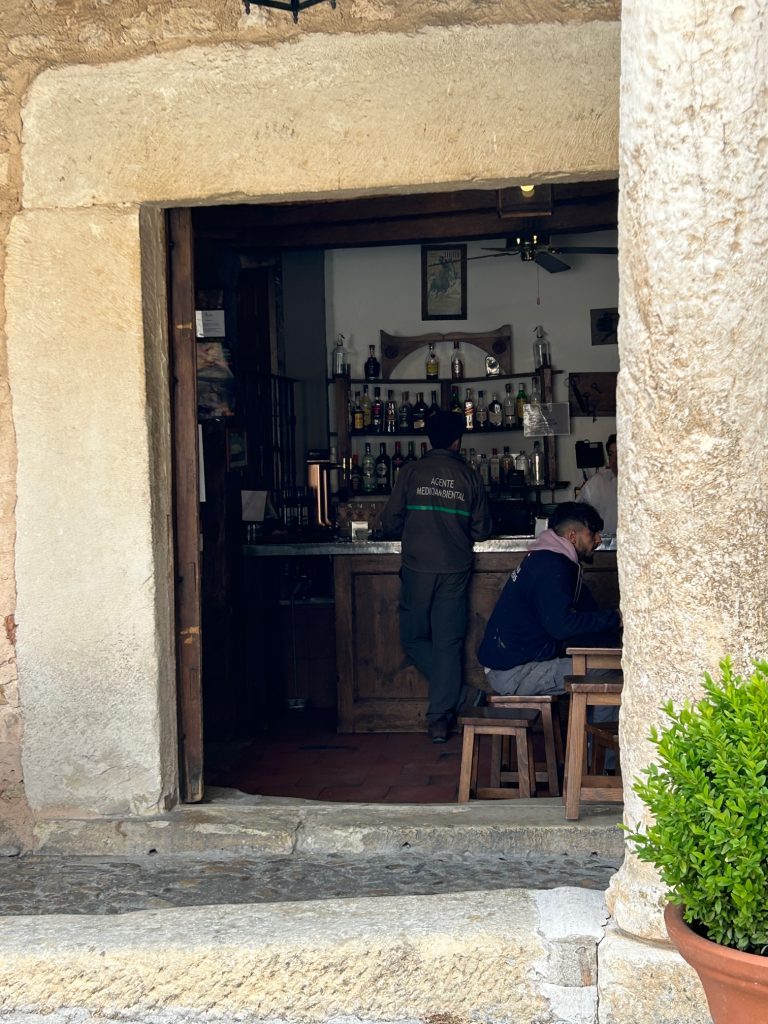
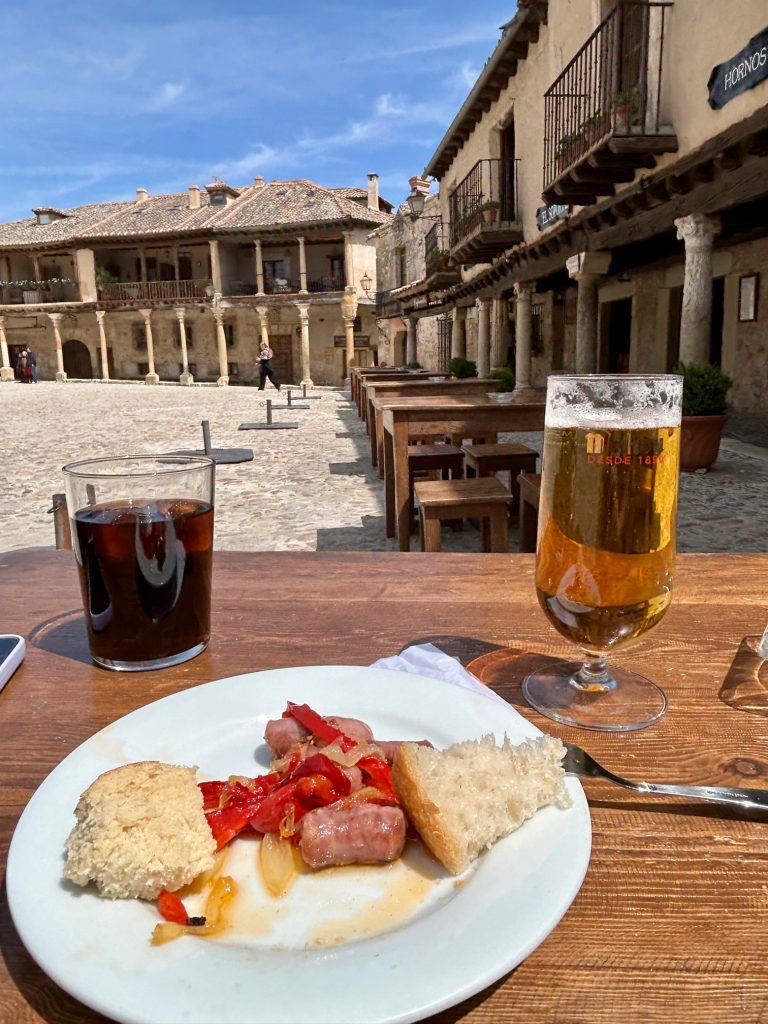
… and there’s the entrance to the bar we chose and a pork tapas.

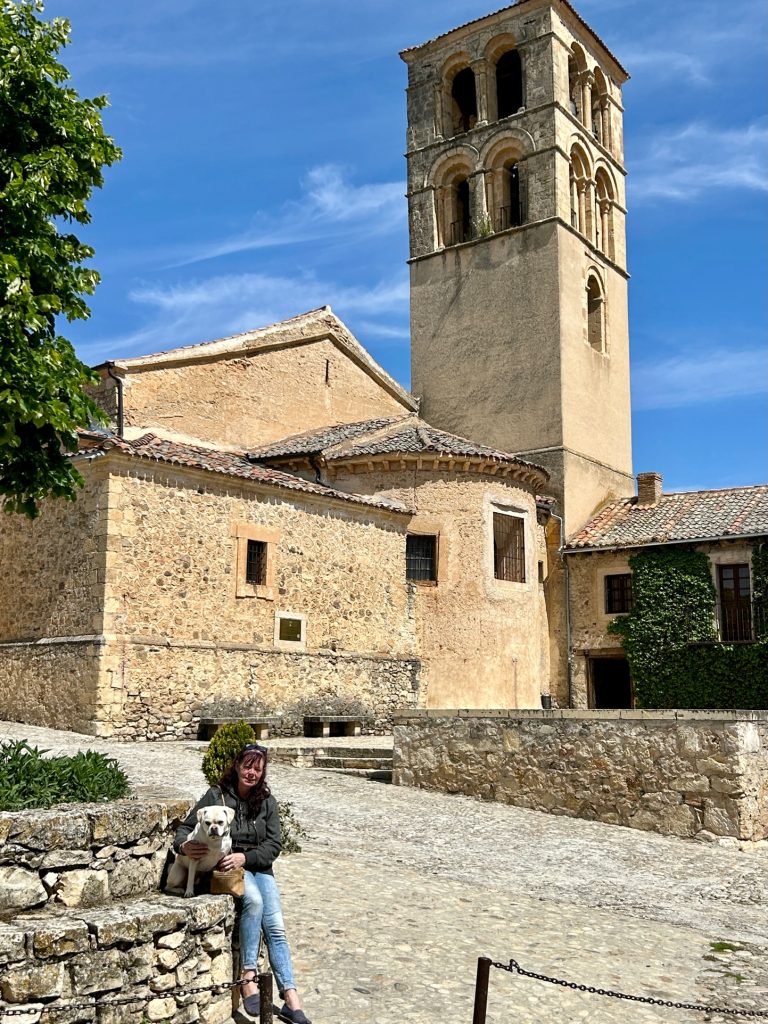
Two more views of the Church of St John the Baptist. The one on the left is from Calle Mayor which leads to the castle. The one on the right is from the Plaza del Alamo.
Having refreshed ourselves with a couple of beers and some tapas, we finished our visit with a walk through the village to the castle and then back through the Puerta de la Villa to the Van.
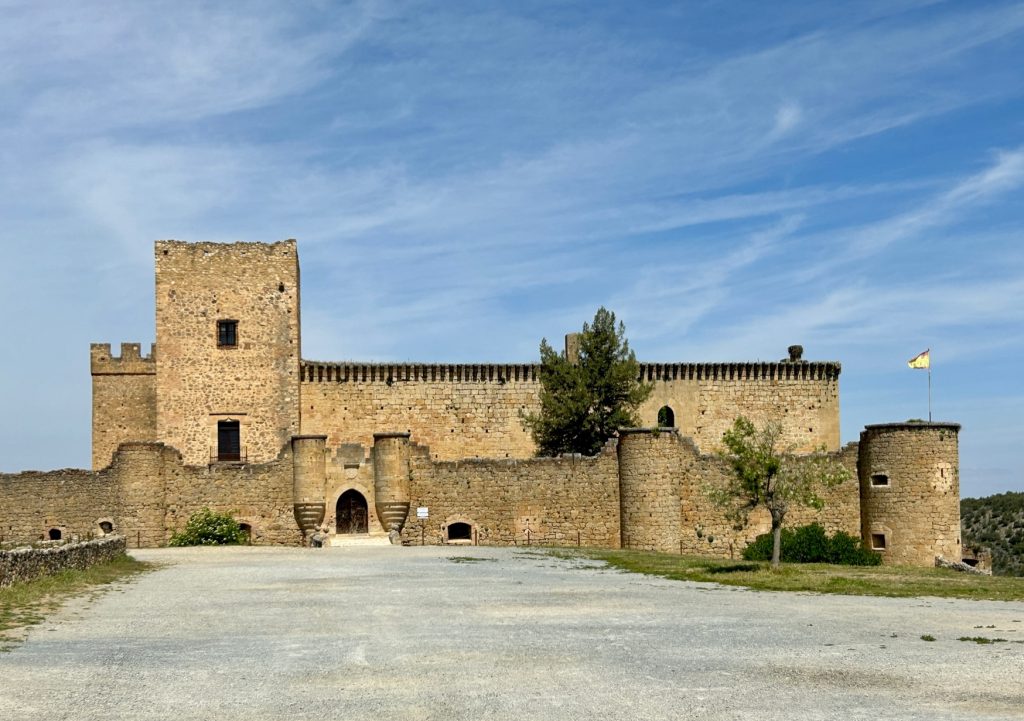
Pedraza’s Castle which was built in the 13th century but significantly altered during the 15th century. It is currently owned by the family of the Basque Country artist Ignacio Zuloaga. He renovated and lived in the castle until his death in 1945. The castle is now a museum / art gallery.

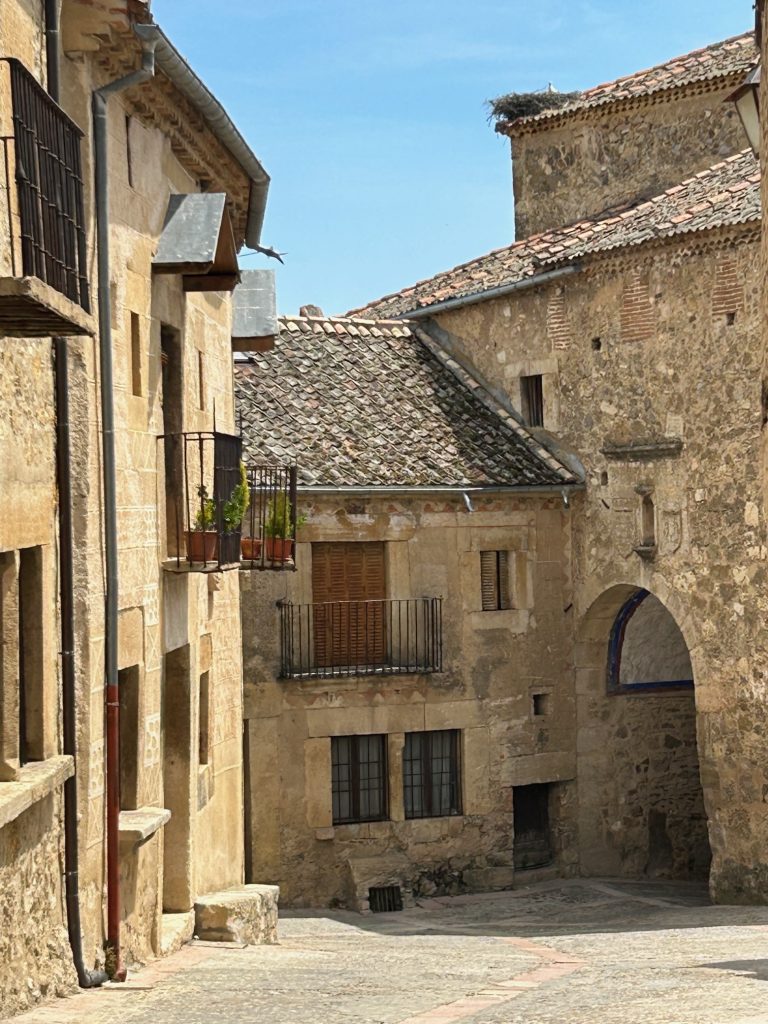
Typical street scenes in Pedraza…
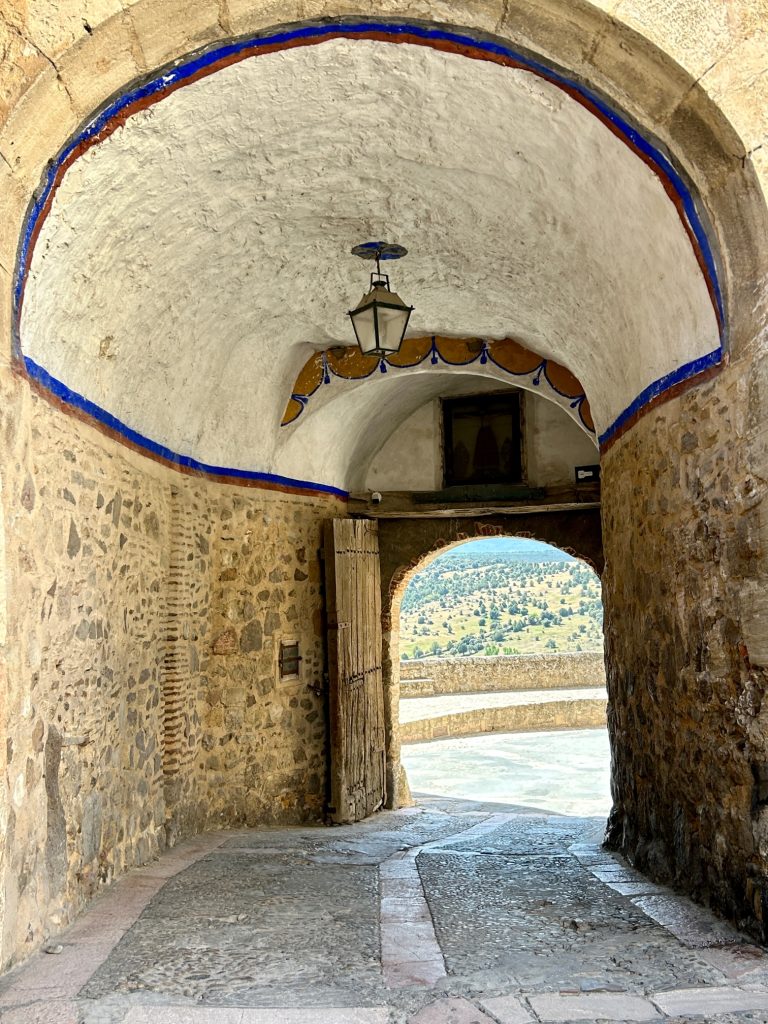
… and that’s the way back through the Puerta de la Villa to the Van (and Penafiel).
One last note for the calendar. On the first and second Saturday of July every year, the village holds ‘La Noche de las Velas’. It’s a bit of a fiesta which sees the village lights extinguished for 24 hours and 55,000 candles lit in their place while the village celebrates life with a series of music concerts and flamenco dancing. You cannot just turn up for this celebration. Access is limited to 5,000 people who must apply online for tickets towards the end of May. Now that would be spectacular.


